August 9, 2020
Martha O'Kennon
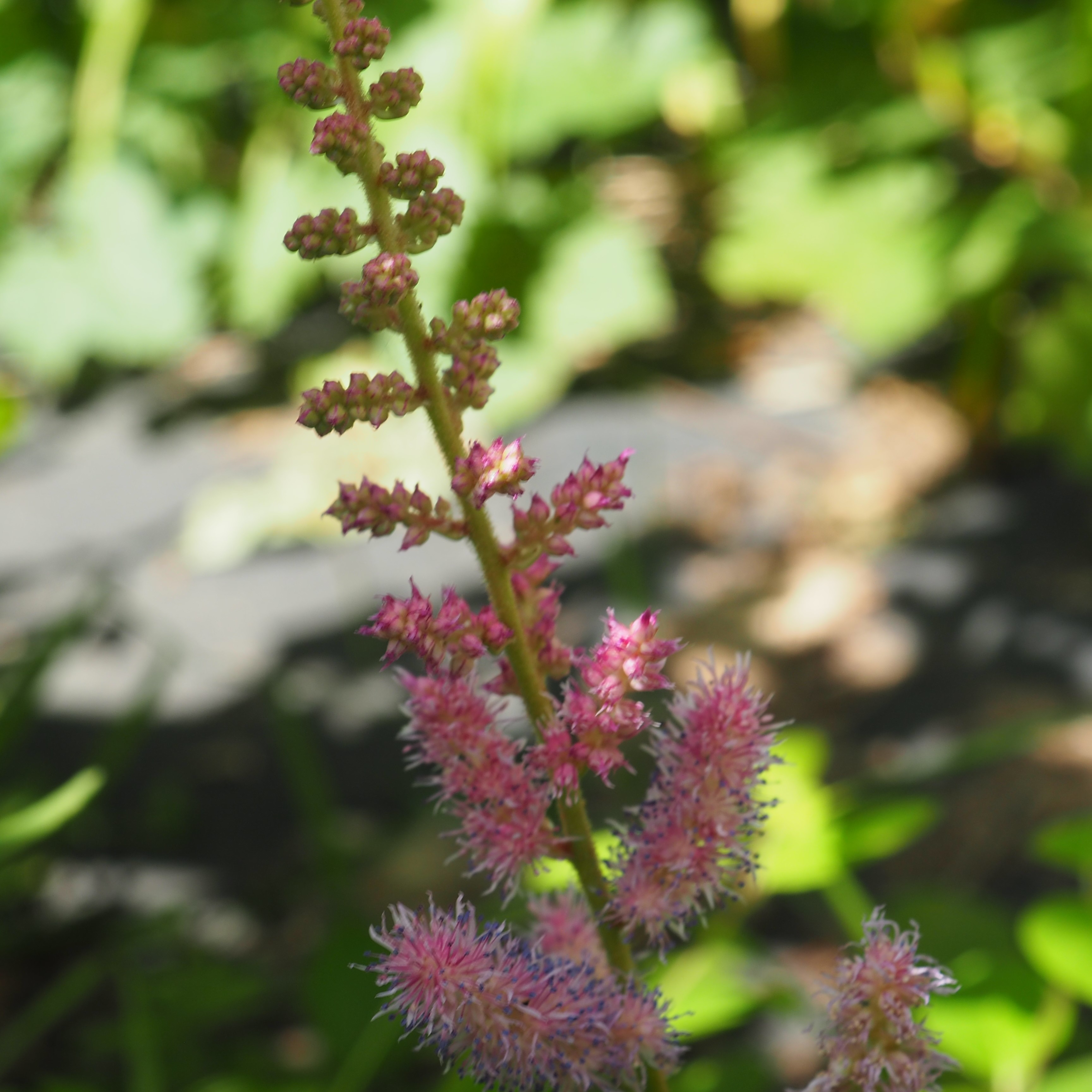
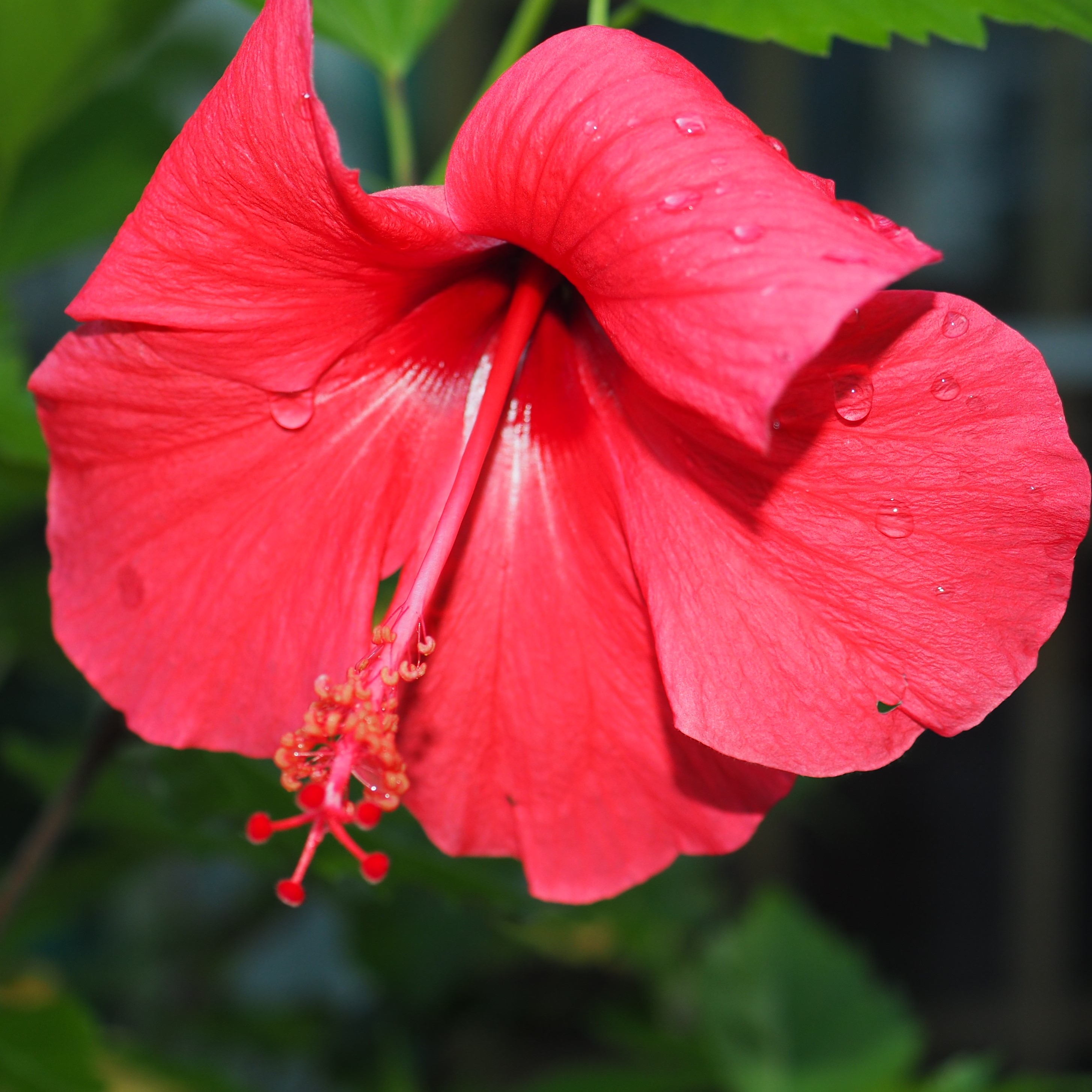
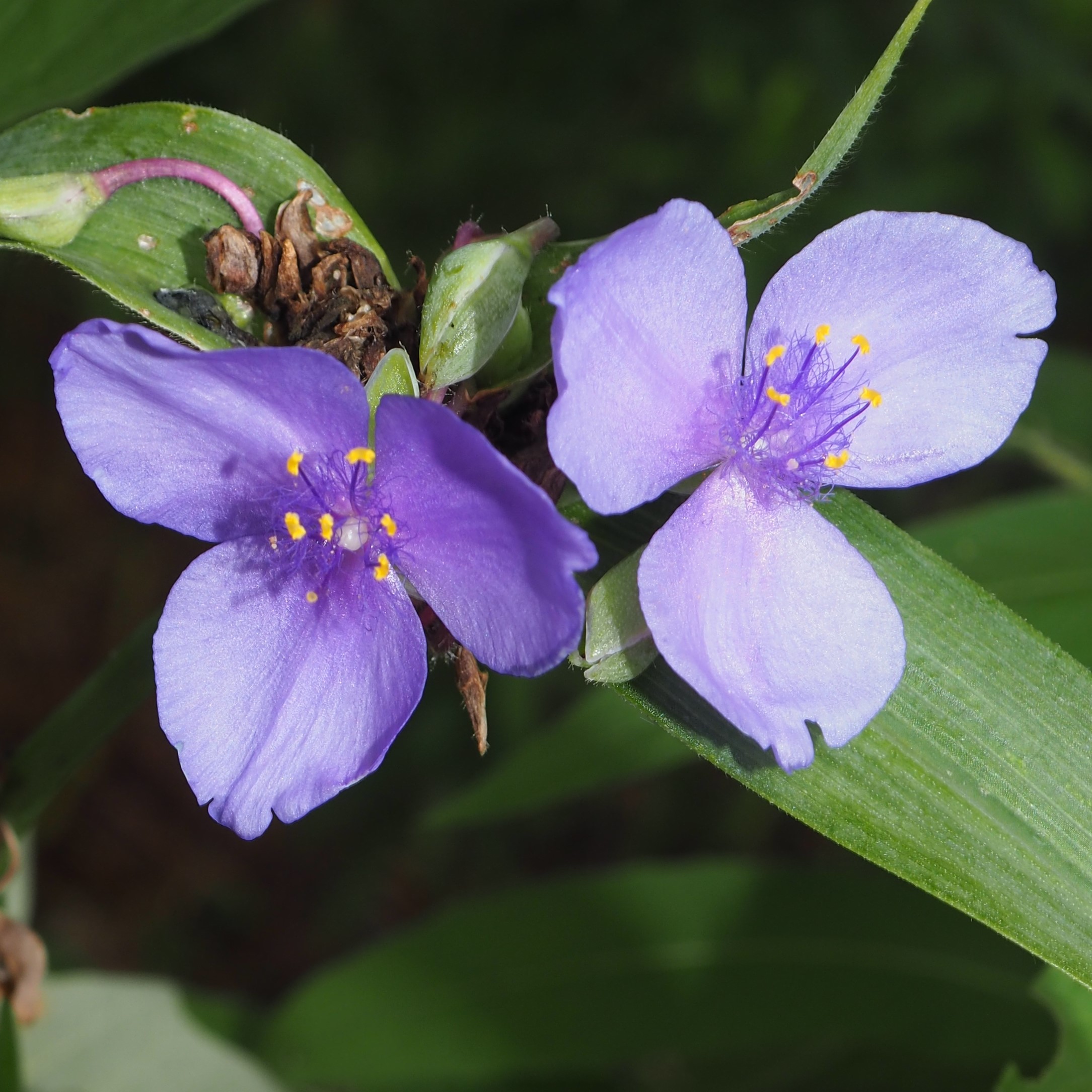
This past week has finally begun to cool down a bit. The windows are open and it's easier to breathe.
This is the dainty miniature Astilbe Betty Beese gave me so many years ago. Second, the Hibiscus that is starting to bloom after that long hot spell. And I can still find a Spiderwort blossom here and there.
Remember that there is information in the name of the file for each image. You can see it by mousing over the image - look at the lower left of the screen. Or you can click on the image to get to the (usually) larger image. Then the info is displayed in the address line above. Sometimes the second click will actually display a different view of the original image.
Here are some of our favorite ants. You can see them most days. First belongs to the genus Camponotus (generic Carpenter Ants). Second and third are the Eastern Black Carpenter Ant, in the same genus Camponotus. Number 3 is active running about amongst the Entylia carinata nymphs, milking them for their sweet honeydew. I'll show you a video of this phenomenon when we get to the Treehoppers themselves.
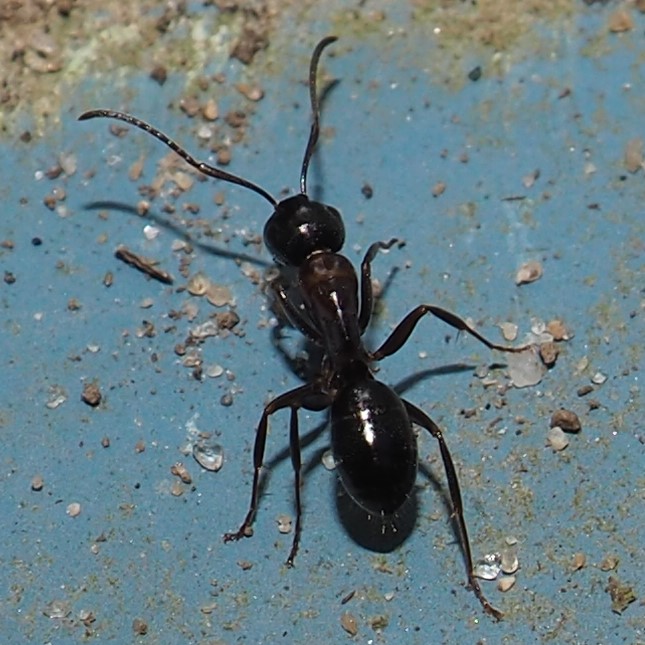
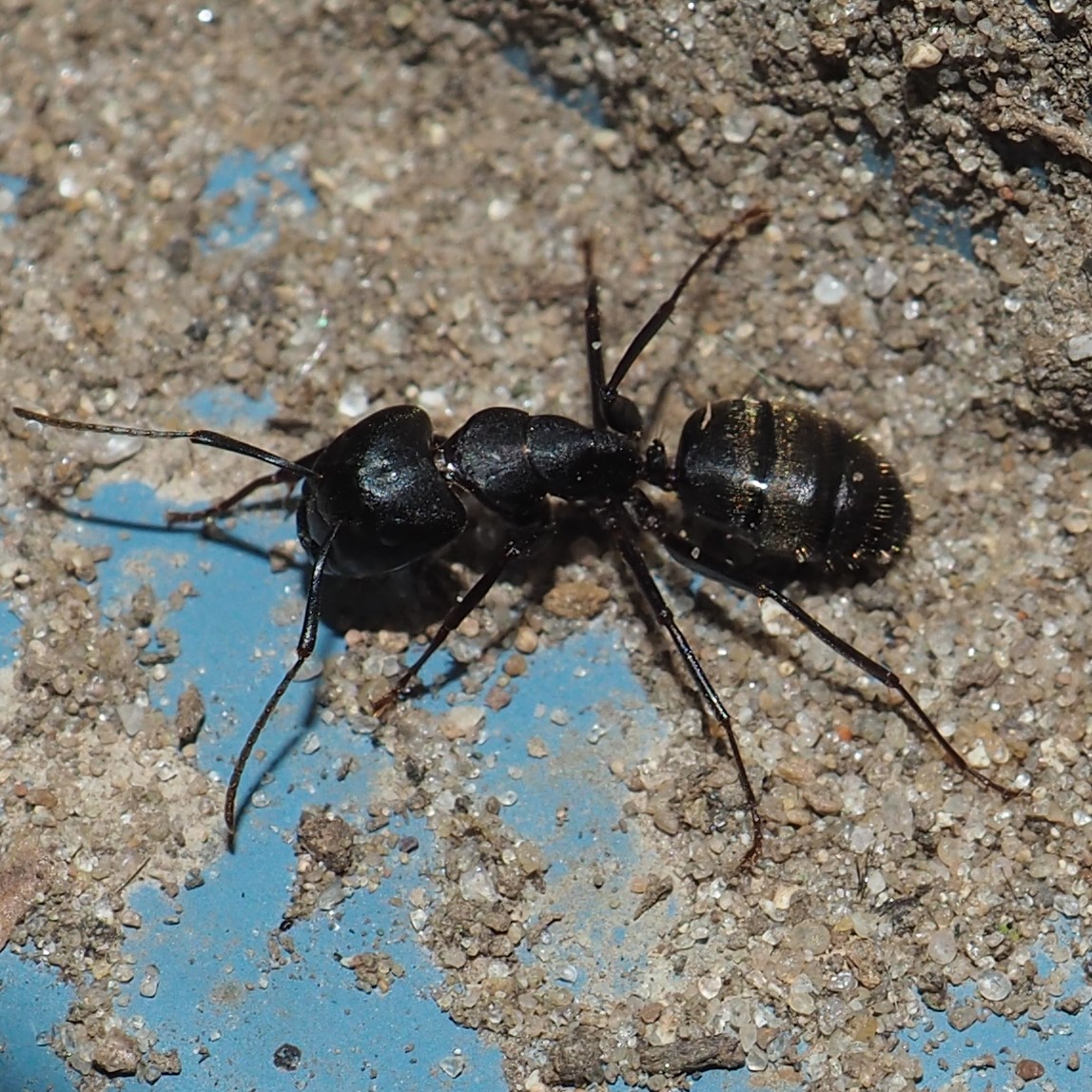

Here is probably a Silky Field Ant. I haven't seen one for so long.

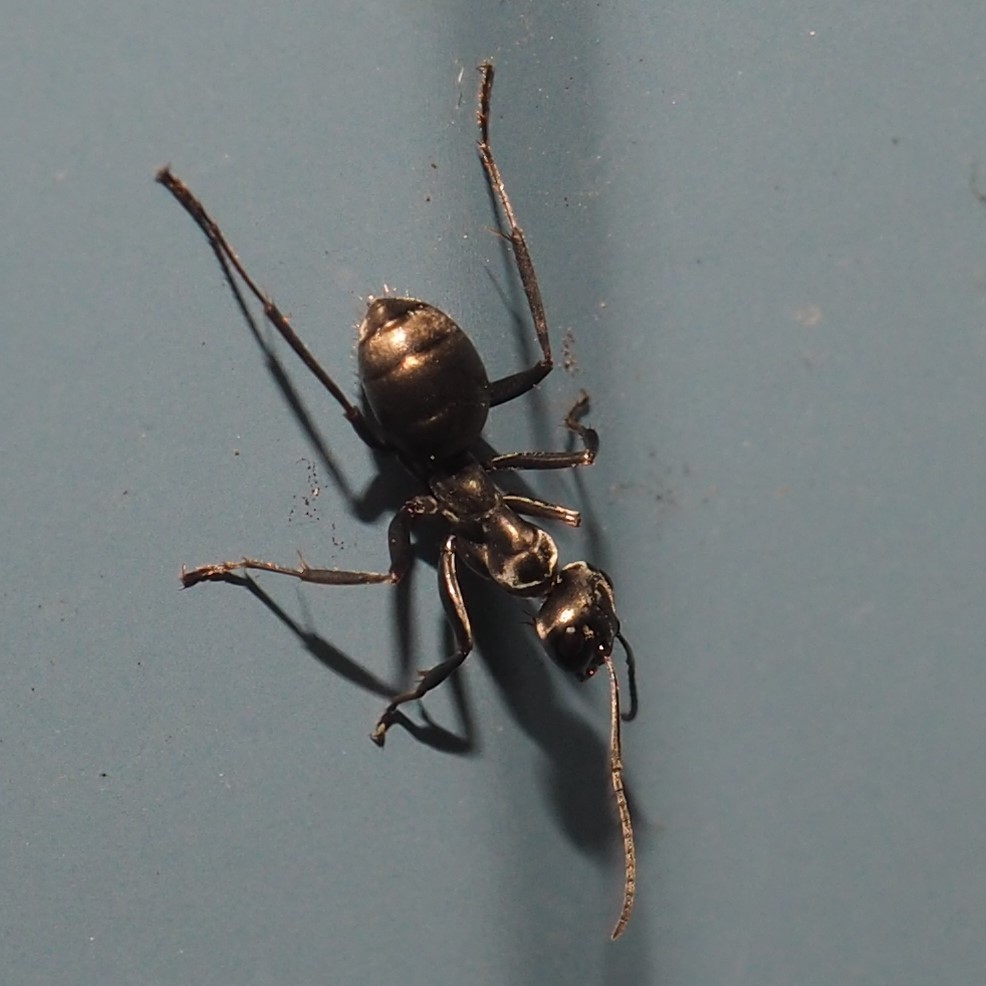
Last week I showed you a picture of a stalk of Goldenrod with two kinds of Aphids on it. The two colonies seem to be doing fine so far. But there are other stalks with Green Aphids and Aphid Mummies. And yet other sections where there are apparently only Mummies.
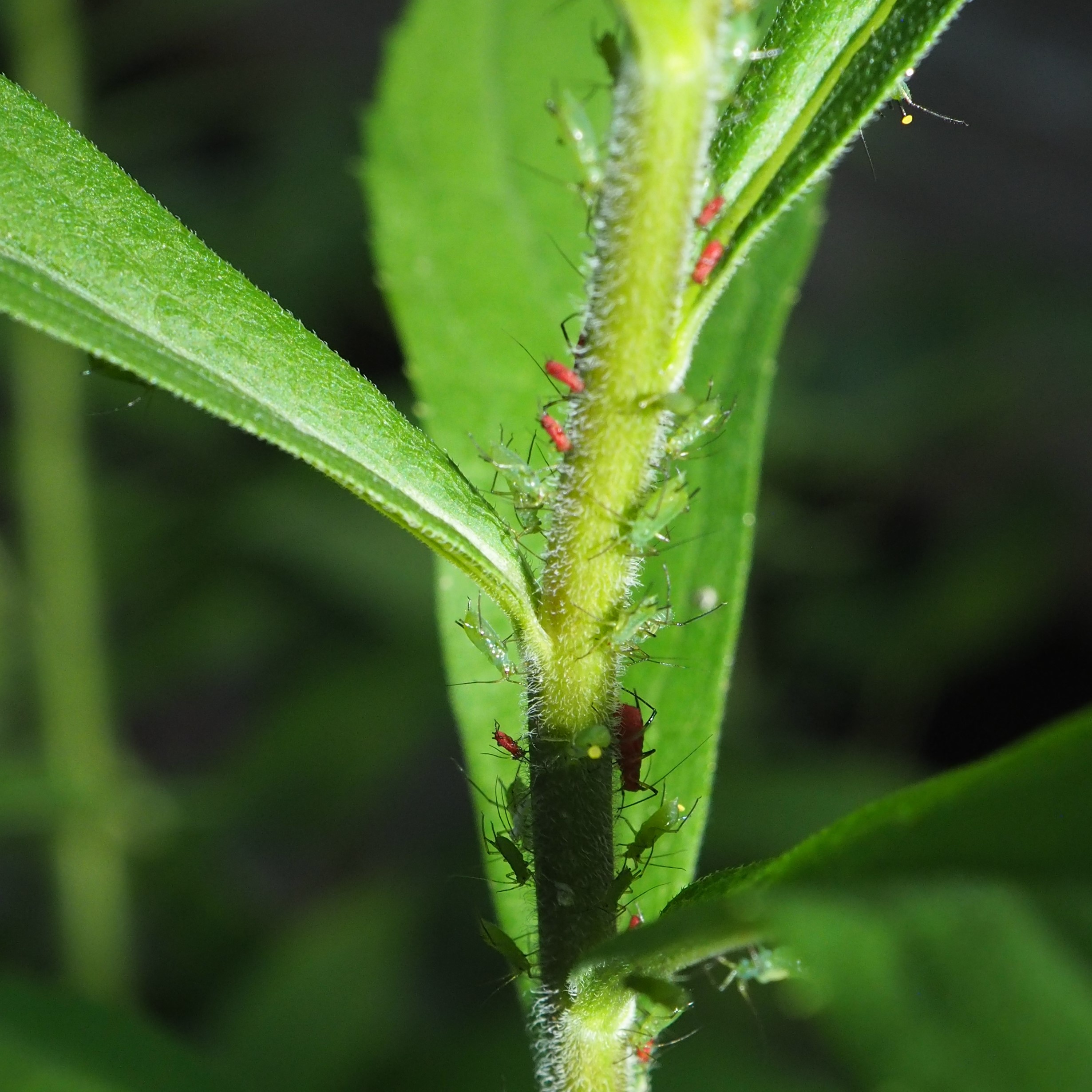

.jpg)
Among the Barklice, Graphopsocus cruciatus now make up almost all the nymphs, but I don't think I saw any adults all week. As for Polypsocus corruptus, only a handful showed up (picture 2). But the other day I saw an adult P. corruptus on some greenery. This is the first Barklouse I've seen away from the Wall.
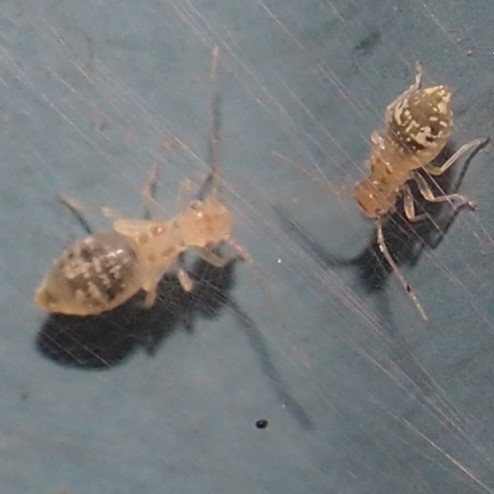
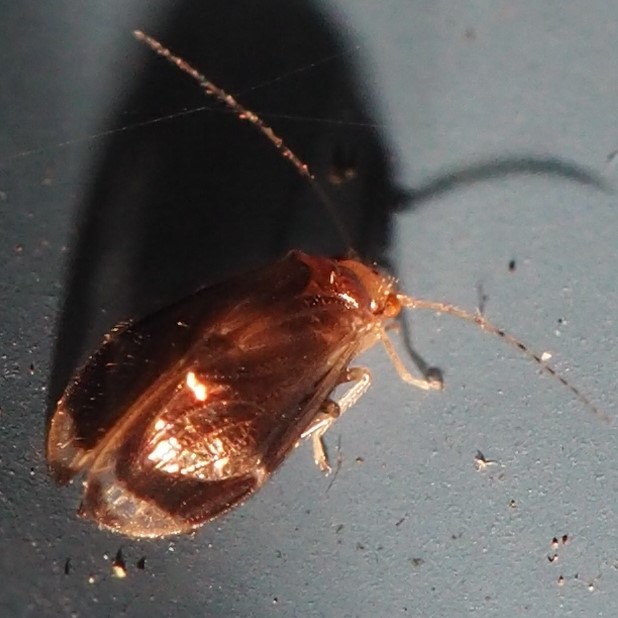
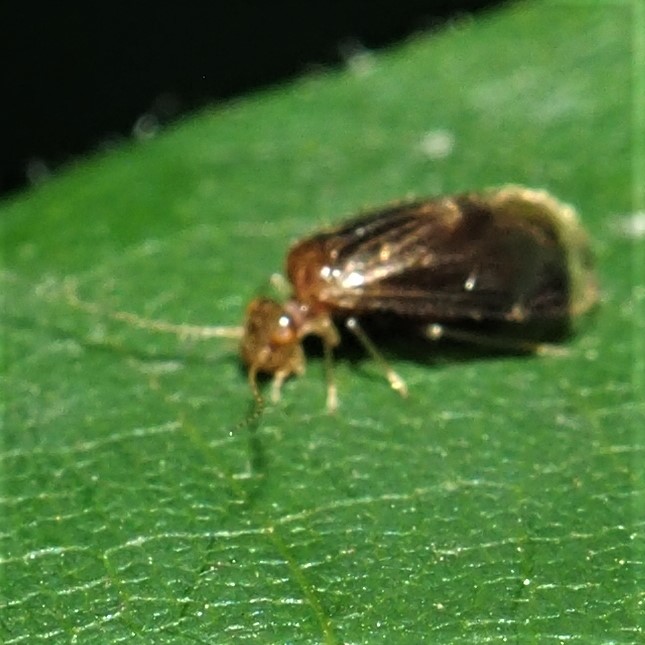
Echmeptyrex hageni has become a staple. In fact, I think it was the MOST seen adult Barklouse I saw all last week. I did see one or two Metylophorus novaescotiae. But we've also seen a number of new species, like this dark, almost black, one.
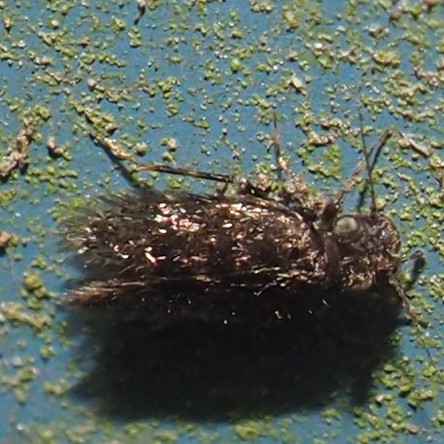
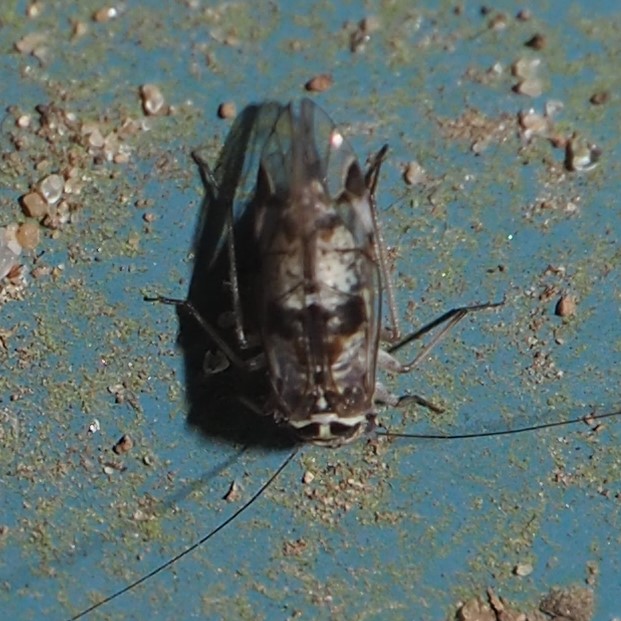
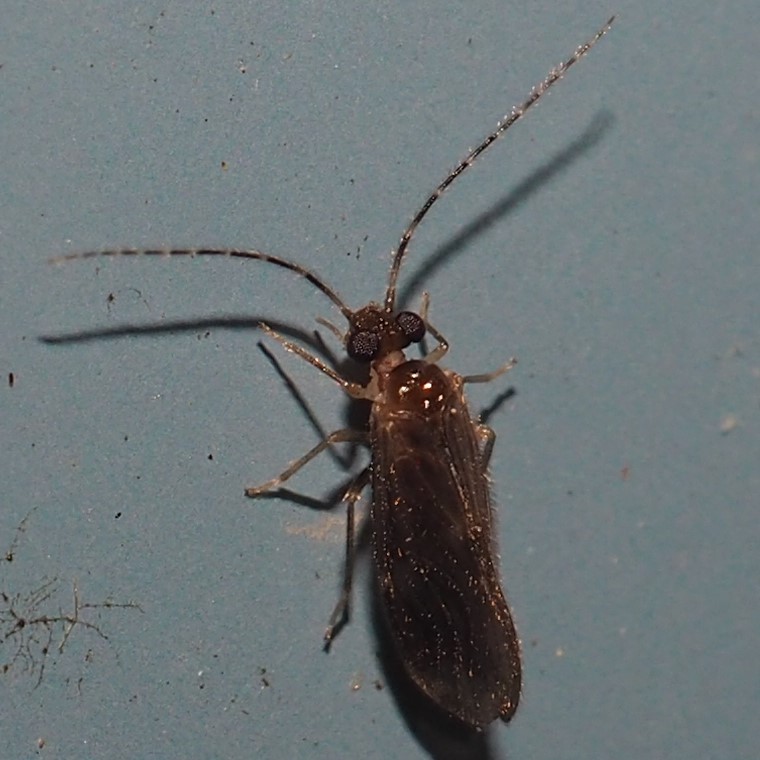
Another new one, but an old friend, is the Barklouse called Tree Cattle, which I haven't seen in years. This one first appeared on the screen of one of the shop windows. Then later, a more recognizable one showed up on the wall itself.
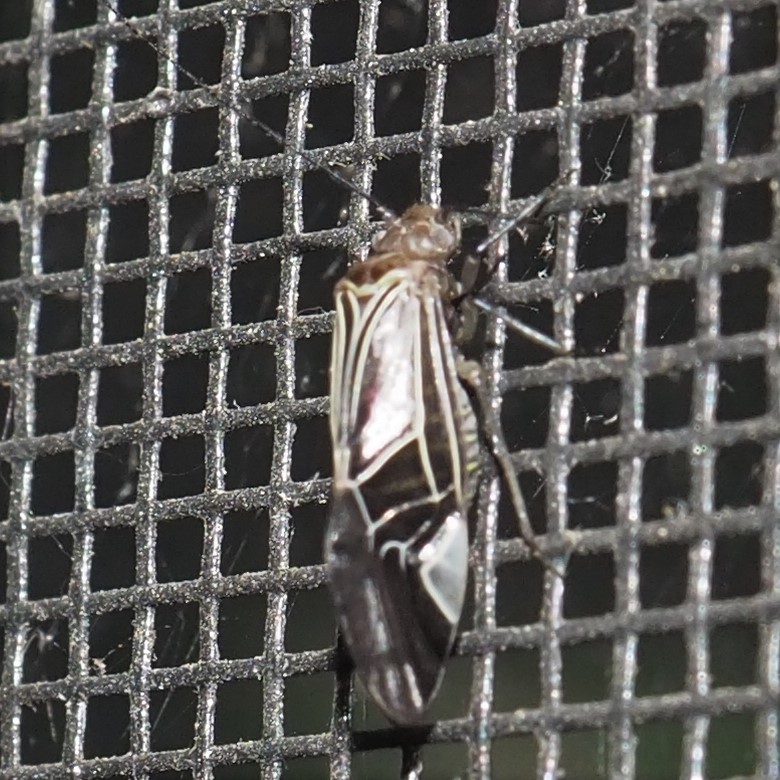
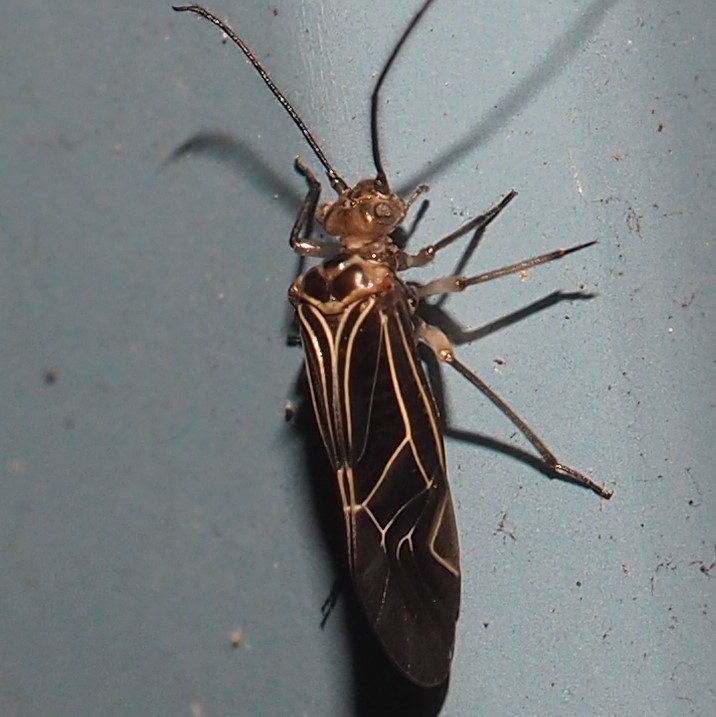
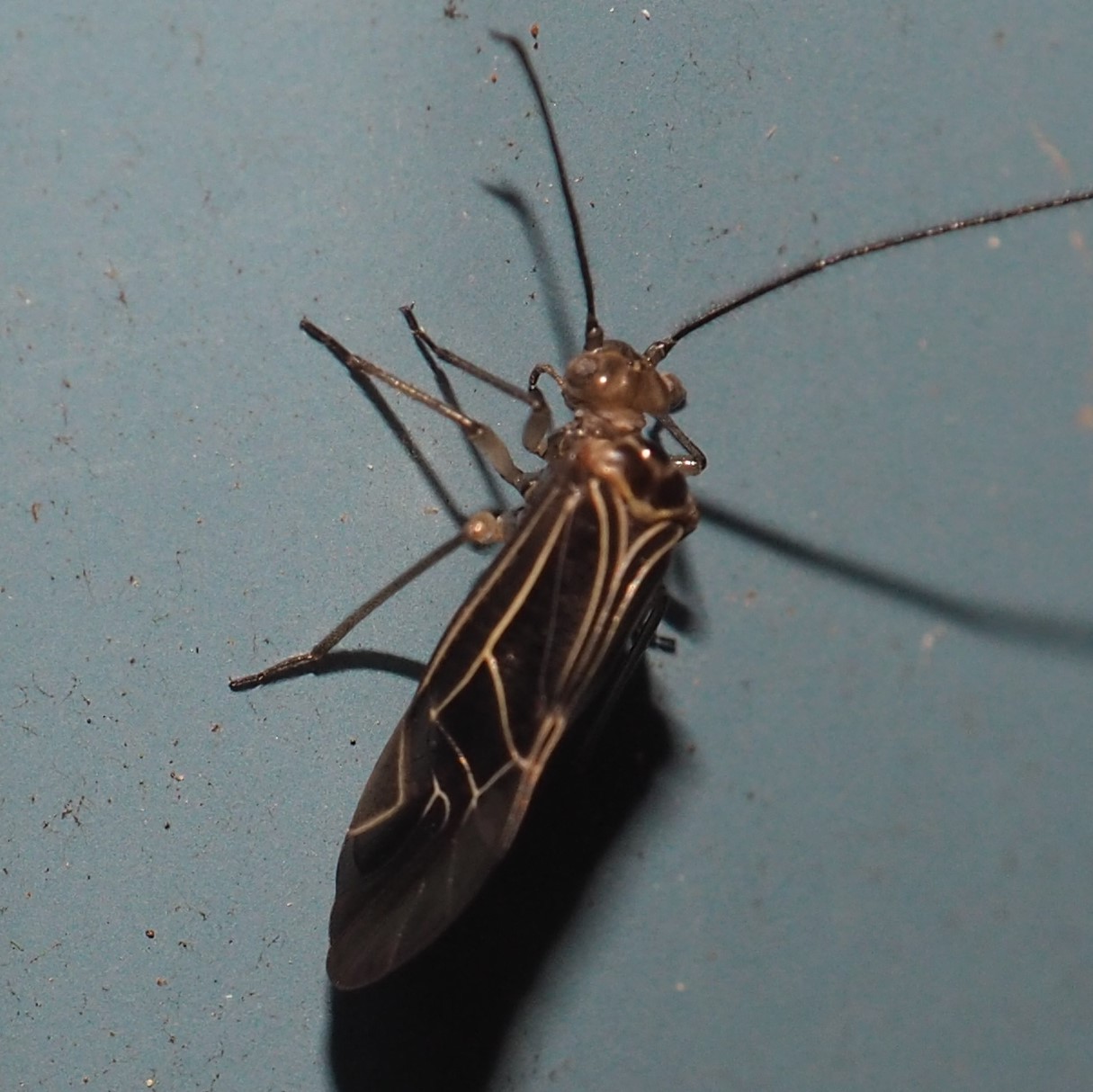
I've also begun to see another variety of Barklouse that I used to see fairly regularly. Last week I tried to pass off this first picture as Flies Mating. But Scott Shreve on iNat suggested that they might actually be Lachesilla. I compared wing patterns and found that these creatures do match up as Lachesilla Barklice! Now I'm thinking that these gold-ish Barklice are also members of that group. The third picture is another mystery. Click on it to see what looks like a nursery full of the tiniest creatures, many of them greenish. Now if only I knew where this assemblage was!
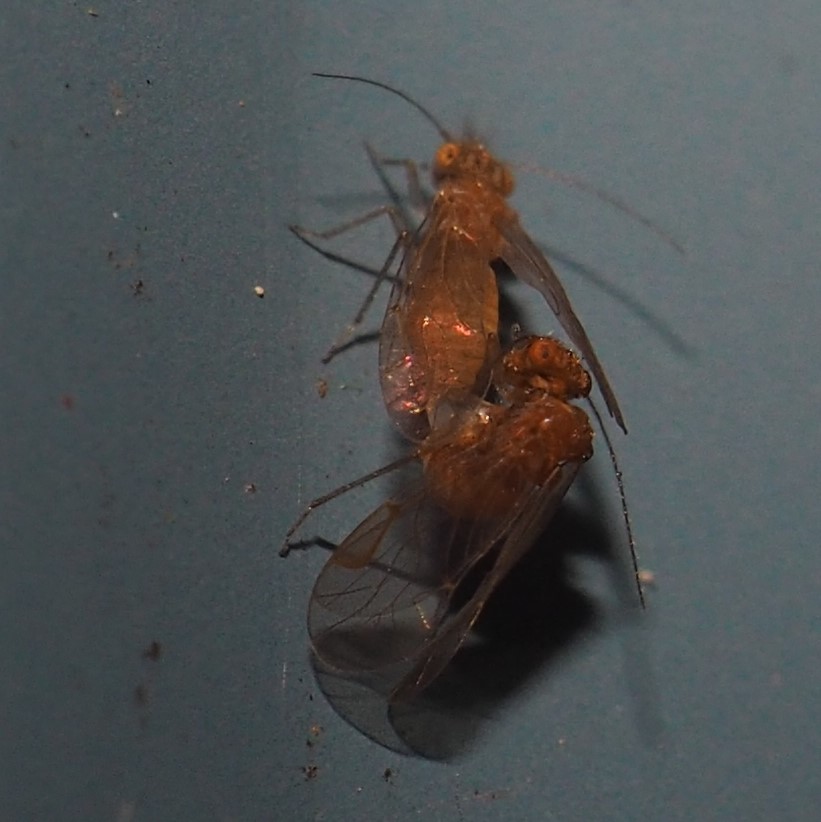
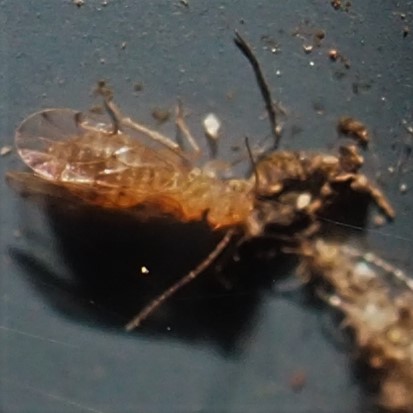
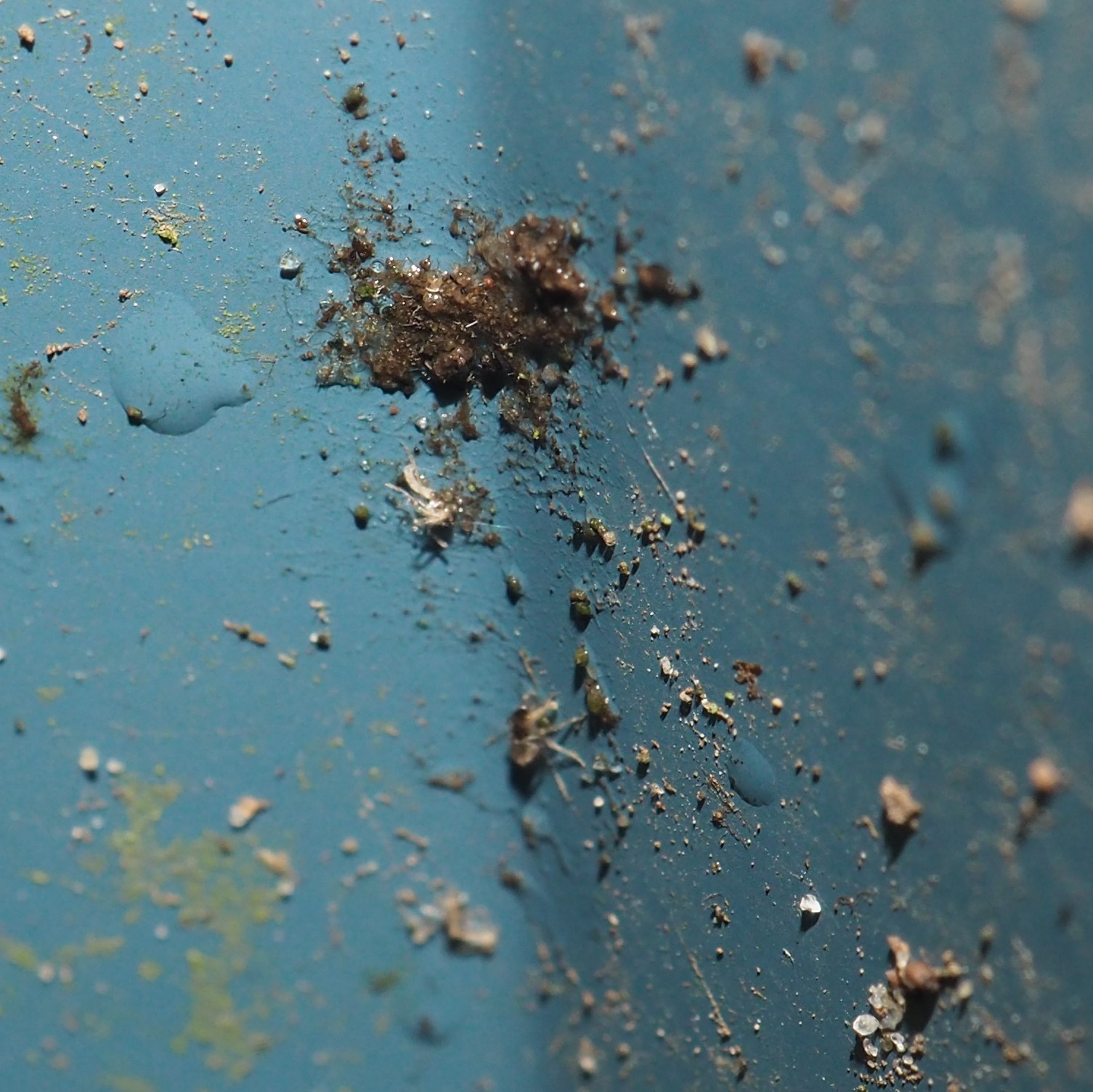
There were quite a few Beetles out there. First, a tiny Flea Beetle. Then a very small Red one that flew away as soon as it spotted me. Third, another fuzzy picture of a different little black Beetle.
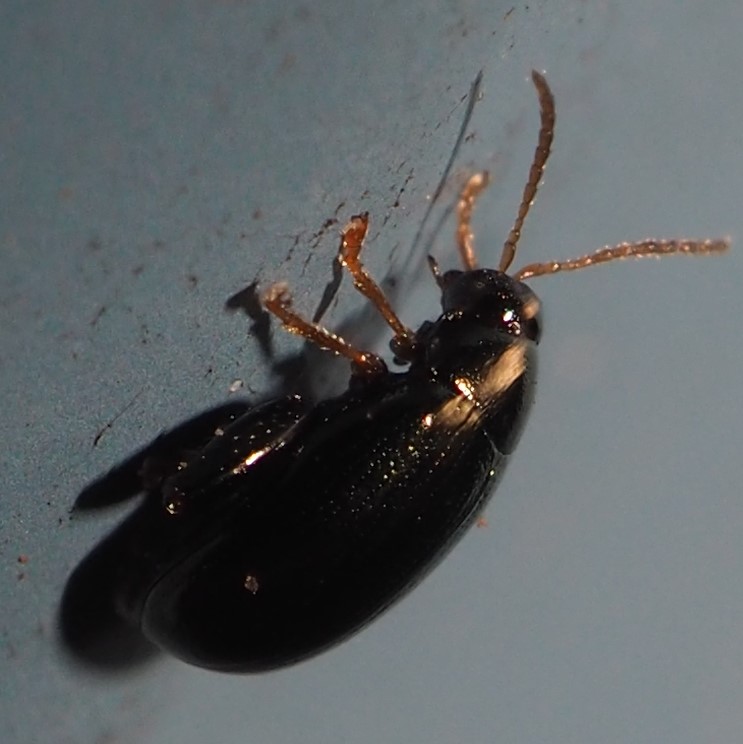
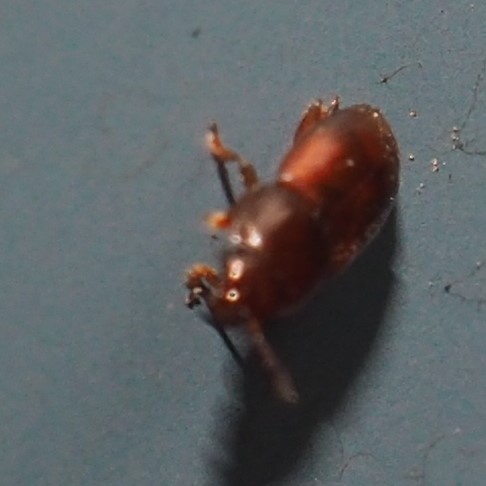

A Tumbling Flower Beetle. An Asian Lady Beetle. And the Lechriops oculatus Weevil.
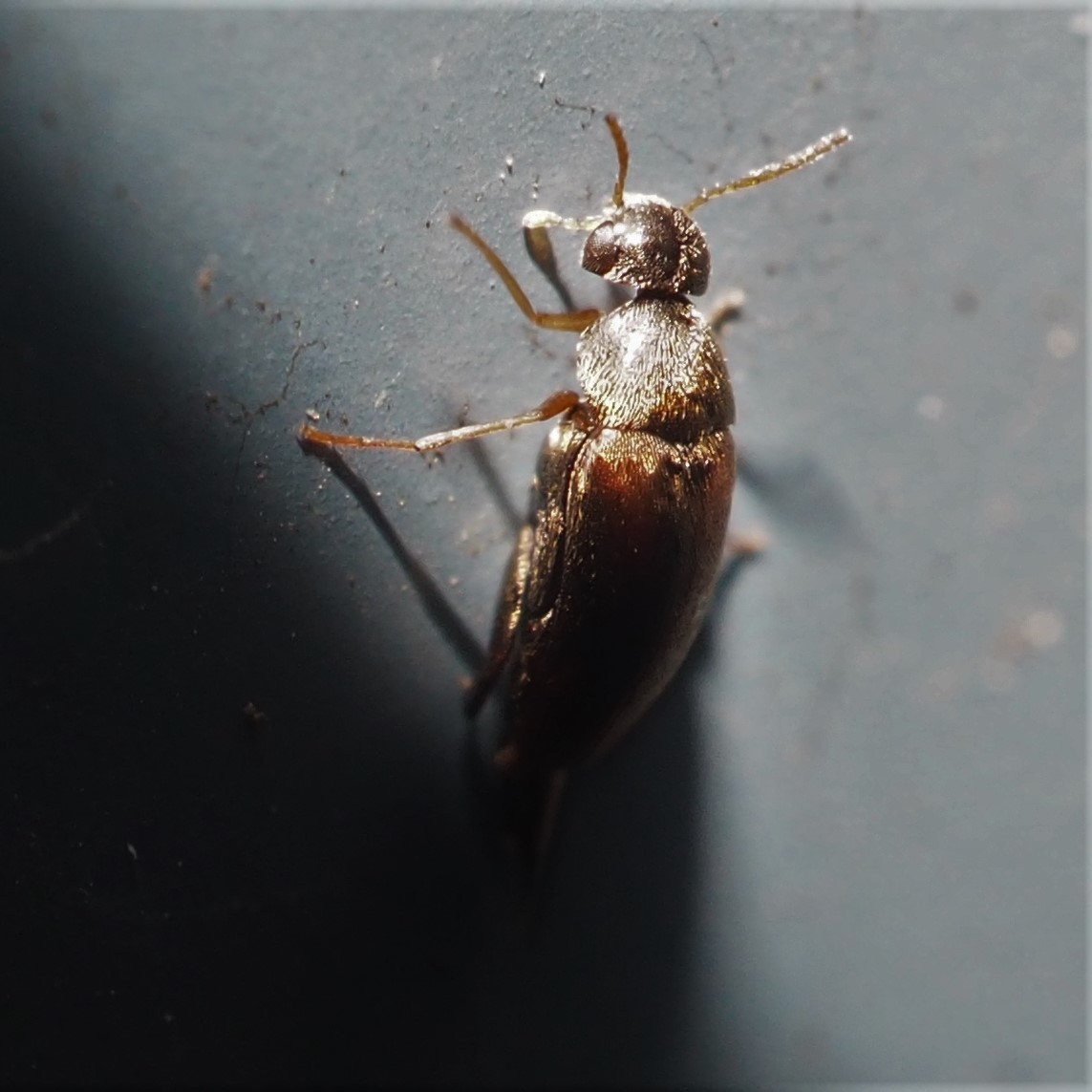
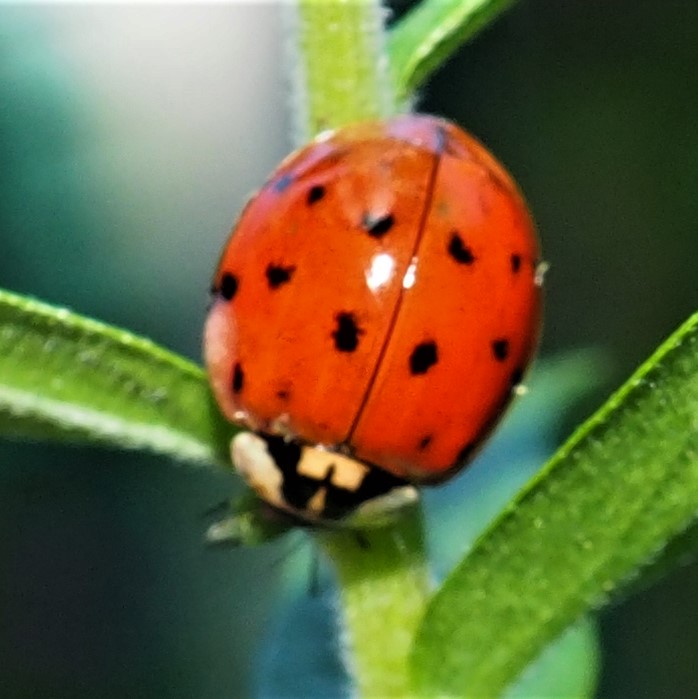
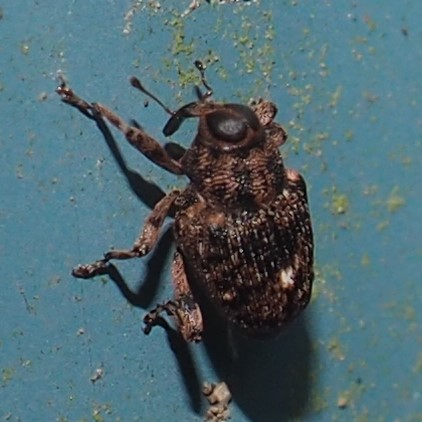
Here's a flying mystery. This creature was already folding its wings when it landed. Surprise! It was one of those ever-present Redbud Bruchids. Picture 3 shows one in a light that really heightens its interesting striped pattern.
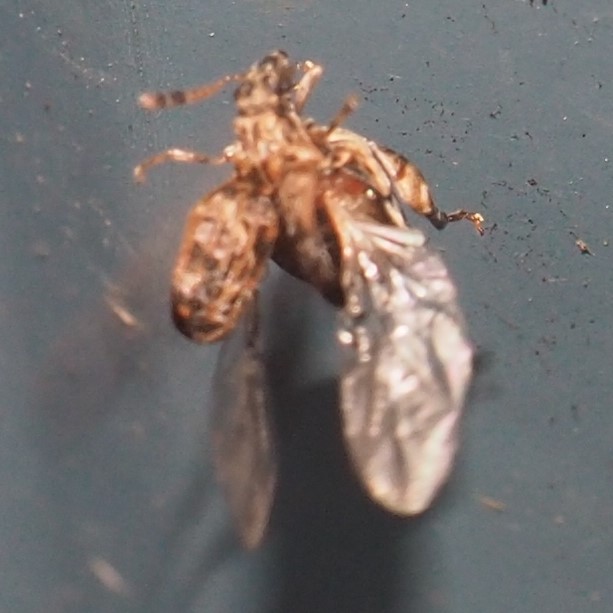
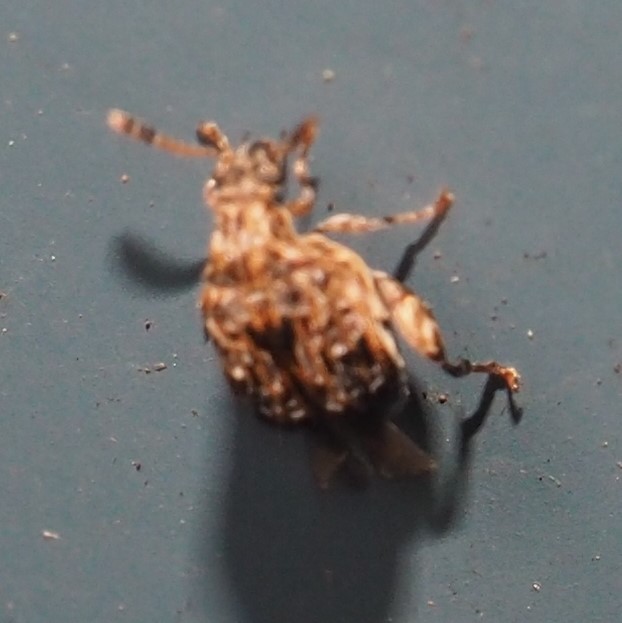
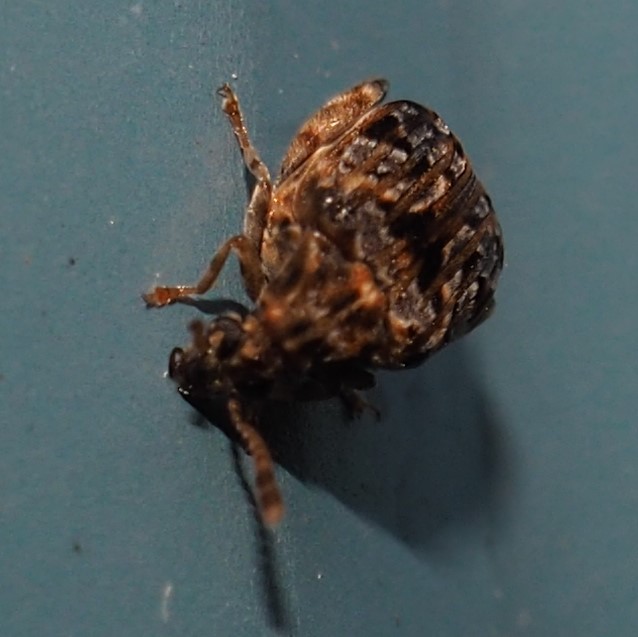
Here we are into the Bugs again! Here we see a very small Assassin Bug (Zelus luridus) nymph. Another, a little bigger (cool oxymoron, huh?). And an adult! I don't see any red in its eyes, but it only has two shoulder-spikes, so must not be Z. tetracanthus.
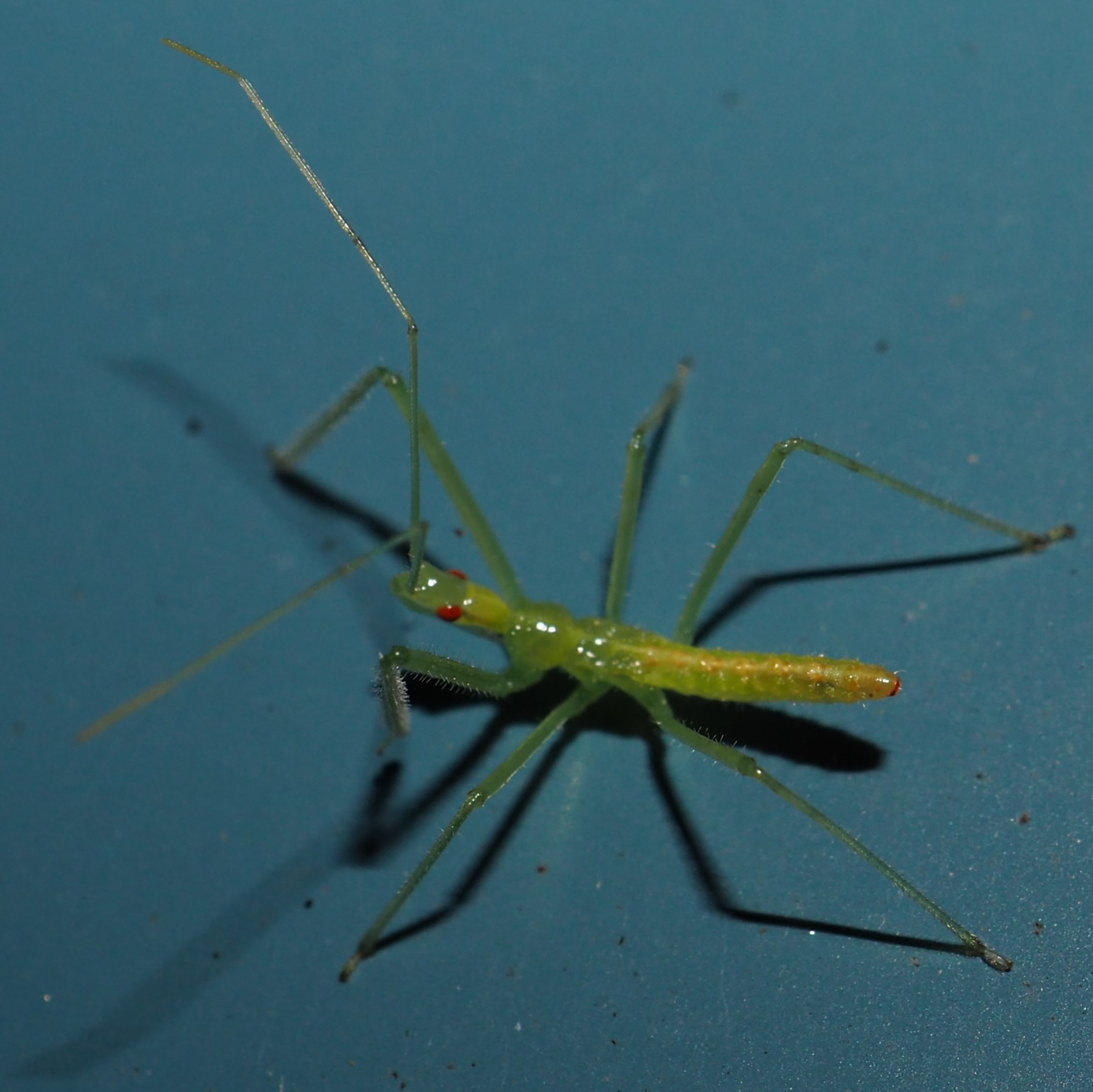
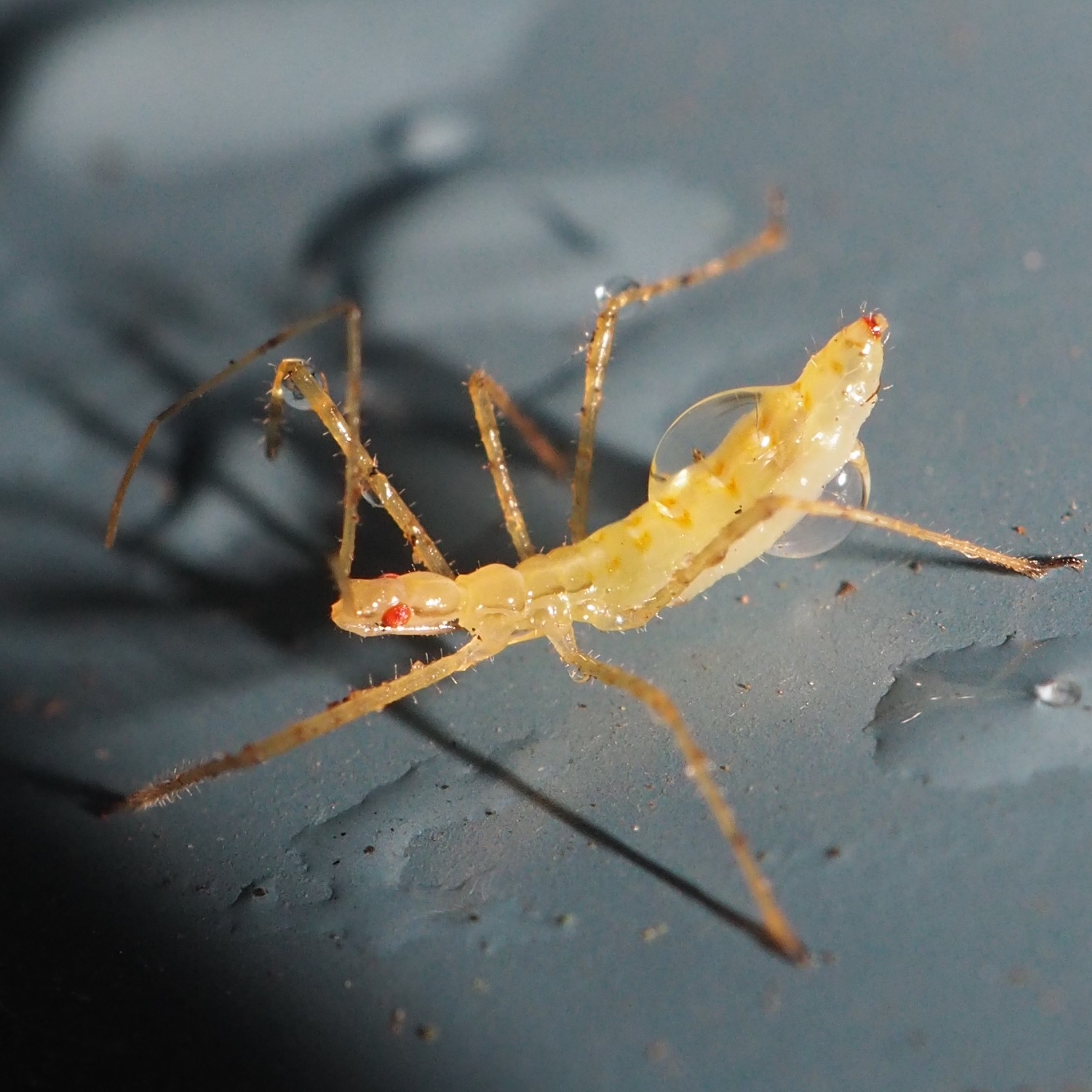
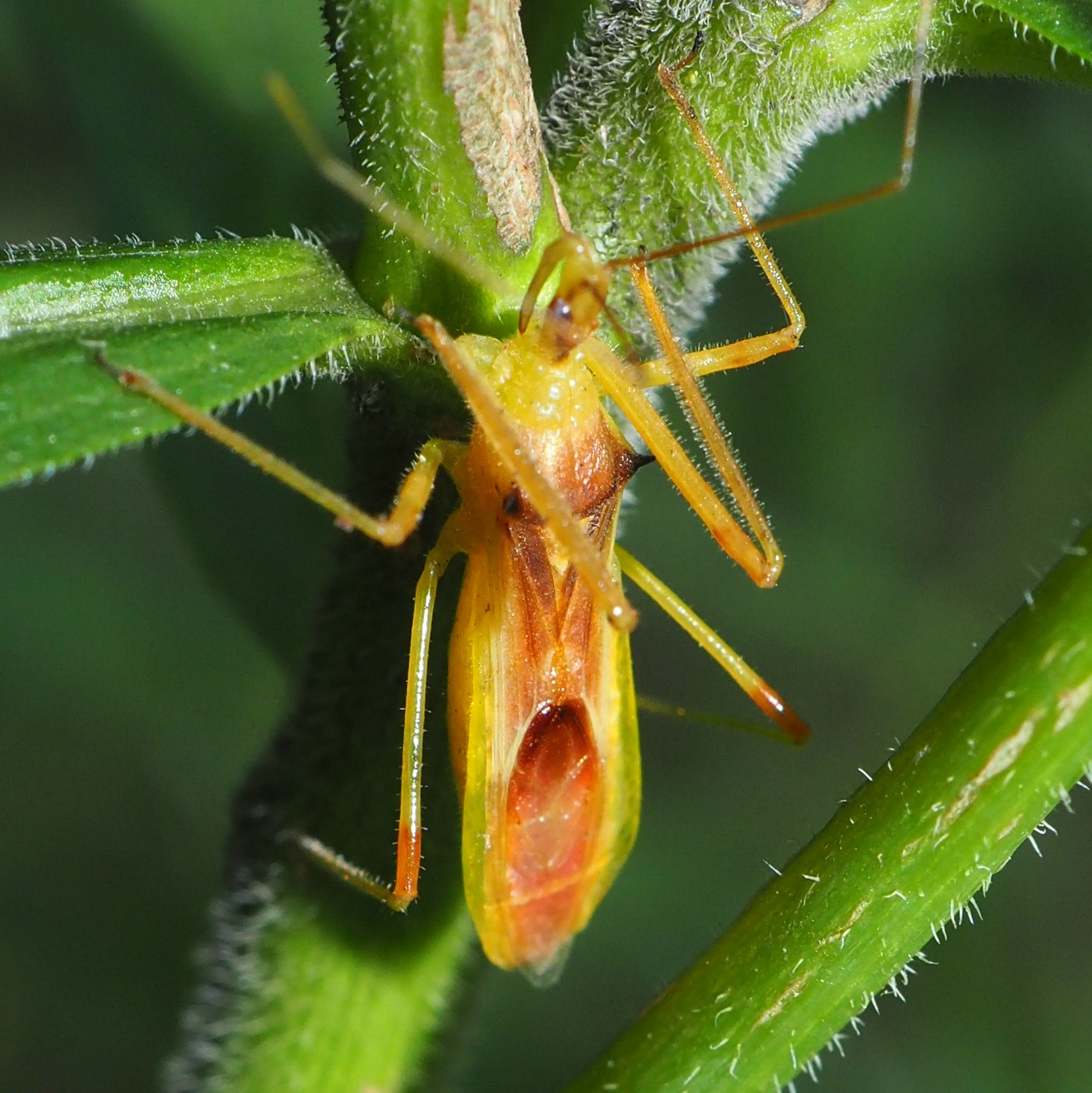
Here are a couple of Plant Bugs. First may be in the genus Lygus. Second and third MAY be related to the one we followed for so long.
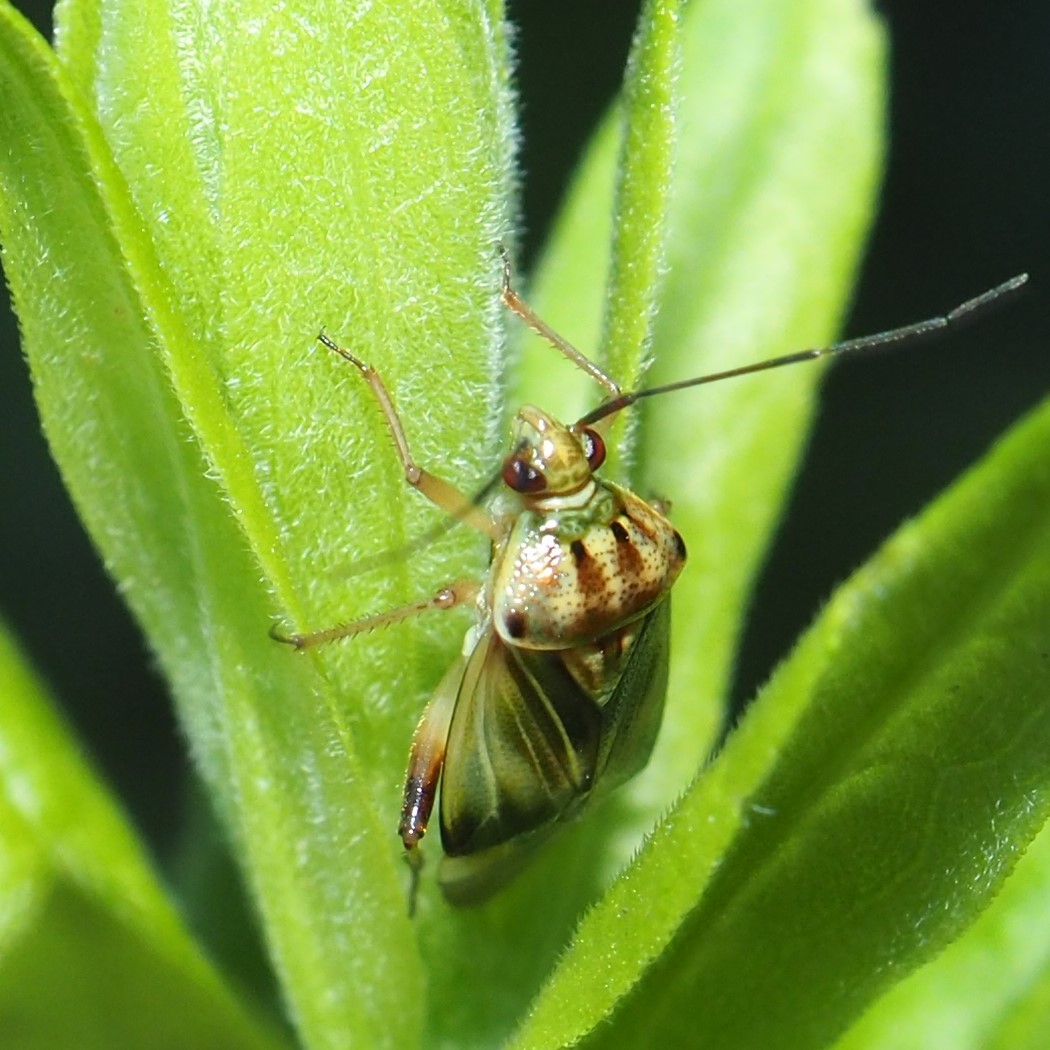
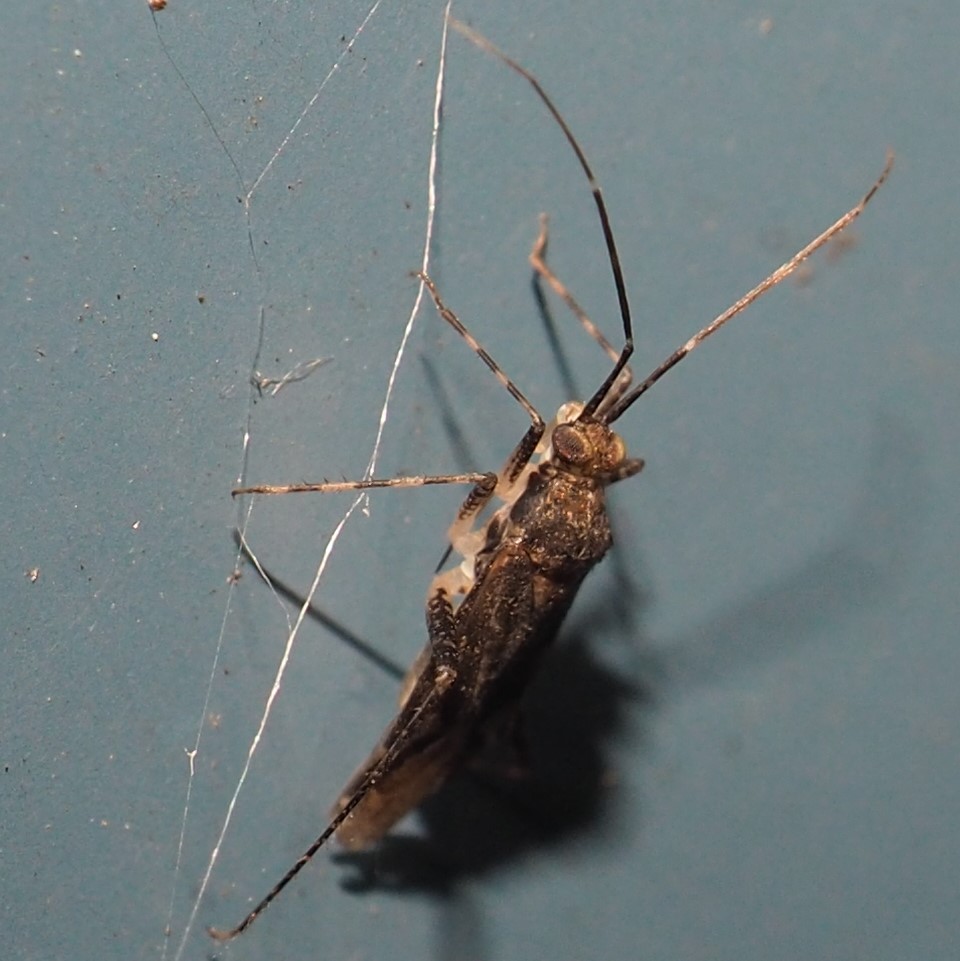
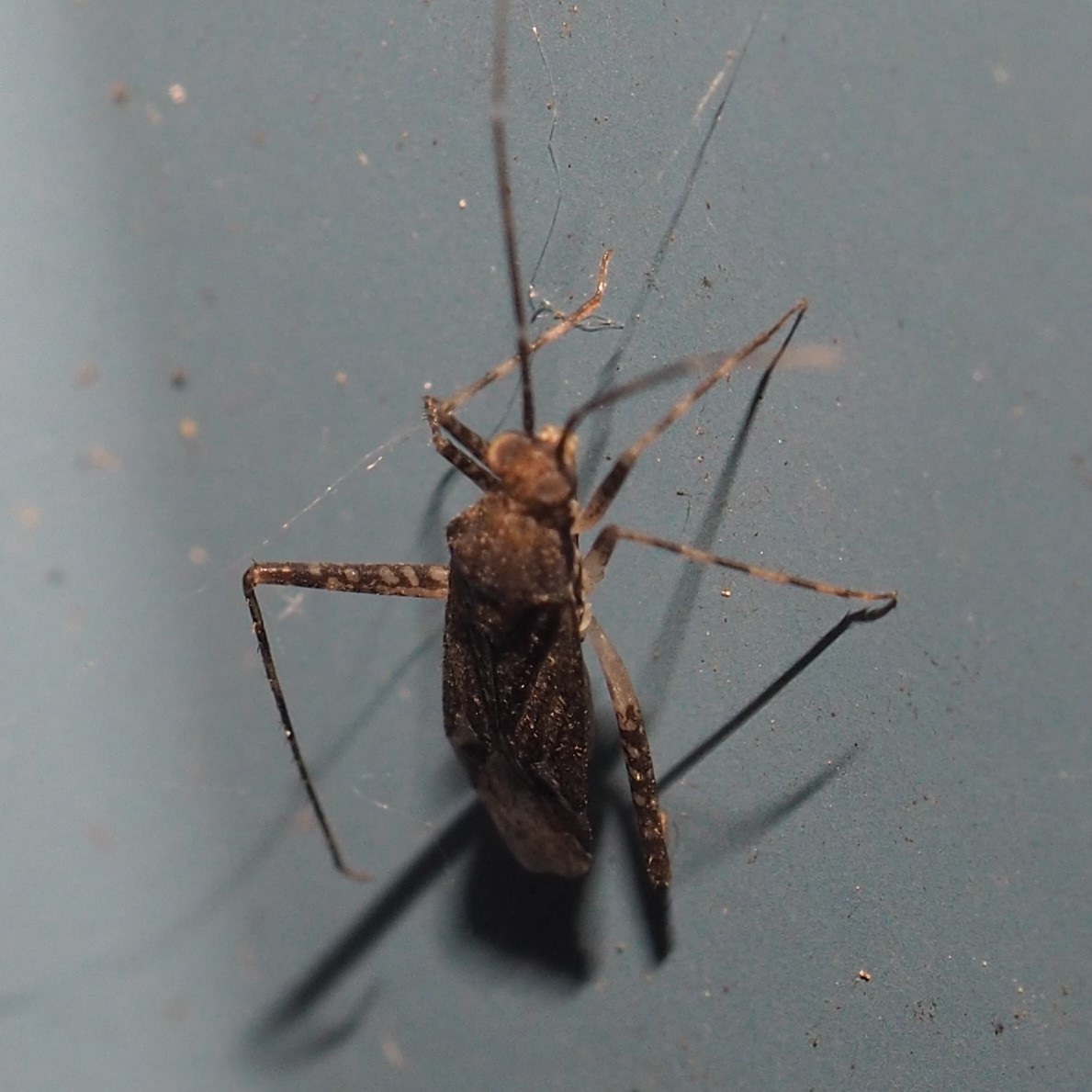
So NOW for the leafhoppers. First, a nymph; and (second and third) adults of various species in the genus Graphocela.
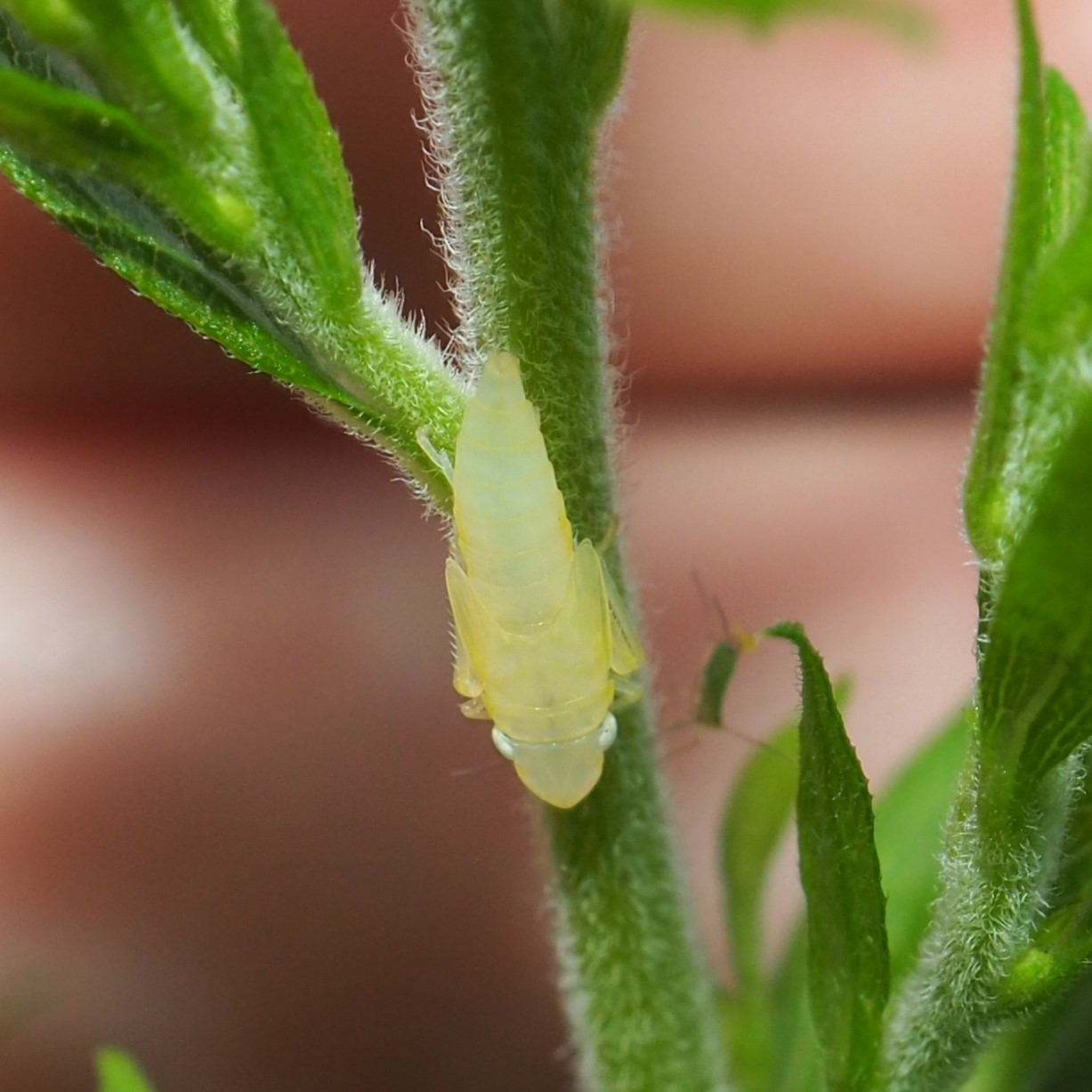
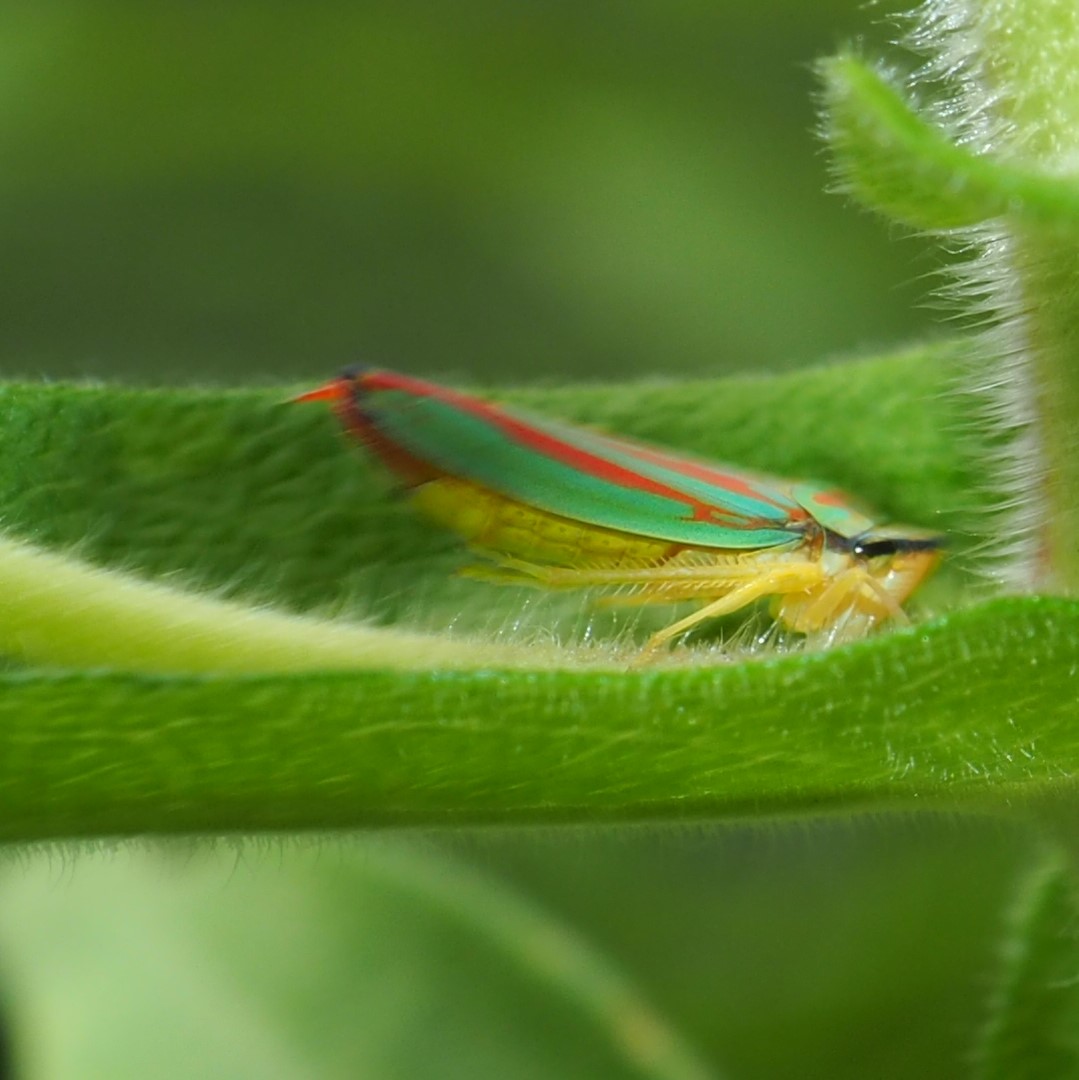
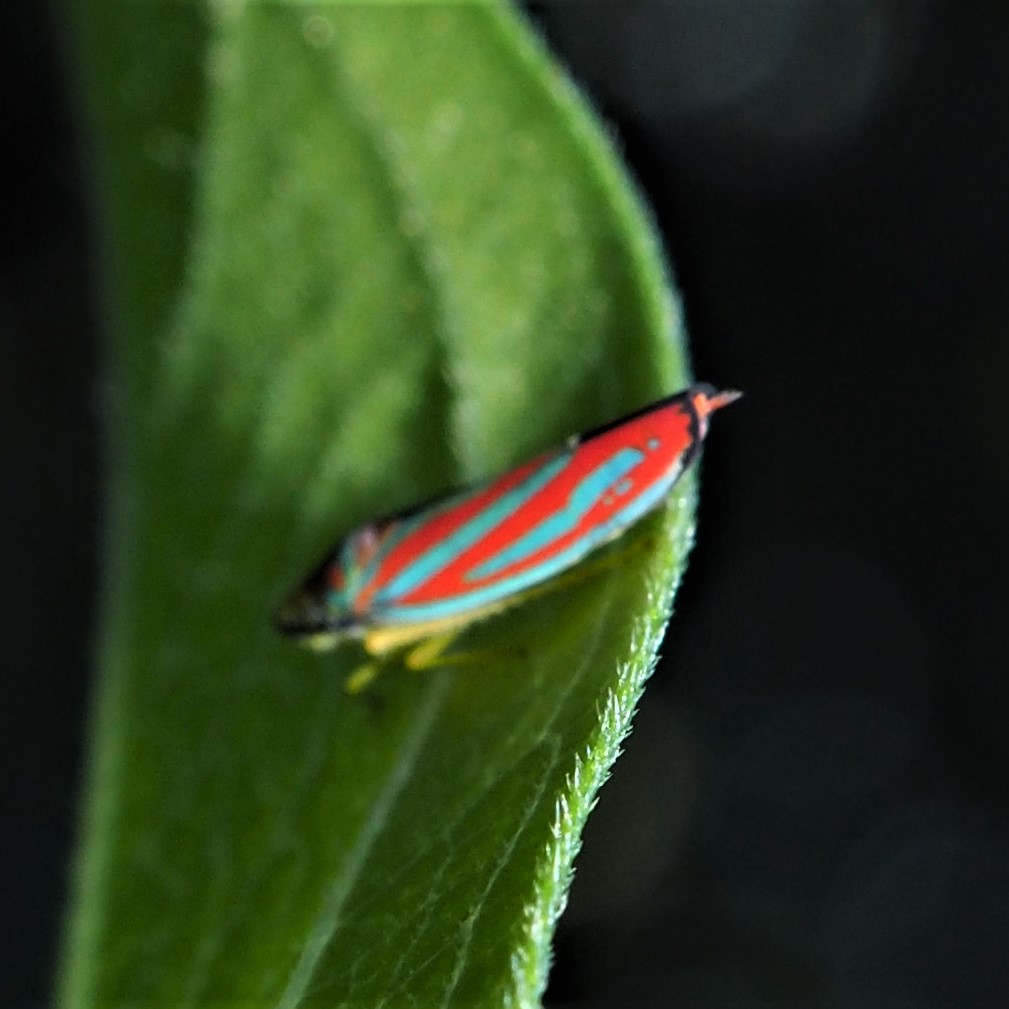
First, an interesting Leafhopper called Erythroneura aclys, which I hadn't seen for some time. Second, a member of the genus Osbornellus. That day, there were a couple of those. Third, one of the variations.
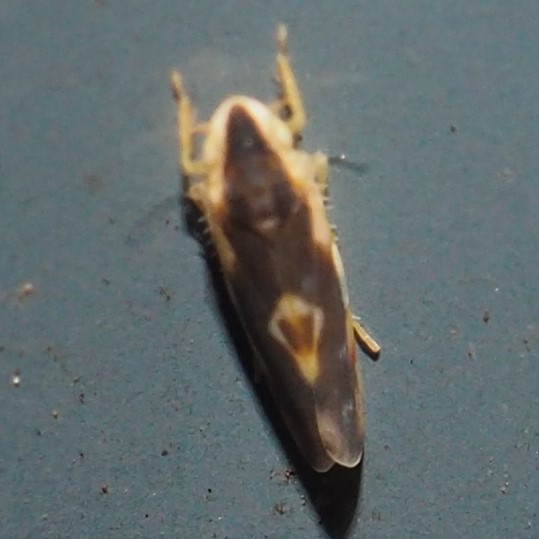
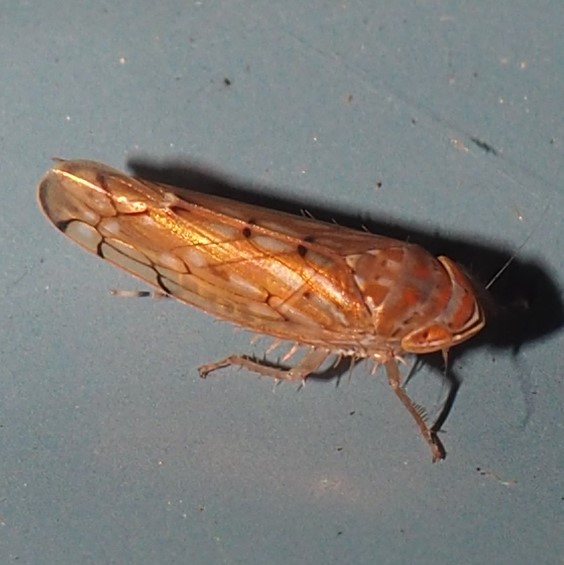
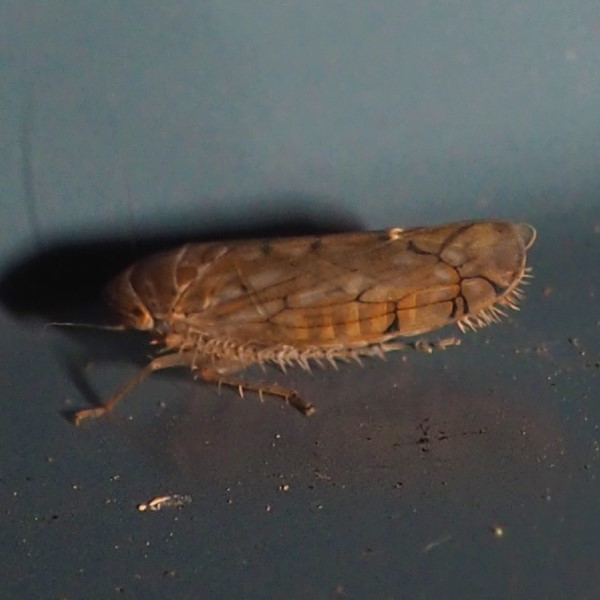
A large genus of Leafhoppers is Scaphoideus. Here's one typical one, but hard to ID to species. And another variation, this one with lots of blue tones. And another with blue tones, this one in an unexpected place at the bottom of the Wall. Fourth is Prescottia lobata. It looks like a Scaphoideus, but isn't.
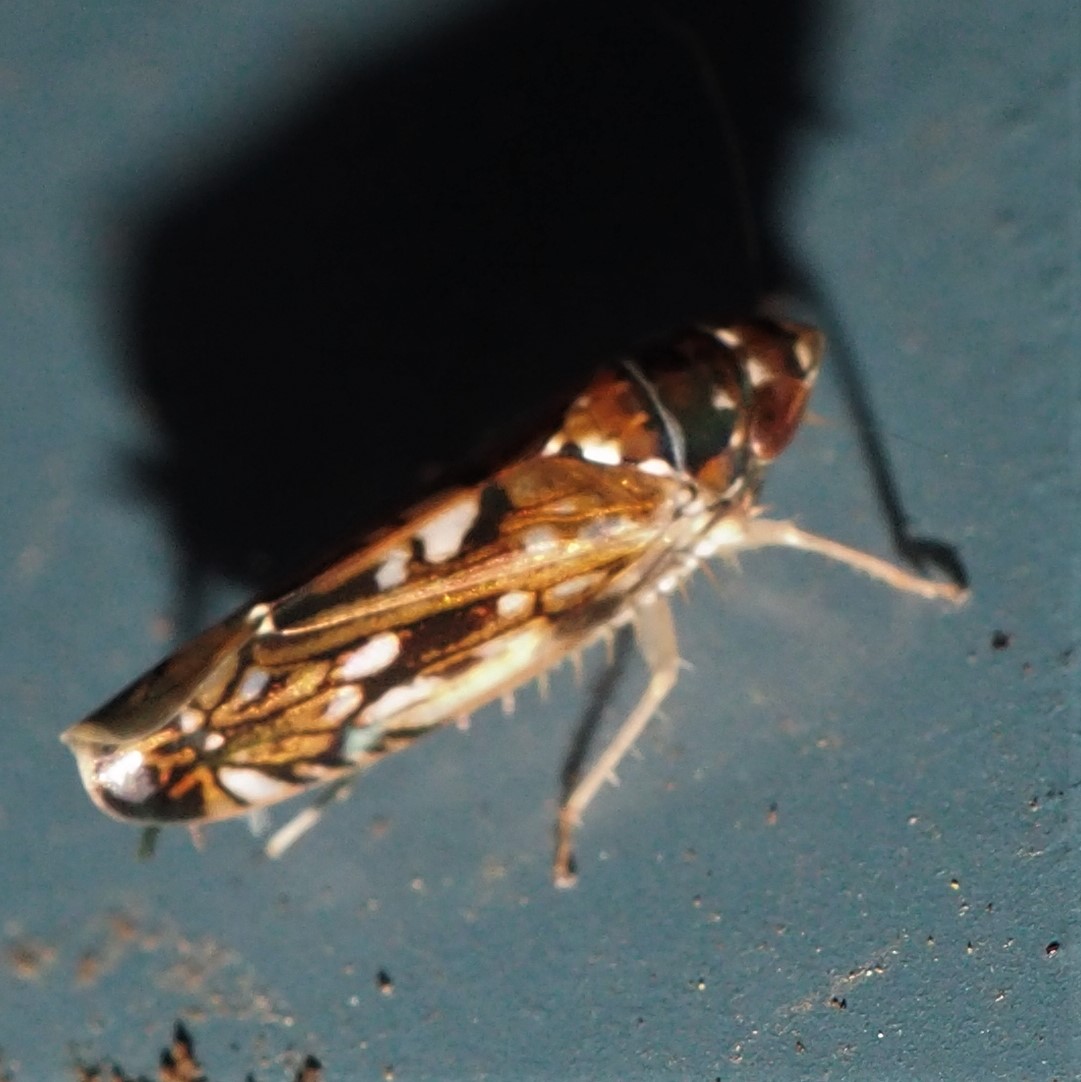
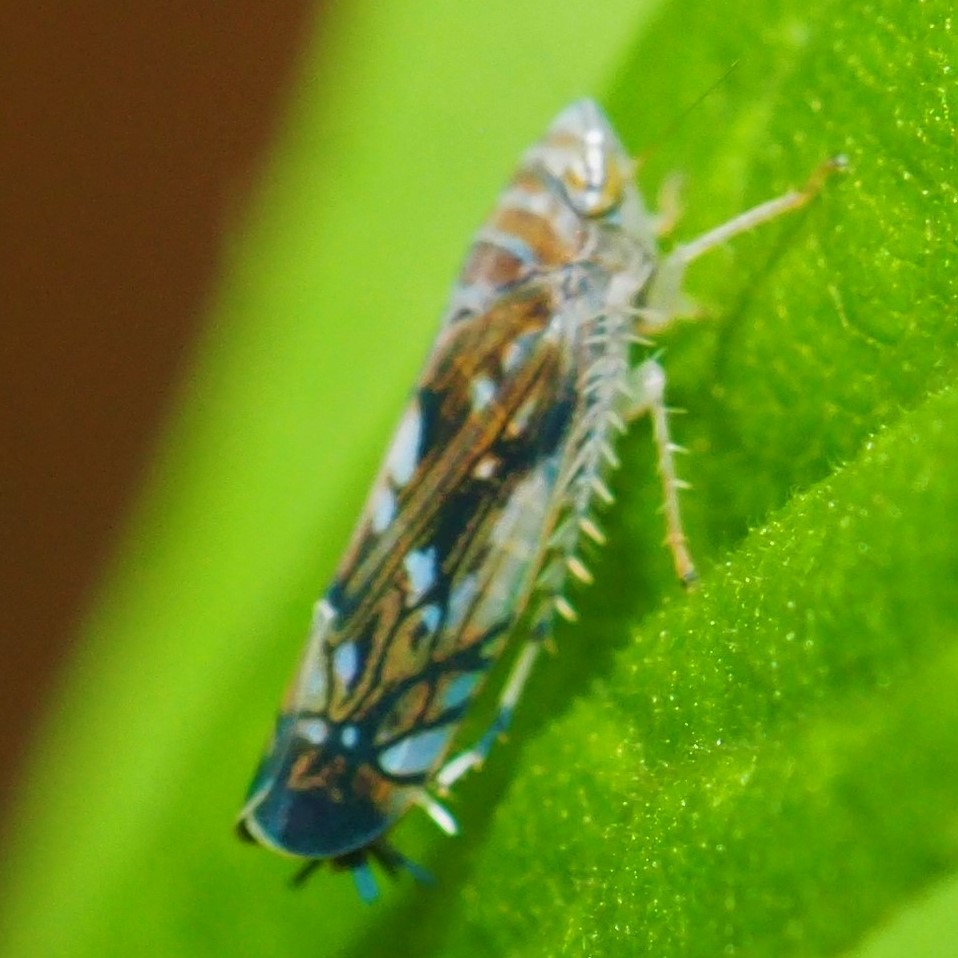
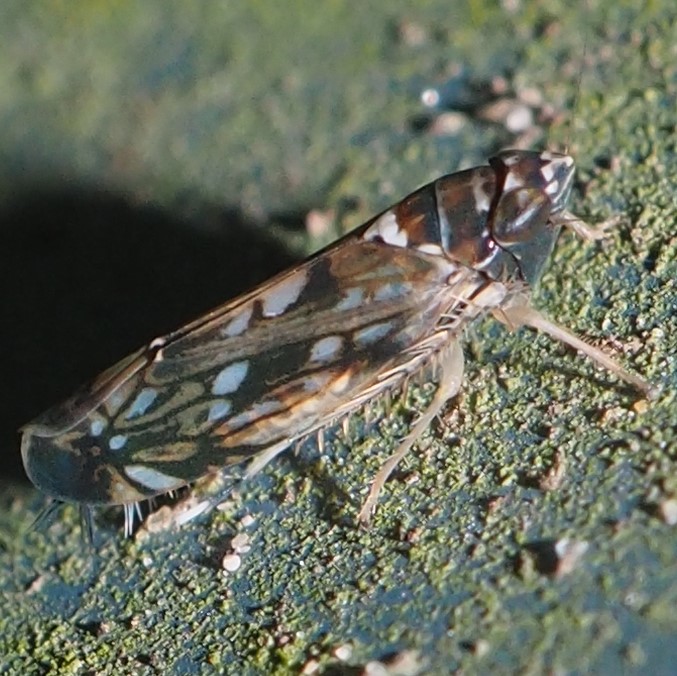
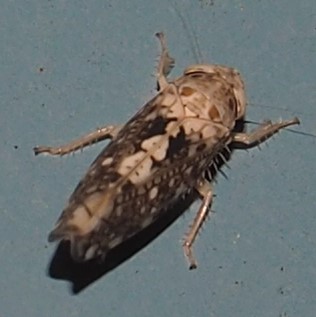
Here is the Japanese Leafhopper, and its nymph, which we saw on July 13. And next two, the Japanese Maple Leafhopper and its nymph.
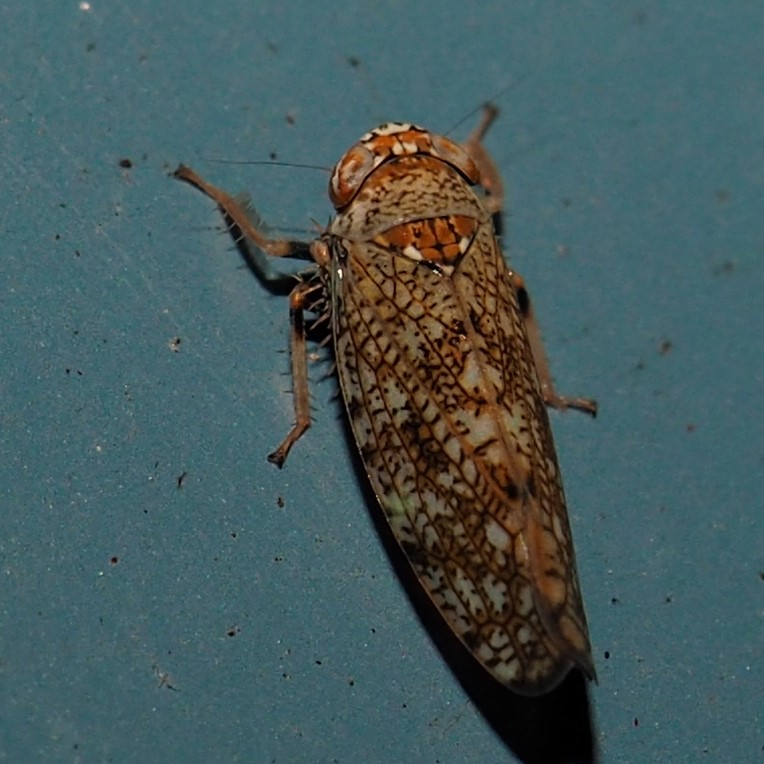
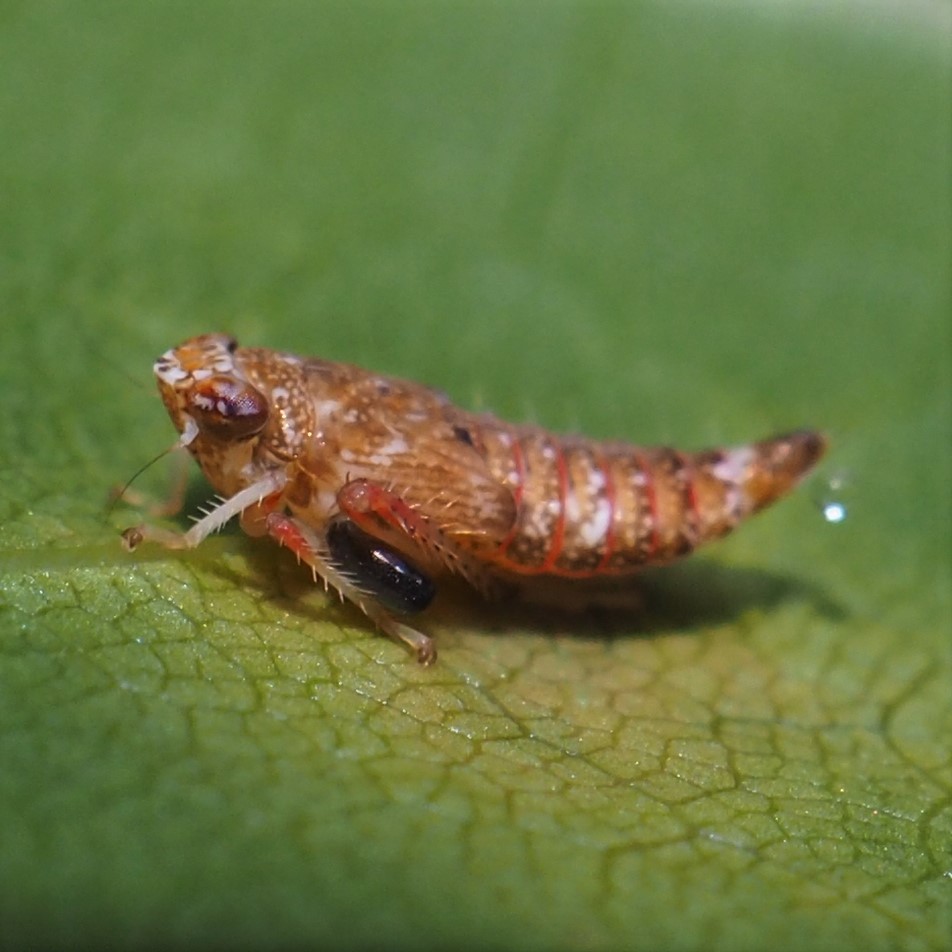
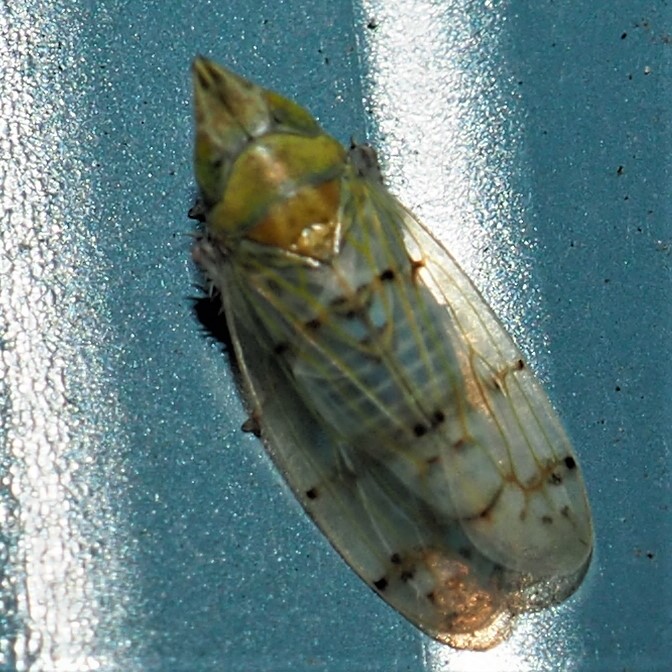
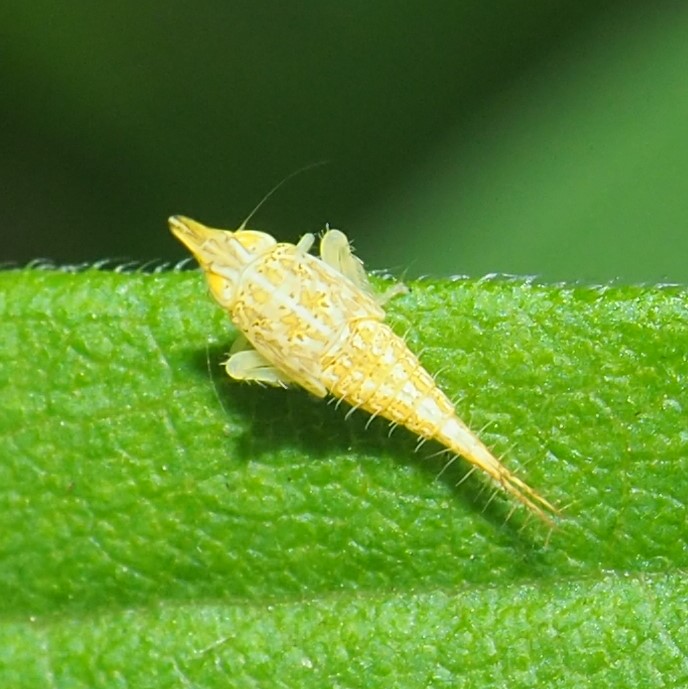
Finally, unless something else shows up today, the first sighting of the Jikradia olitoria Leafhopper, which iNat calls the "Coppery Leafhopper"). Second, a rear view. And third, its nymph, from July 21.
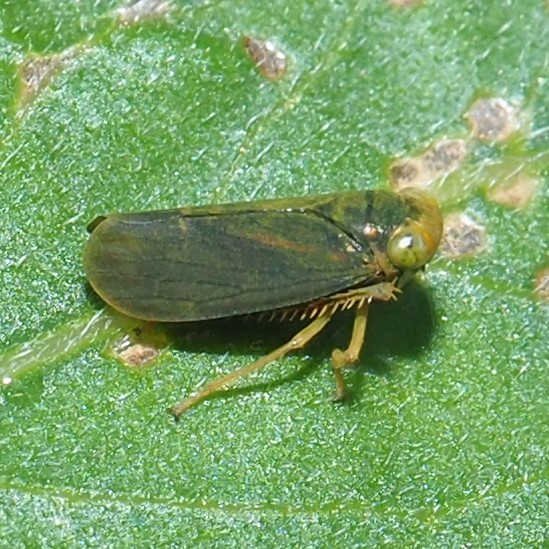
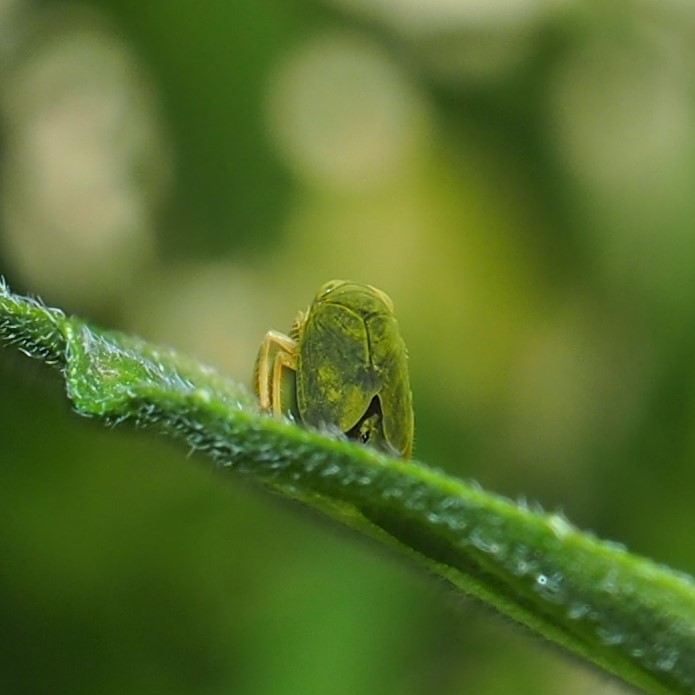
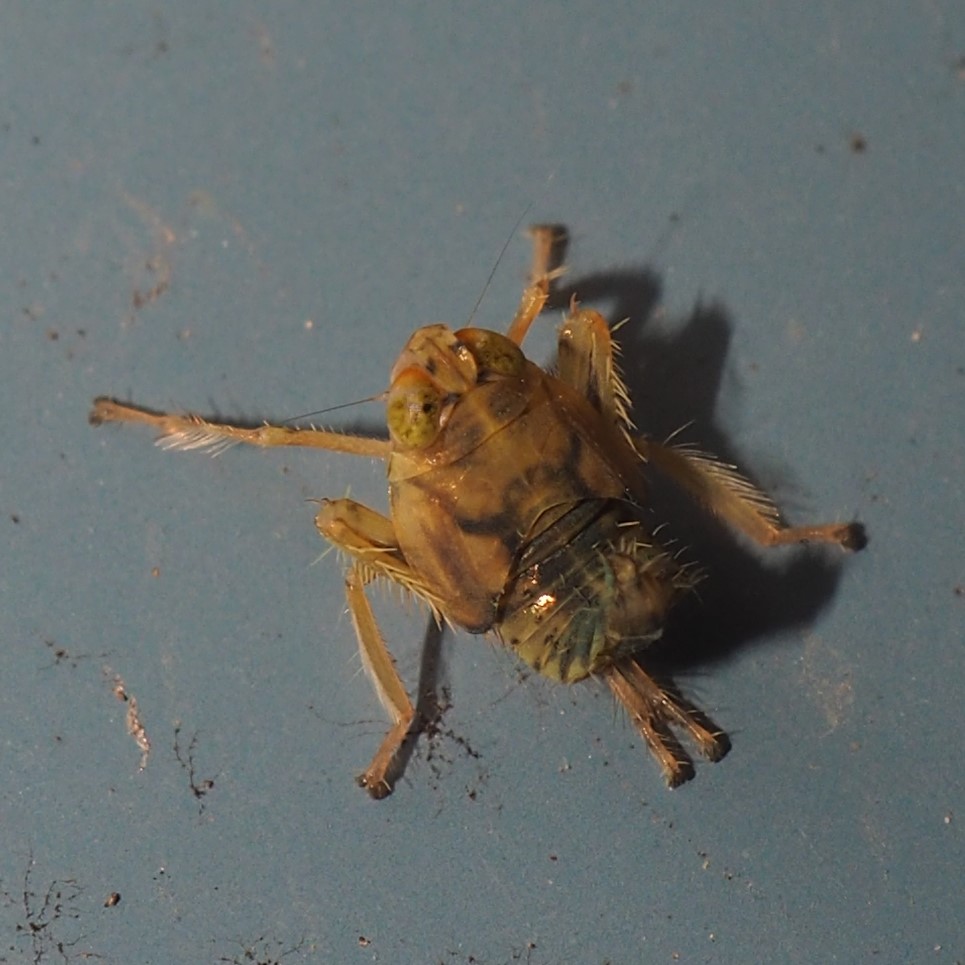
Planthoppers. The only new Planthopper for this week is Thionia Bullata. Of course you remember Acanalonia conica from last Week. Both of them have nymphs with fluffy tails.
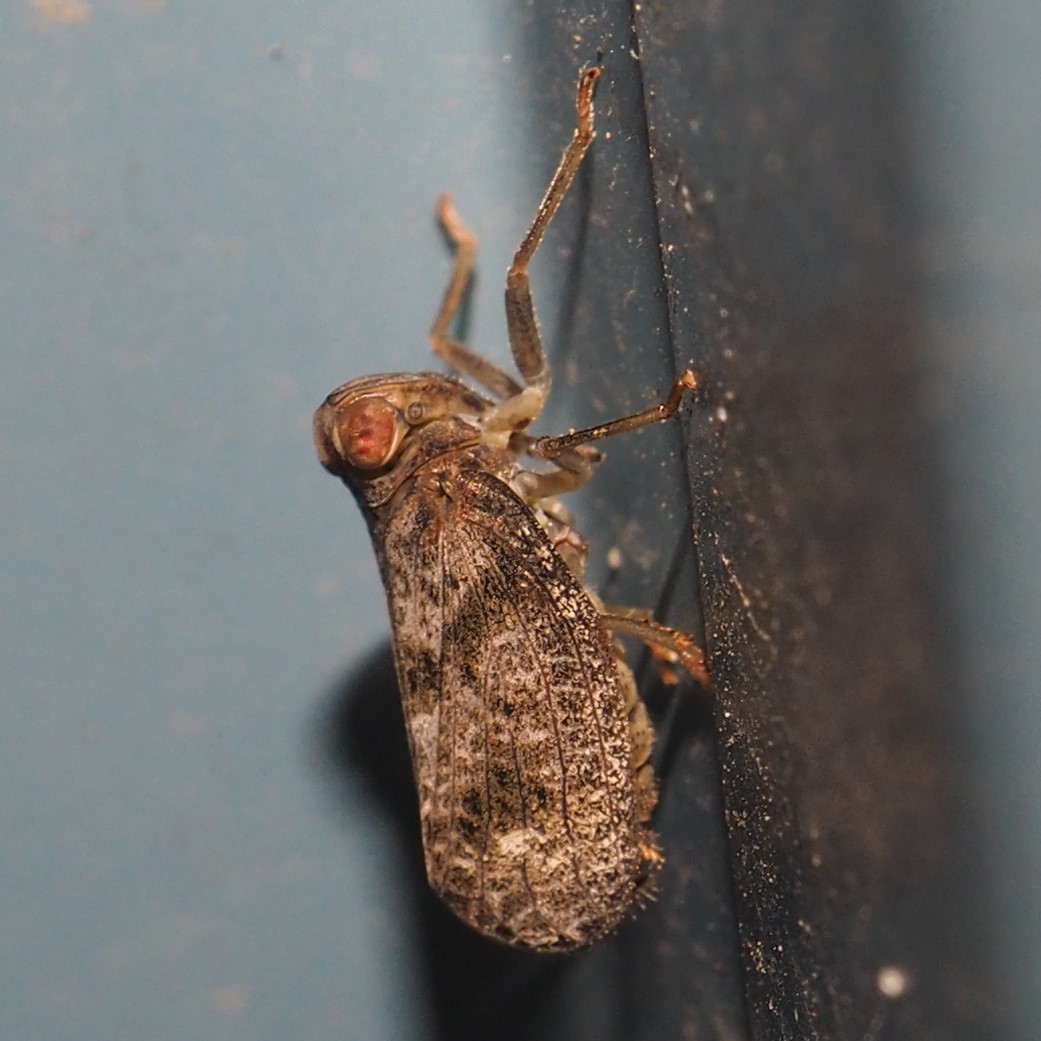
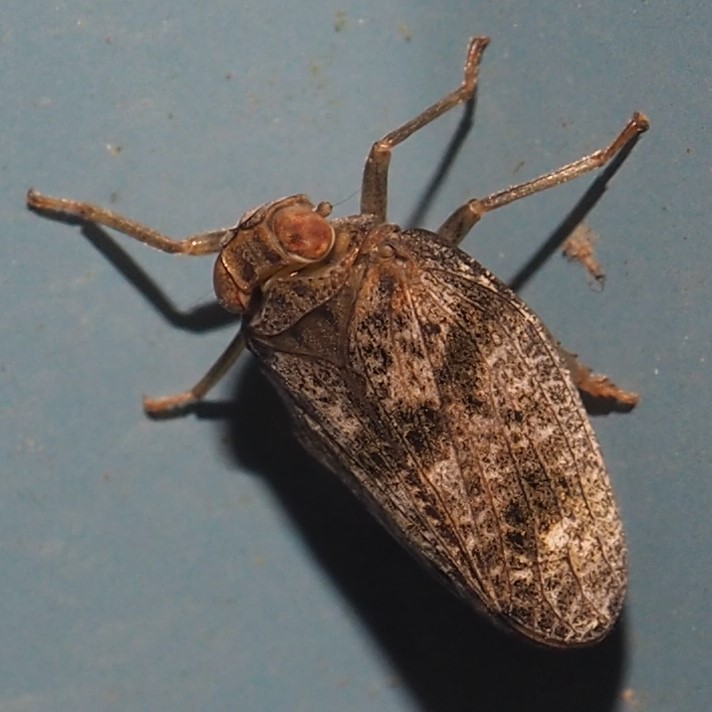
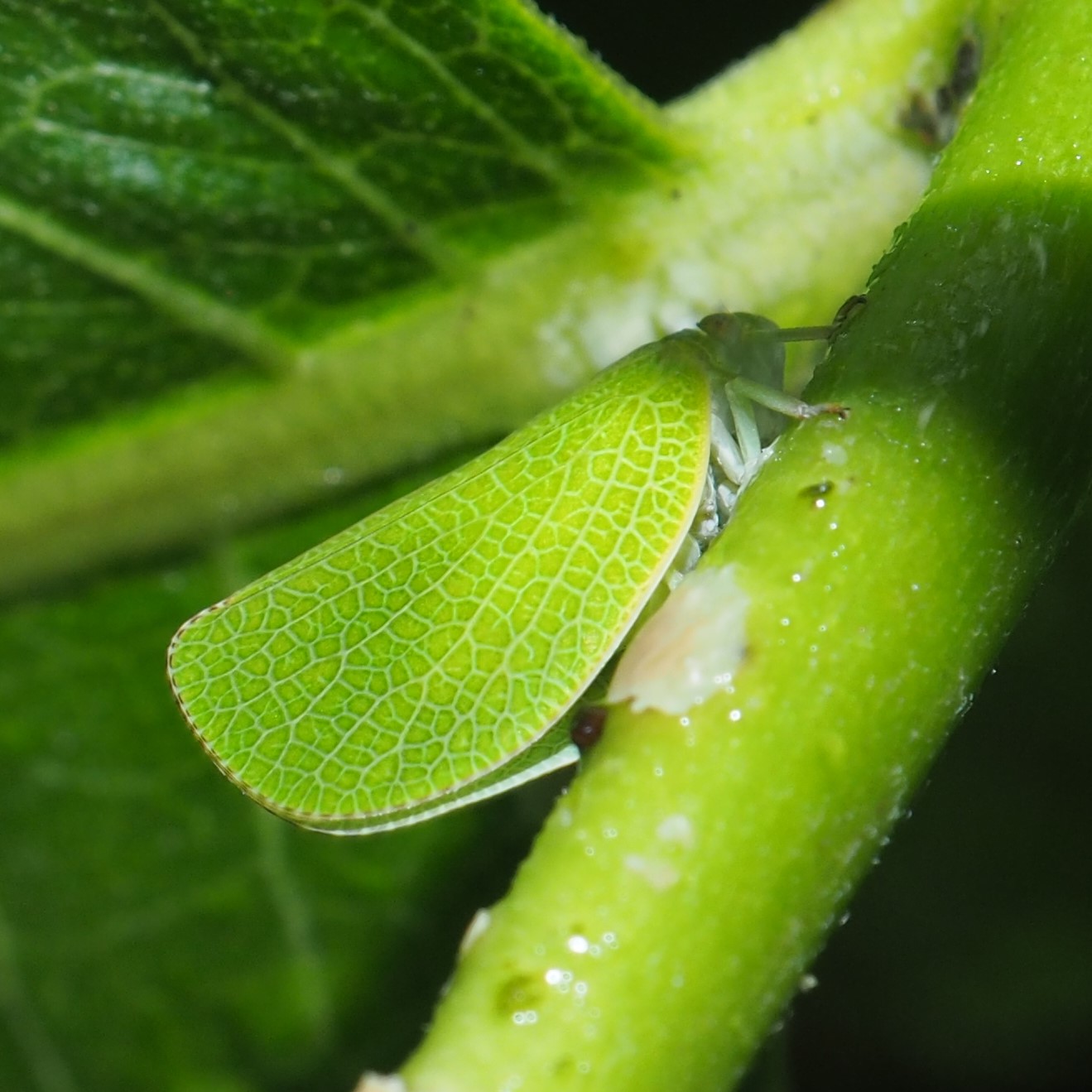
Before we move on to the Treehoppers, there was one other kind of bug this week related to the Hoppers, and that's the Spittle Bugs. Here is yet another incarnation of the Meadow Spittlebug. Second is an Alder Spittlebug.

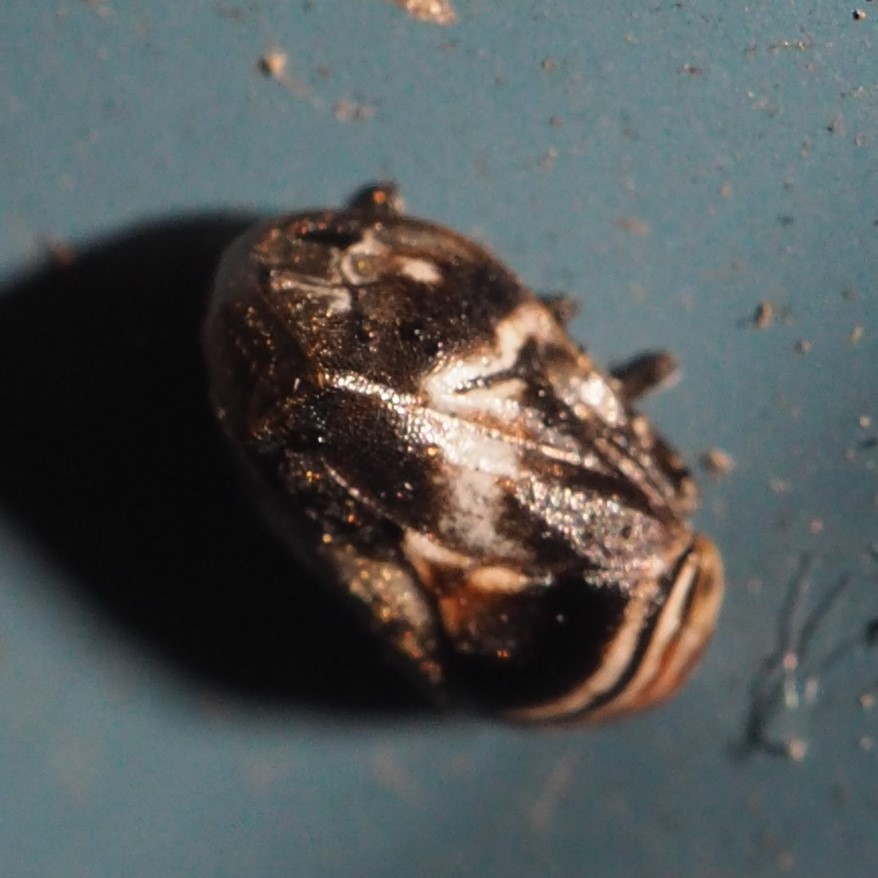
One more kind of Hopper - the Treehoppers. We have two colonies: on the Red Buds we have the Two-mark Treehoppers and on the Thistle we have the Keeled Treehoppers. The Two-Marks have gone through their cycle once this year. But I still see one every once in a while. Here are one from August 8 and one from August 6.
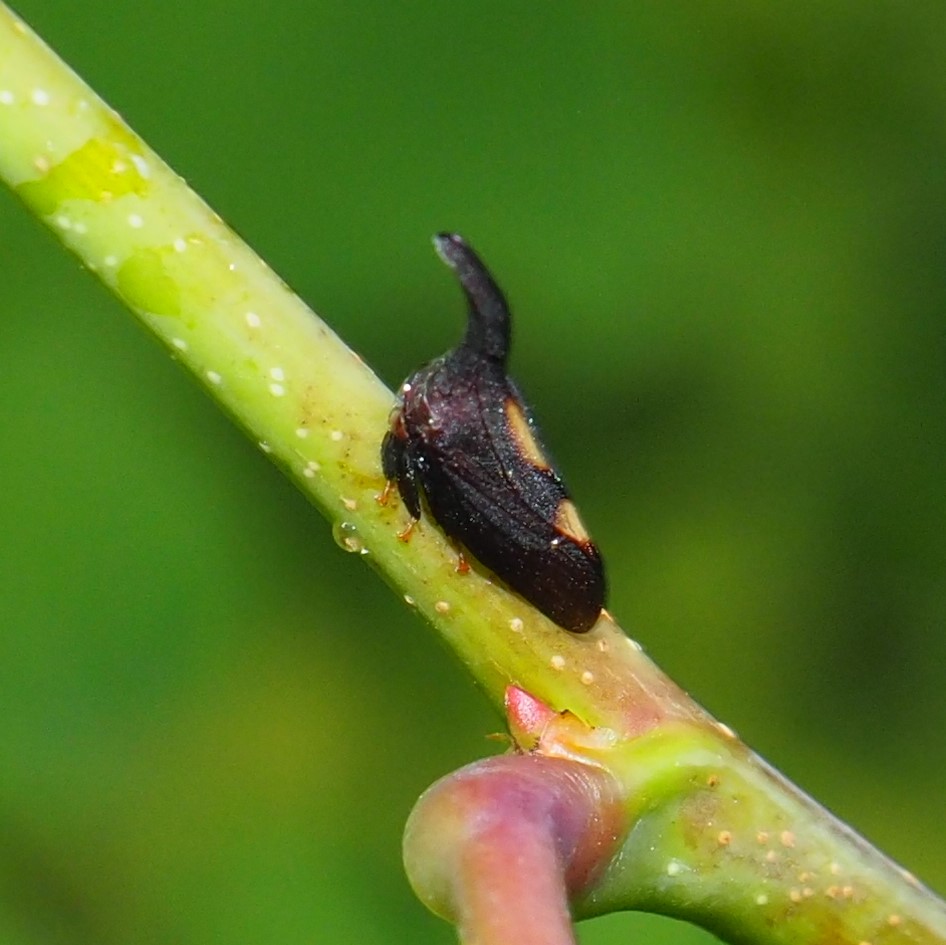
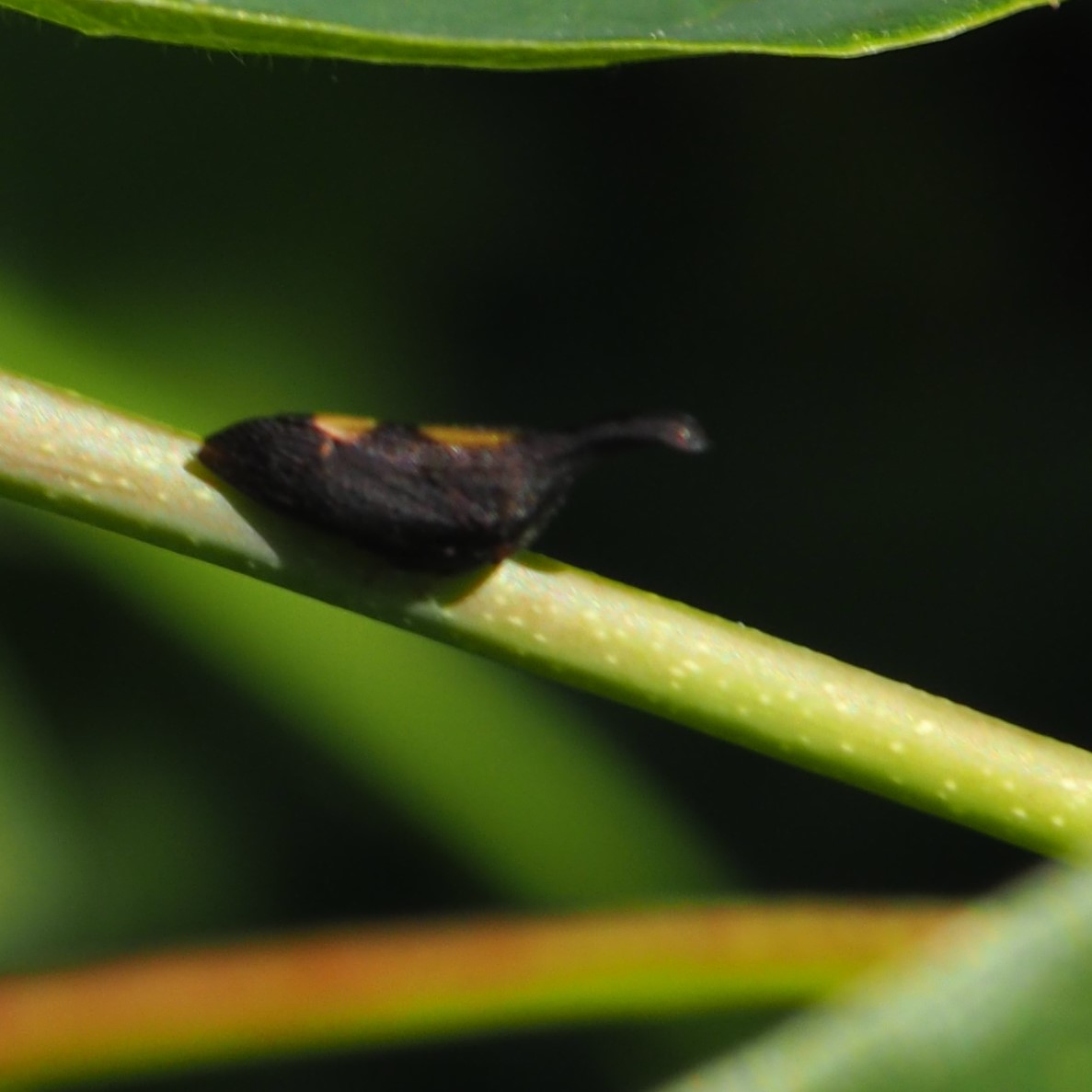
On the other hand, the Keeled Treehoppers on the Thistle are still maturing. One by one, the oldest nymphs are gradually outgrowing their skins and becoming adults. Picture 1 shows an adult - with the two keels on its back, while picture 2 shows three nymphs with two keels each, lined up on the thistle stem. Third is one of the Eastern Black Carpenter Ants that have volunteered to "nanny" the nymphs.
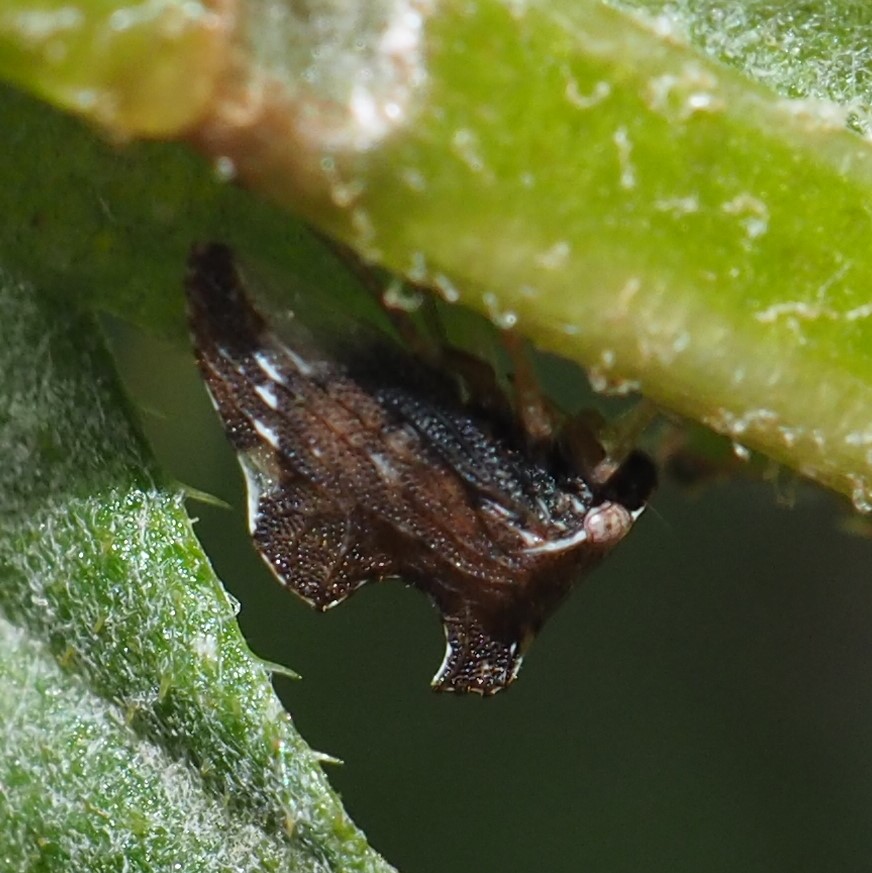
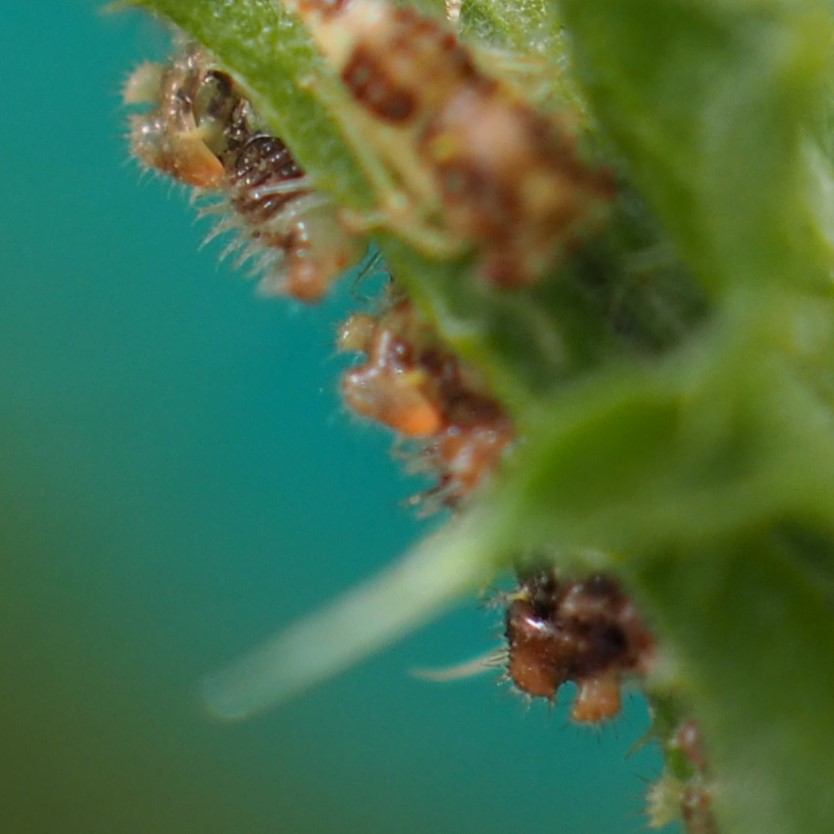

I think I've been graphic enough on this subject before, but the relationship between the Nanny Ants, which might be different species in different colonies, is an amazing example of symbiosis. In this case, the Ant serves as a "bodyguard", protecting them from different kinds of predators. In return, the nymphs excrete a sweet liquor called "honeydew", which the Ants adore. Thus the Ant also keeps the nymphs clean and hence prevents various kinds of fungi or kinds of infections. I spent some time with the colony the other day and was finally able to get a little movie showing the Ant going from nymph to nymph, stroking them and causing them to exude the honeydew. Actually, if you watch this clip for a while you'll notice that the nymphs stretch out their rear end "spouts" and emit a drop of liquid as the Ant approaches.
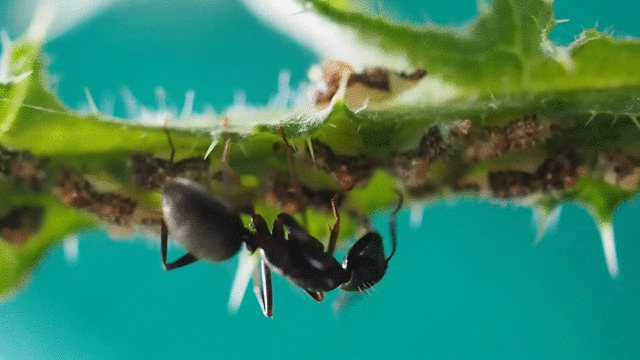
I do believe I've managed to skip the Stink Bugs - but no more! Here is the Bug we love to hate - The Black Mormorated Stink Bug - but as an early-ish nymph, seen here on a Zinnia flower. Second and third are probably different sexes of the same Bug, Dendrocoris humeralis.
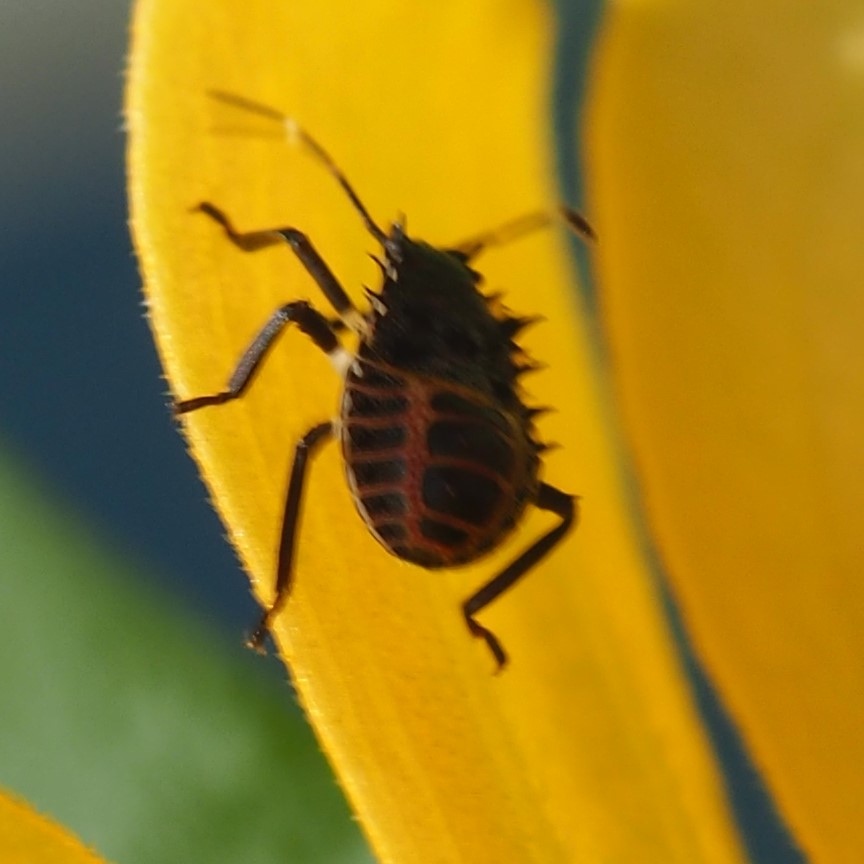
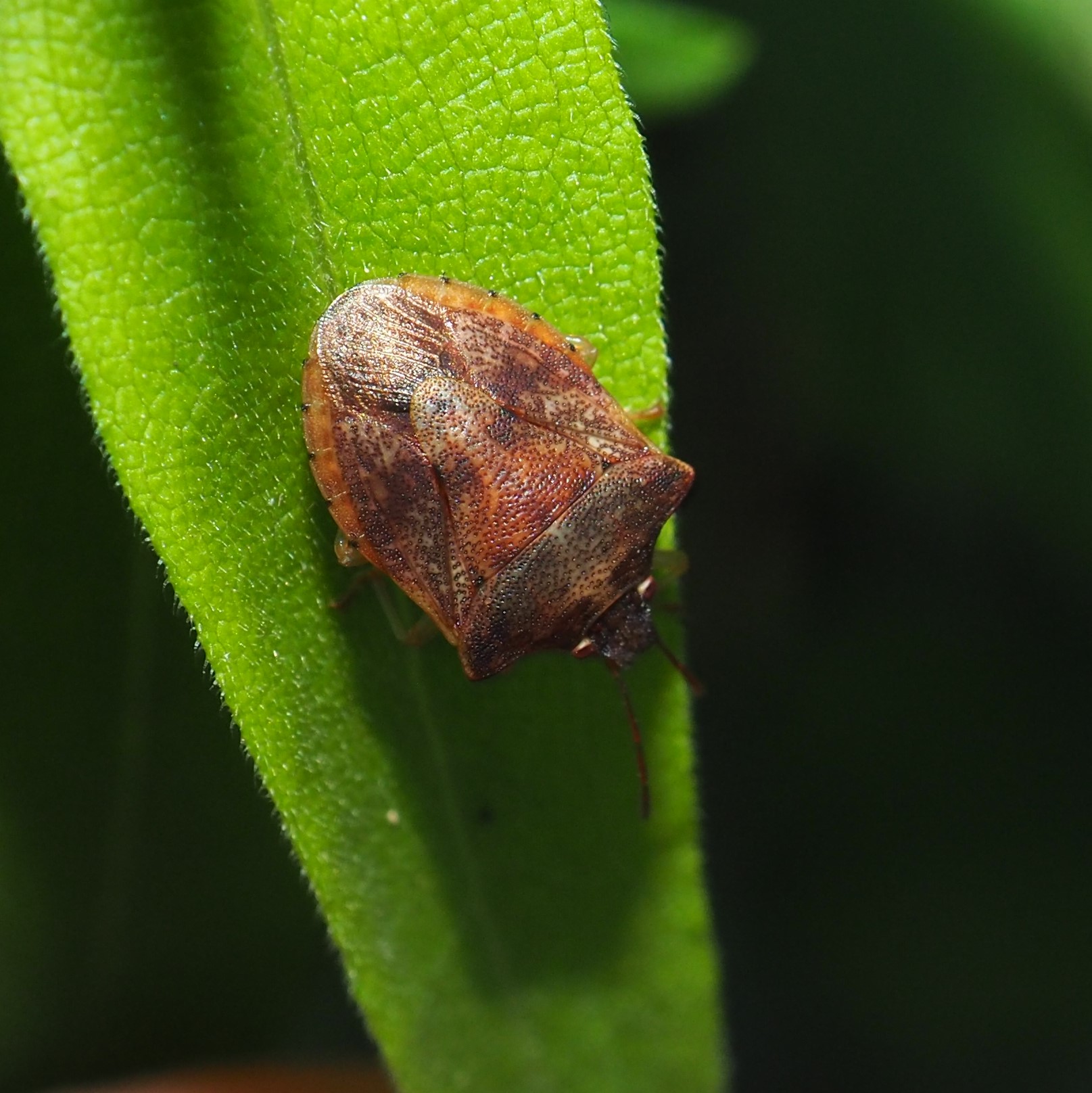
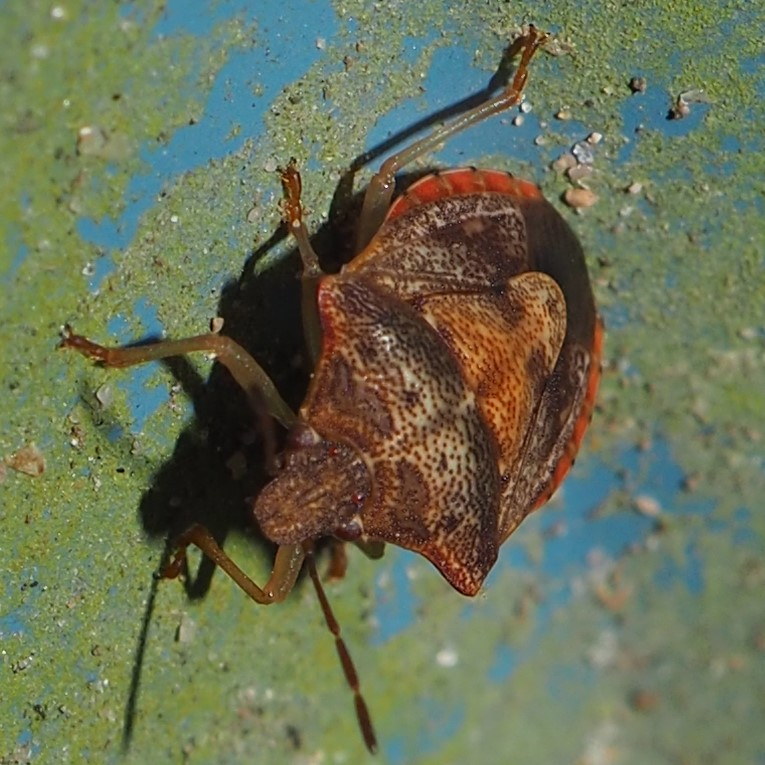
Here are a couple of Damselflies. First seems to be a Fragile Forktail, and second one of the Spreadwings. Then this morning I found this Autumn Meadowhawk on Jadesy! And while sitting by the pond and unable to get up without frightening it, I took this picture of an Eastern Pondhawk from quite a distance.
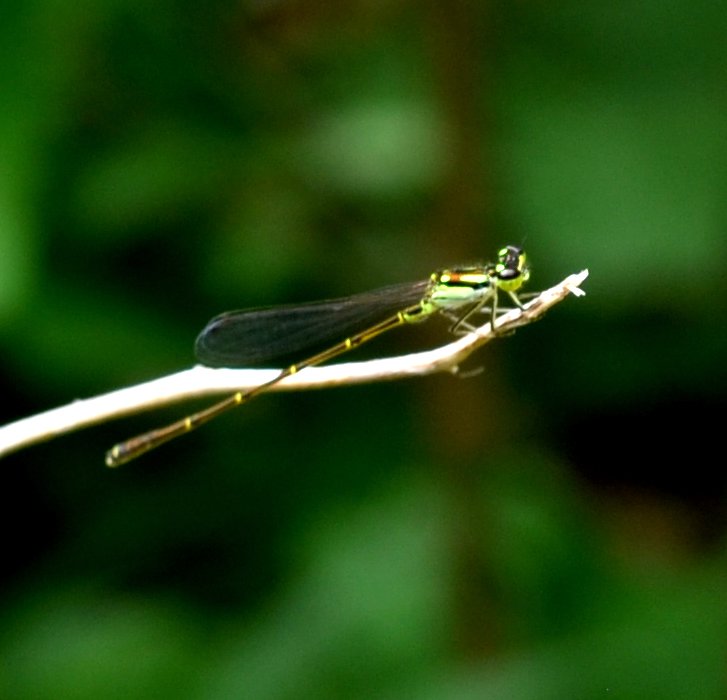
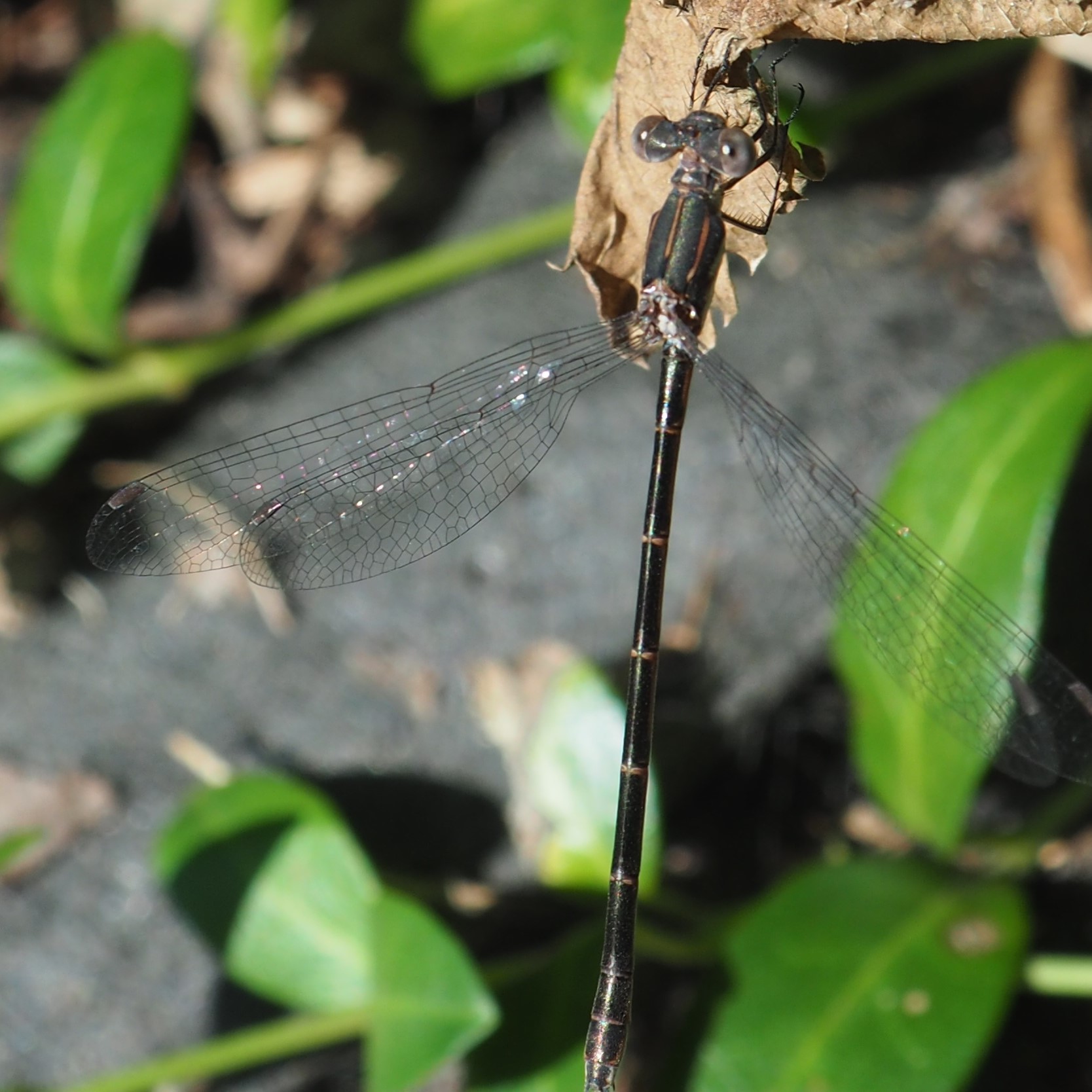
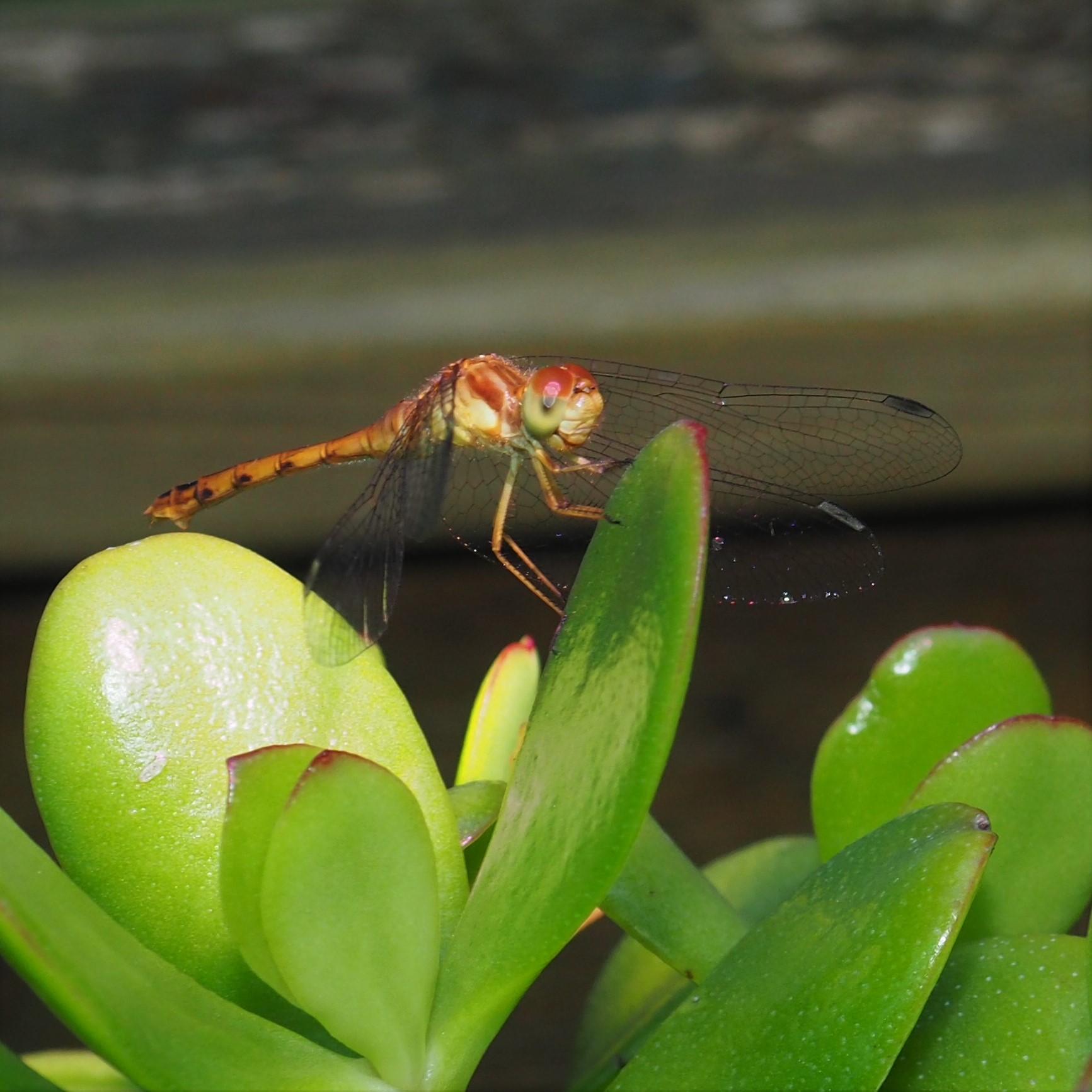
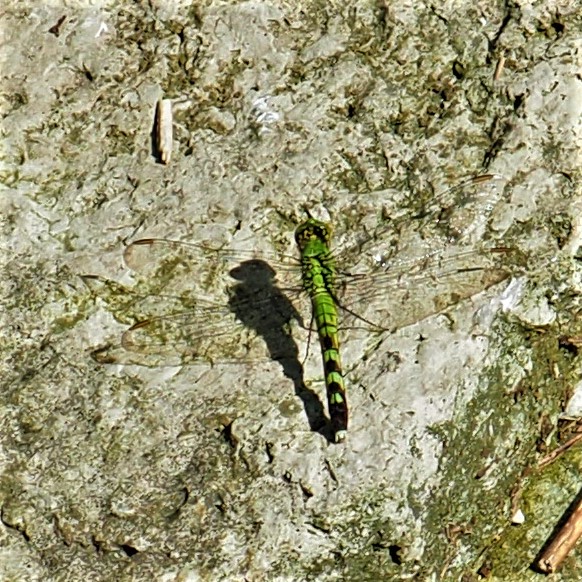
The poor pond. I have been waiting for a guy to come set traps for the Raccoons that damaged the liner to the pond so that it only held a bit more than half its usual supply of water. I've now decided to try out that savory treat - Fox Urine. It should arrive tomorrow. I had several of the fishes upstairs in the bathtub. My friend Don meantime was able to patch the liner so that now the water hasn't needed to be topped up for a few days. But the chickenwire that Chaim and I arranged over the pond to deter Rocky and friends has mashed down a number of the Water Lilies so the pond still doesn't look like its old self. But meanwhile, now that I'm feeding the fishes at the shallow ends, I get a chance to check on the baby fish. Lately most of the new fish have lost a lot of their bright colors due to inbreeding. But now there is a bit of color in some of the babies. I wonder if it's because Chico is now Chica and the mother of most of the young fishes. Anyway, here are some of the babies.
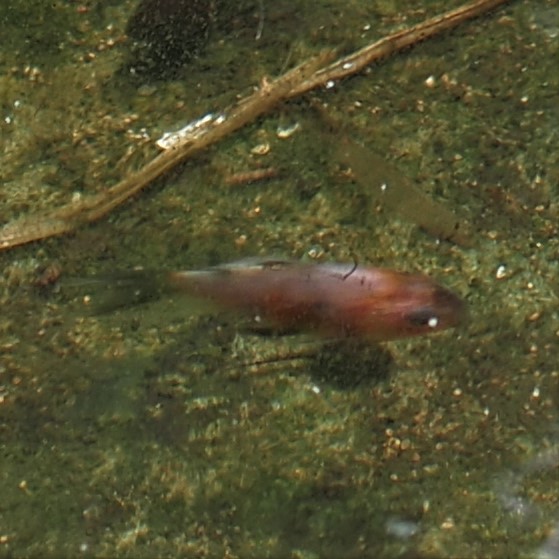
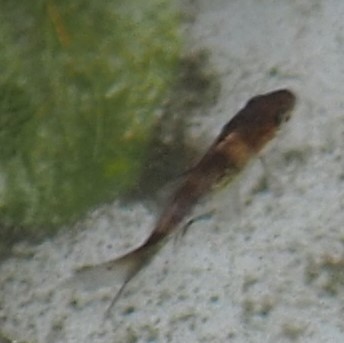
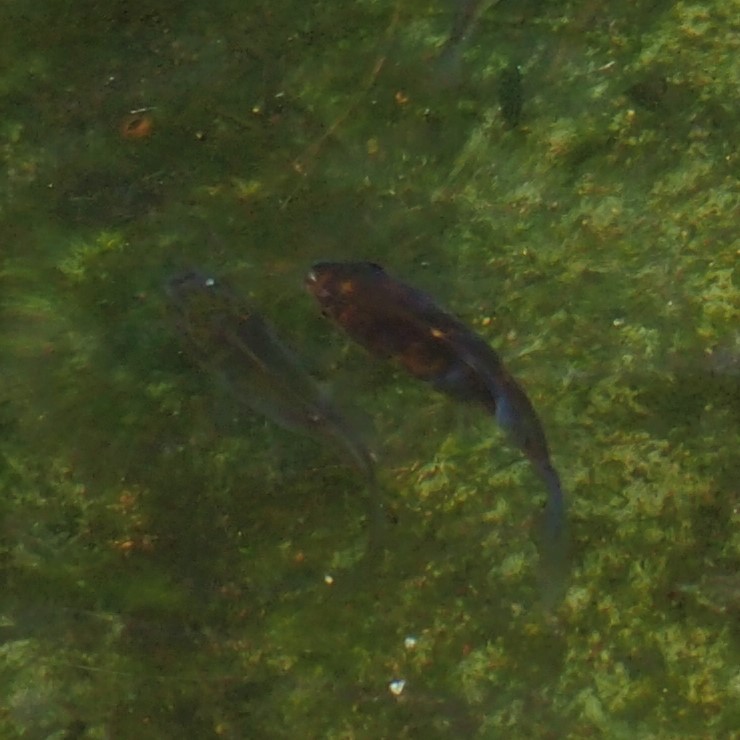
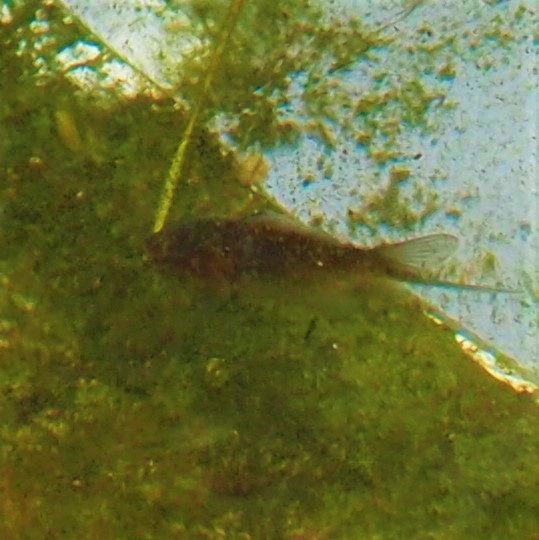
On to the Flies. We start with these Moth Flies.

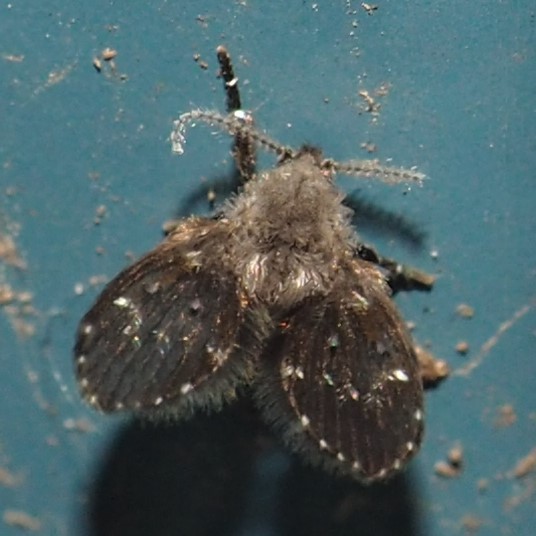

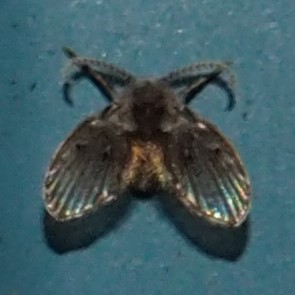
Some unknown (by me) Flies that all look like "Flies".

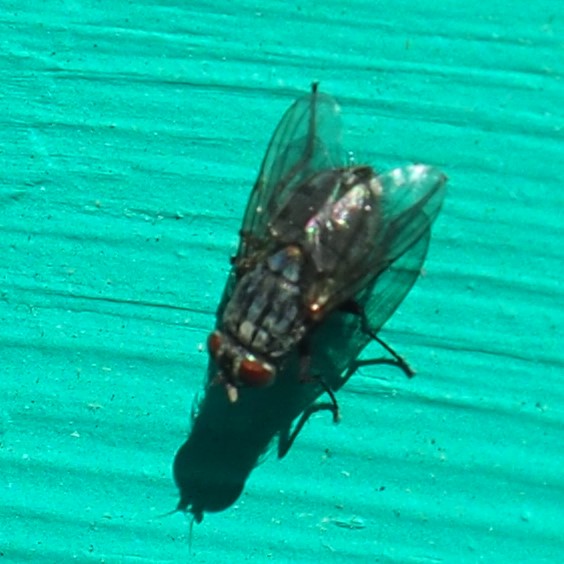
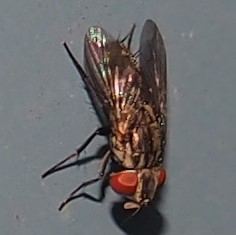
More Fly Flies. Second looks like a Root Maggot Fly, and third like a Flesh-eating (Sarcophagus) Fly.

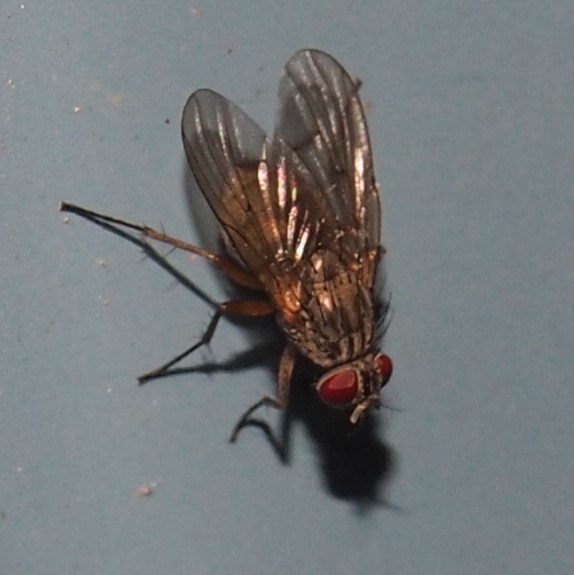
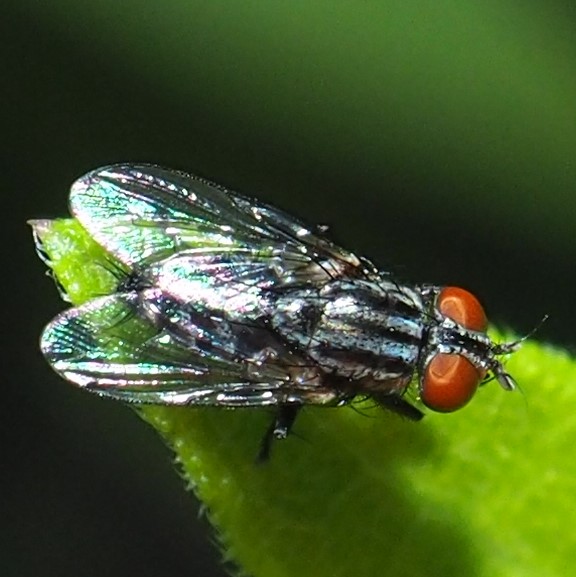
First here is a Quadrate Snipe Fly (Chrysopilus quadratus male). You've seen the female before (picture 2 from August 2019) Note how far apart the eyes are in the female, whereas the male's are almost glued together. Third is a Picture-winged Fly, named for its interesting black on clear wing patterns.
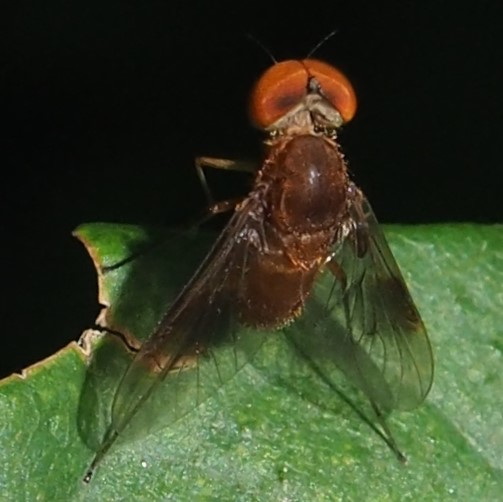
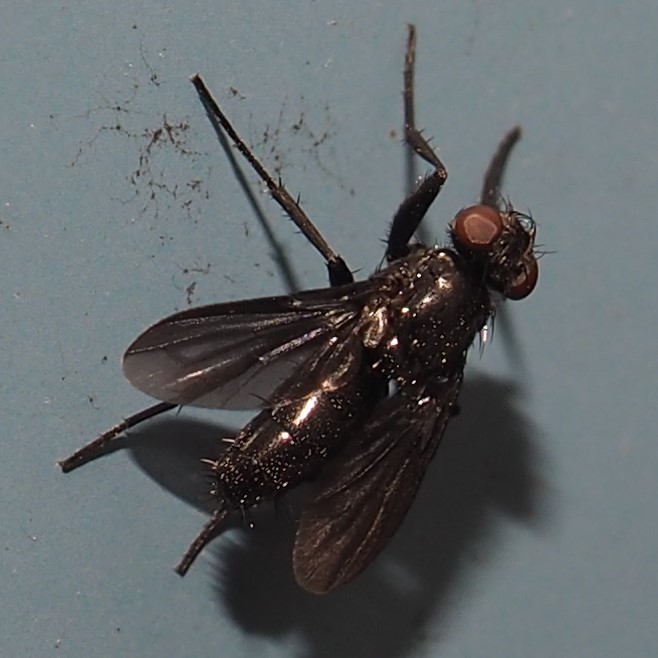
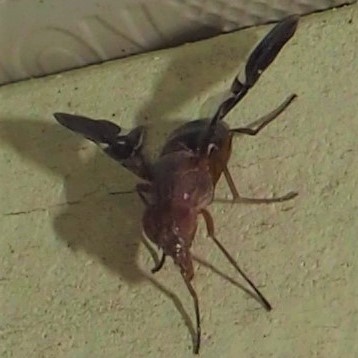
First a Robber Fly. Then a Scuttle Fly (two views).
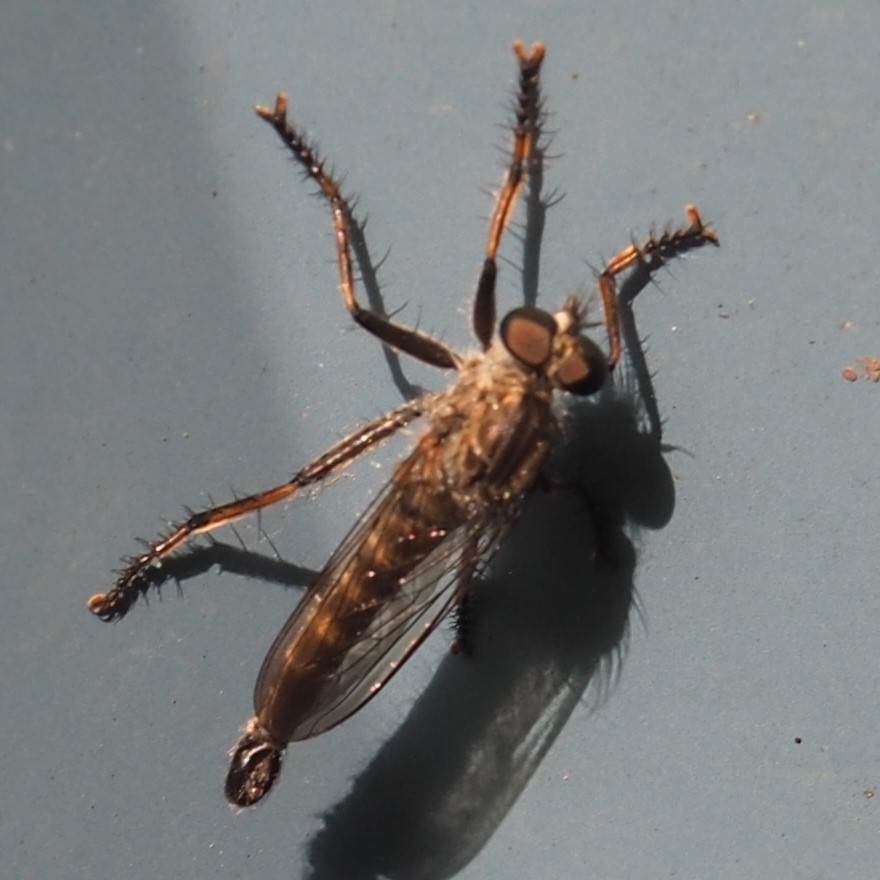
 8 3 20 1.jpg)
 8 3 20 2.jpg)
Another few Fly Flies, this time very small. Number 3 is a different view of number 2 (as I recall).
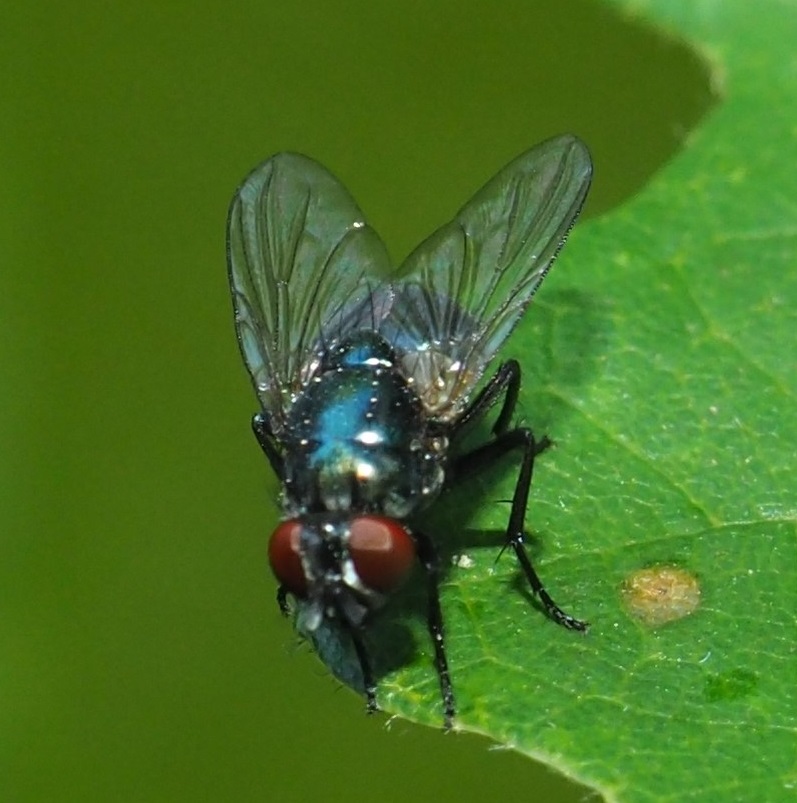
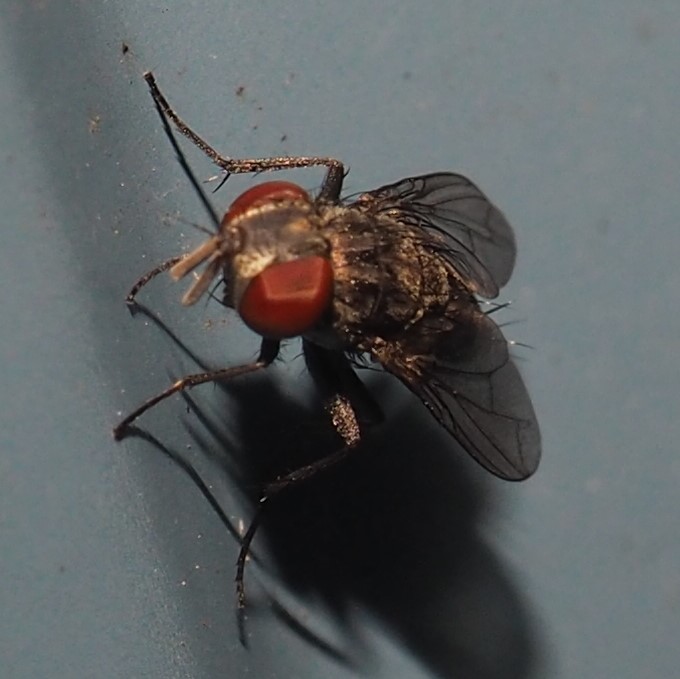
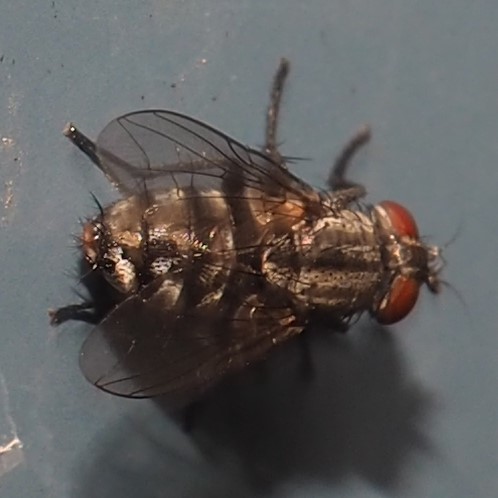
A few more little flies: a relative of the fruit flies; Minettia lupulina, a beautiful little fly; and a member of Condylostylus with almost iridescent eyes.
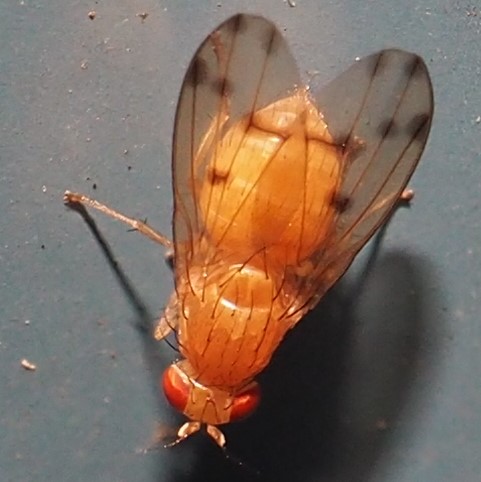
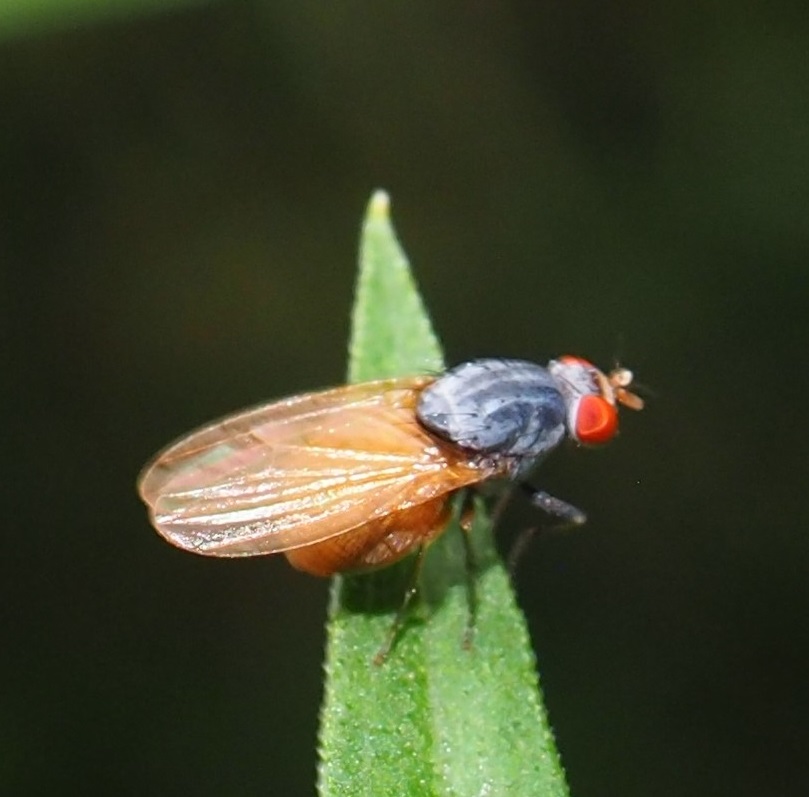

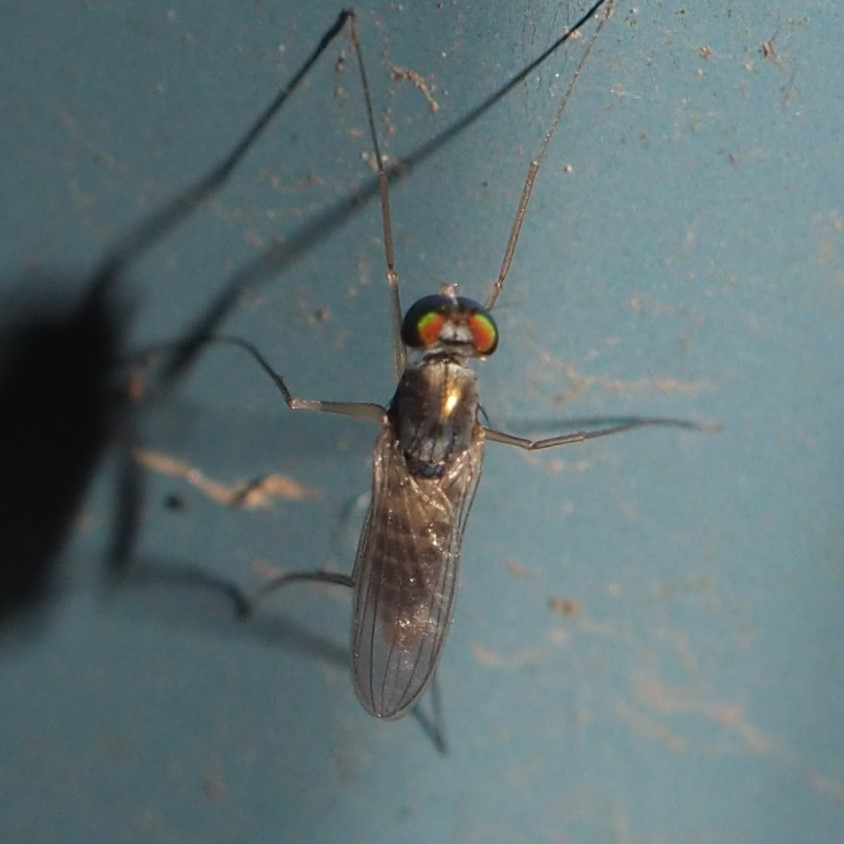
The Mosquitoes have been aggressive but not biting so much as before. First is Anopheles quadrimaculatus, which means of course "four spots". I think that refers to the slightly darker spots on the wings, but I myself only see "trimaculatus". Can you see all of them? Apparently all that hairiness around the neck is another characteristic of the Anopheles genus. Then two pictures of Aedes japonicus, the Asian Bush Mosquito, formerly known as Ochlerotatus japonicus. I was always confused by the name - I associated lots of white-black-white-black etc as the typical leg pattern on Aedes Mosquitoes, and now with a "Taxon Swap" has rendered that confusion over with. The last pose was on the knee of my orange nature-shooting pants, and I think it should always pose there - a true Halloween card shot.
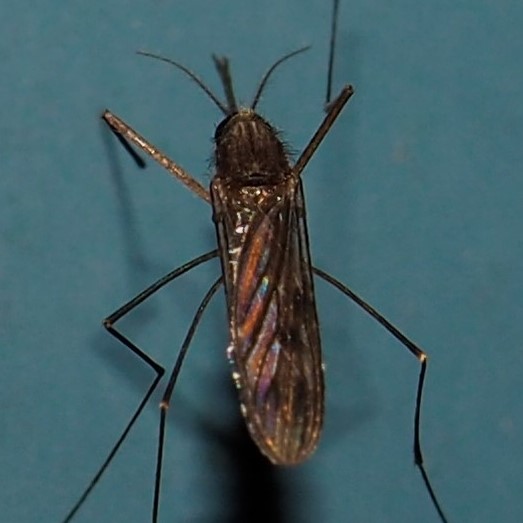
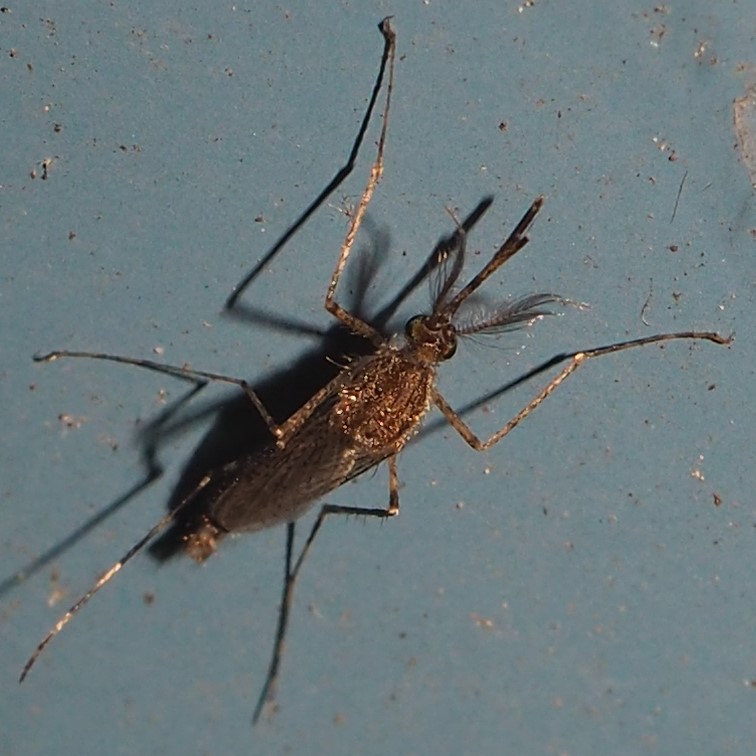
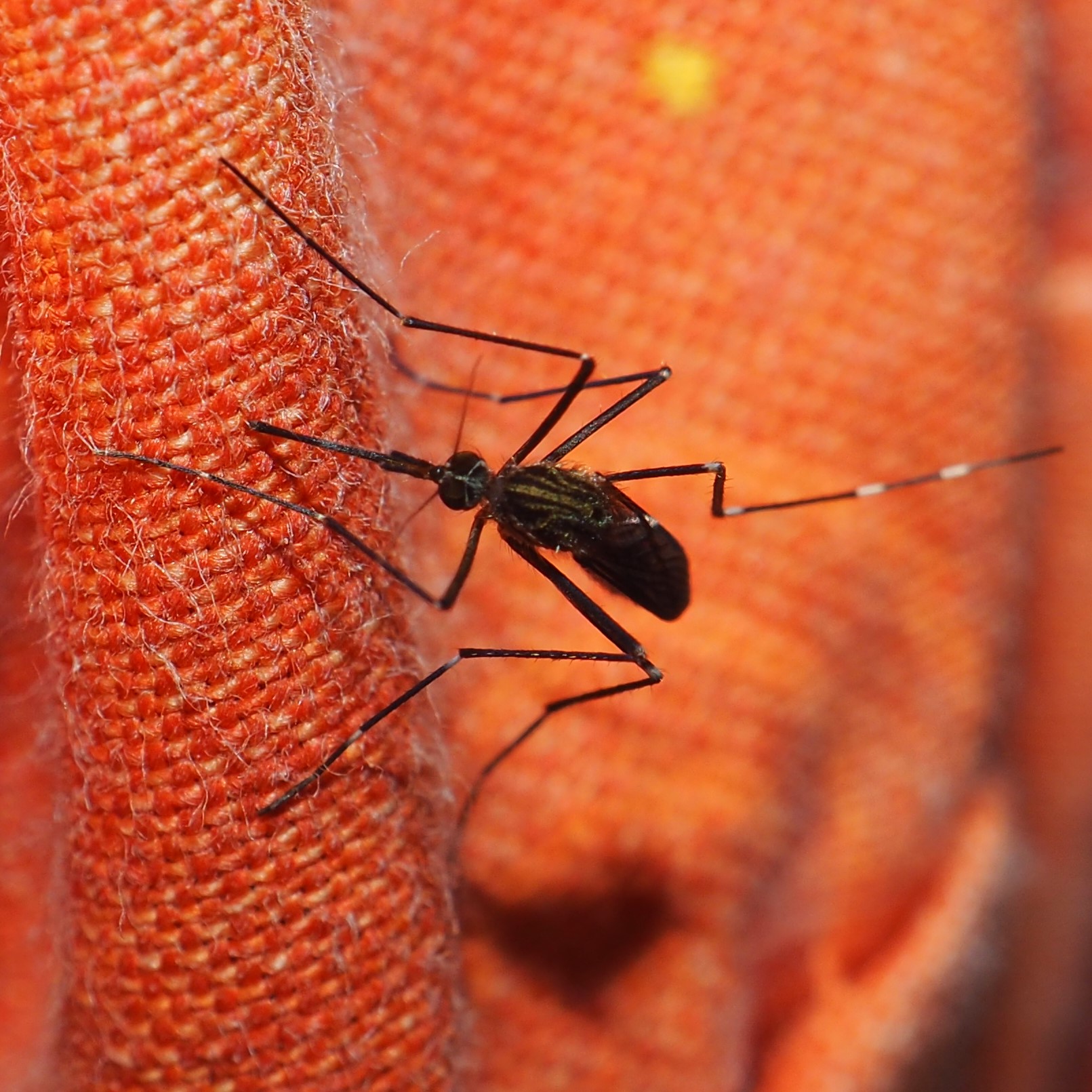
This is about the place where I usually suggest a walk in the flowers. Trouble is that our flowers are a bit down at this point. We're almost to the point where the Asters begin to bud up, the Goldenrod actually becomes golden, and the Japanese Anemones start their yearly show. So I'll have to go with what we've got. Here is a picture of the Zinnias taken from end to end in the Deck Box. Then the little flowers on Chaim's tomato garden. Last, the Spiderworts won't give up!



Here are the buds on some cultivated Phlox that has held its own under the Big Redbud Tree. Second, the goldenrod is getting yellower and yellower but still with not much action towards opening. And the Annual Fleabane is still going.
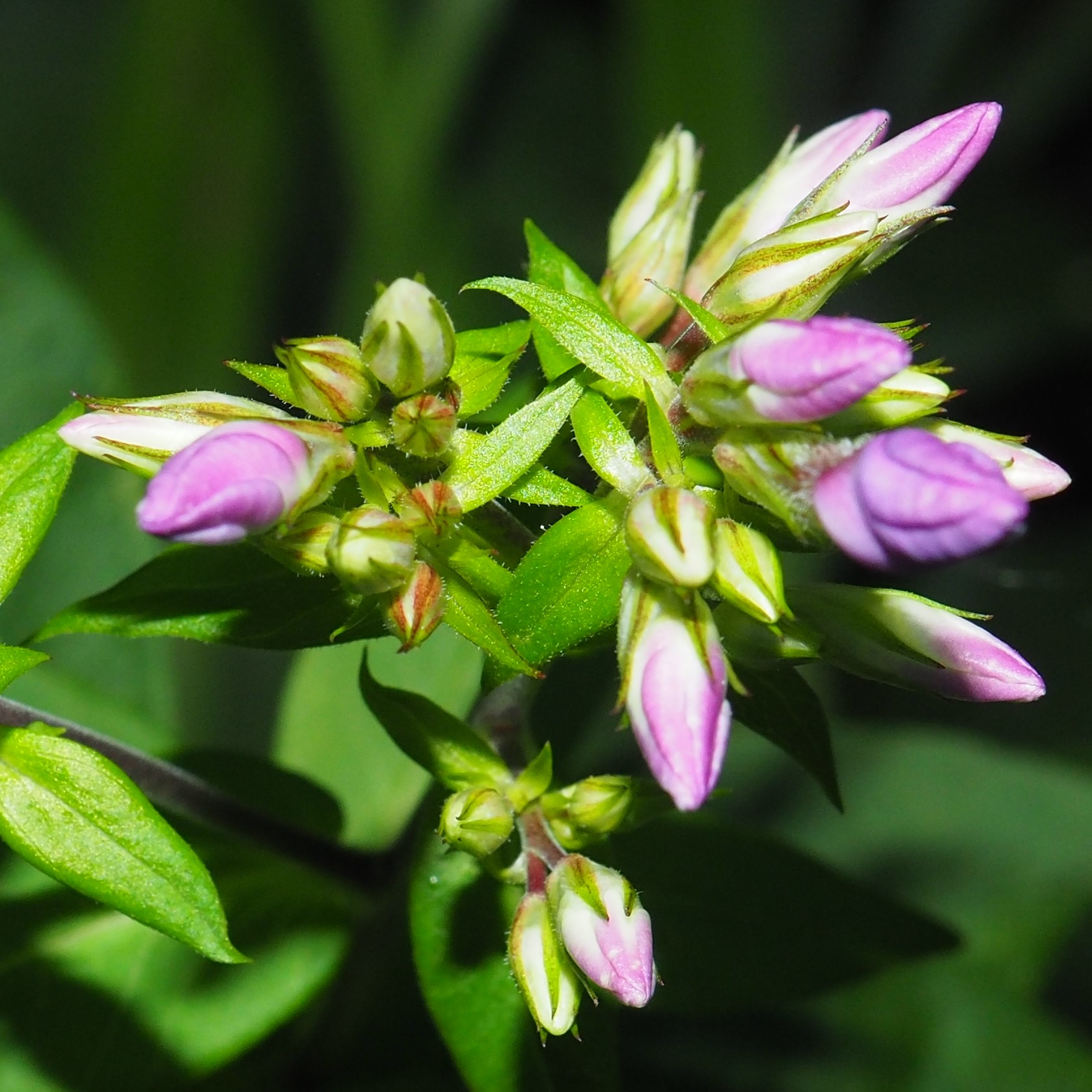

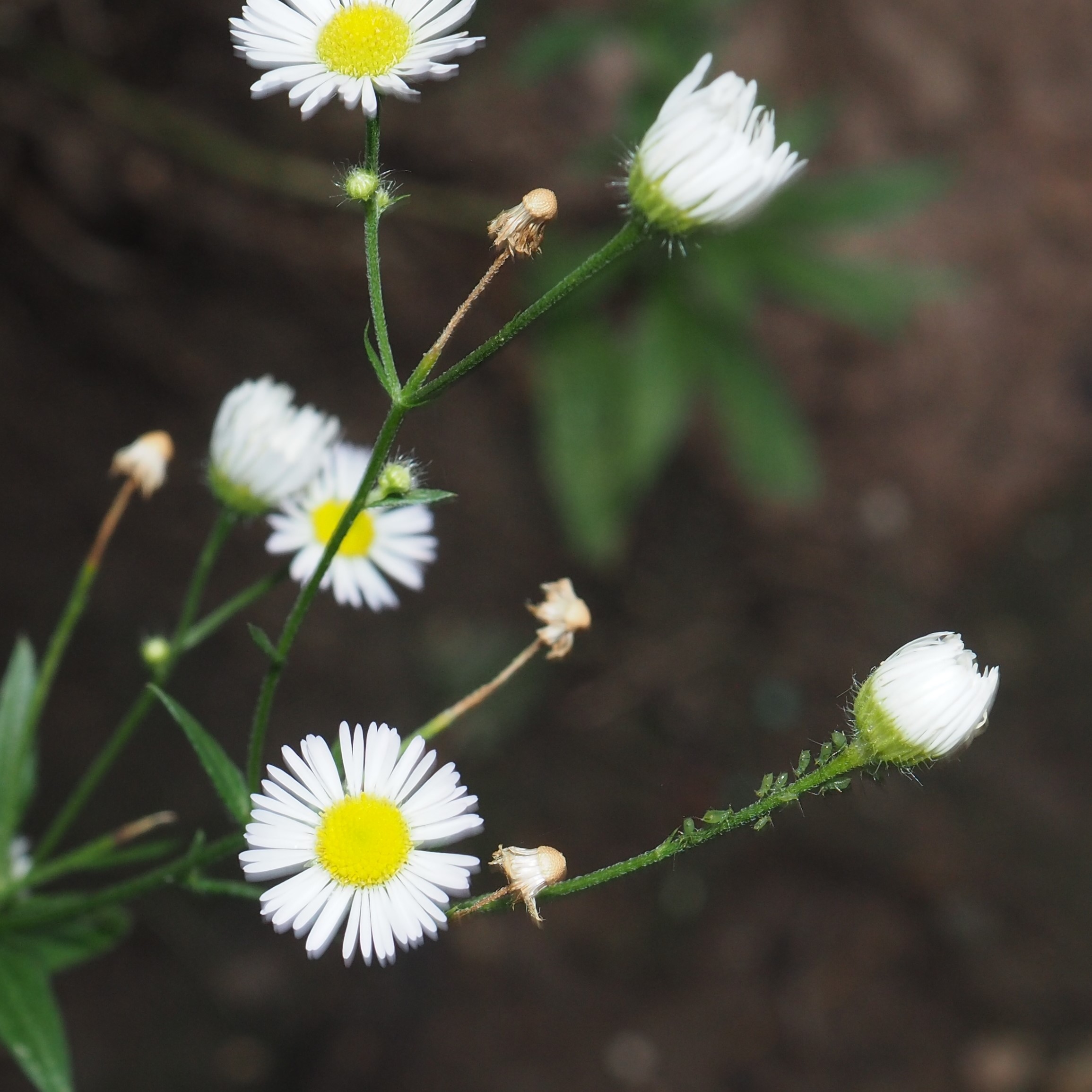
We had quite a few new Moths (new in the sense that I never saw or noticed them before). I do have names for the first two: Homosetia argentinotella and the Aster Tentiform Blotchminer, Acrocercops astericola. But, sorry, I don't have the third yet.
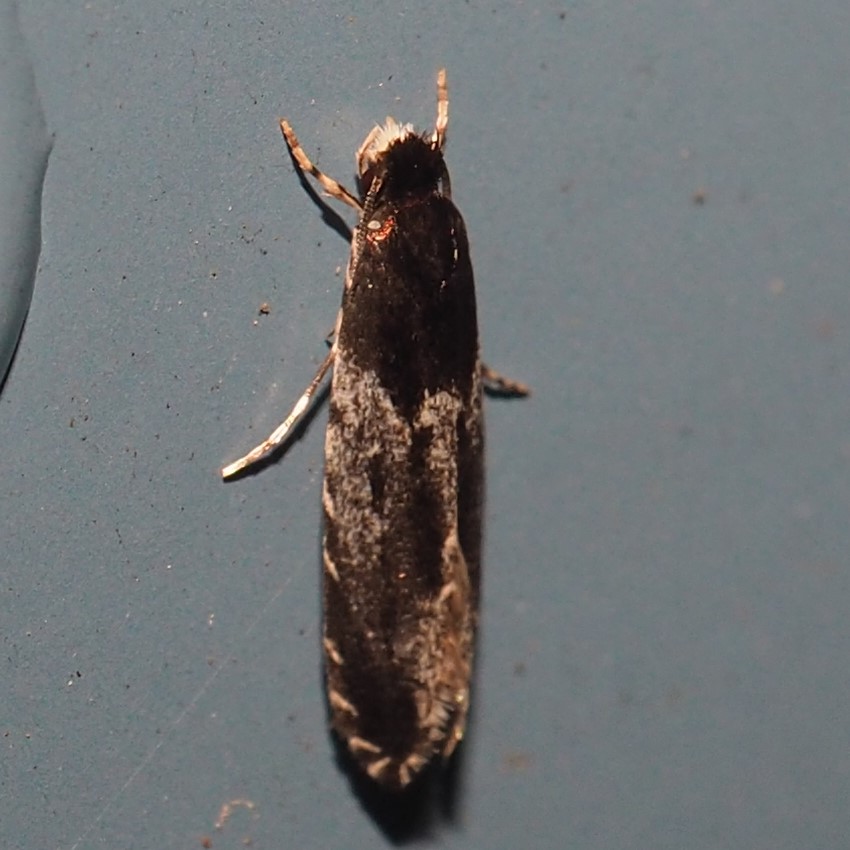

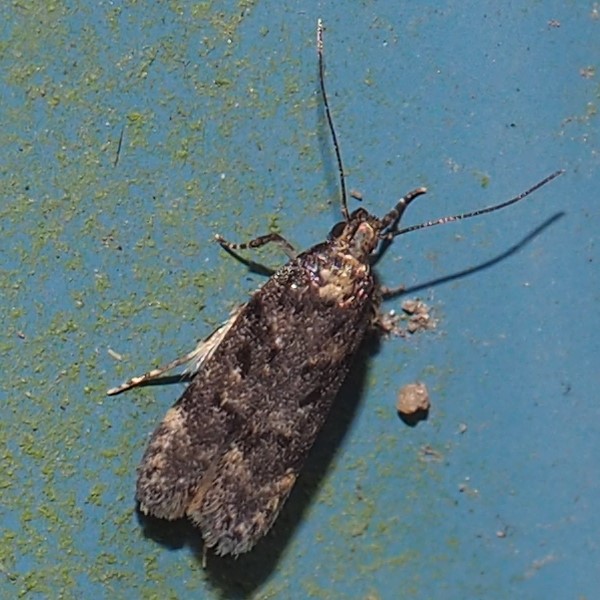
Three more moths that I don't have the names of yet.
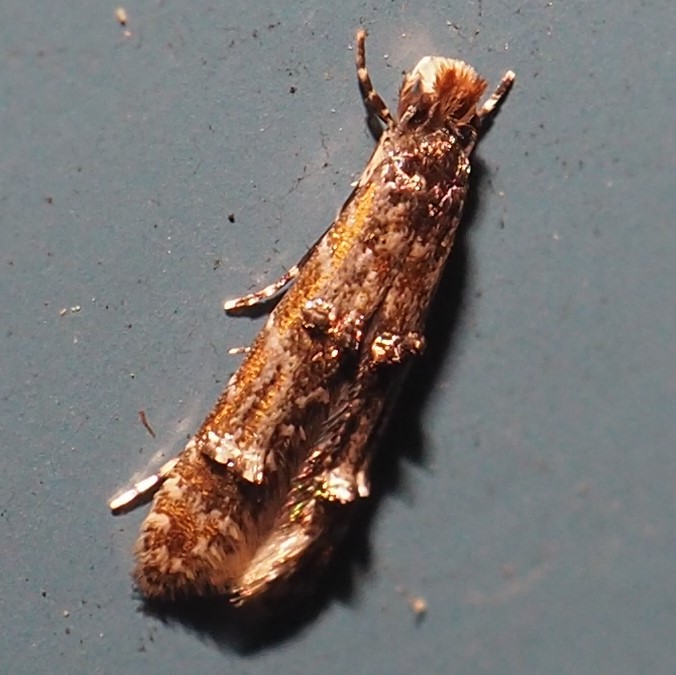
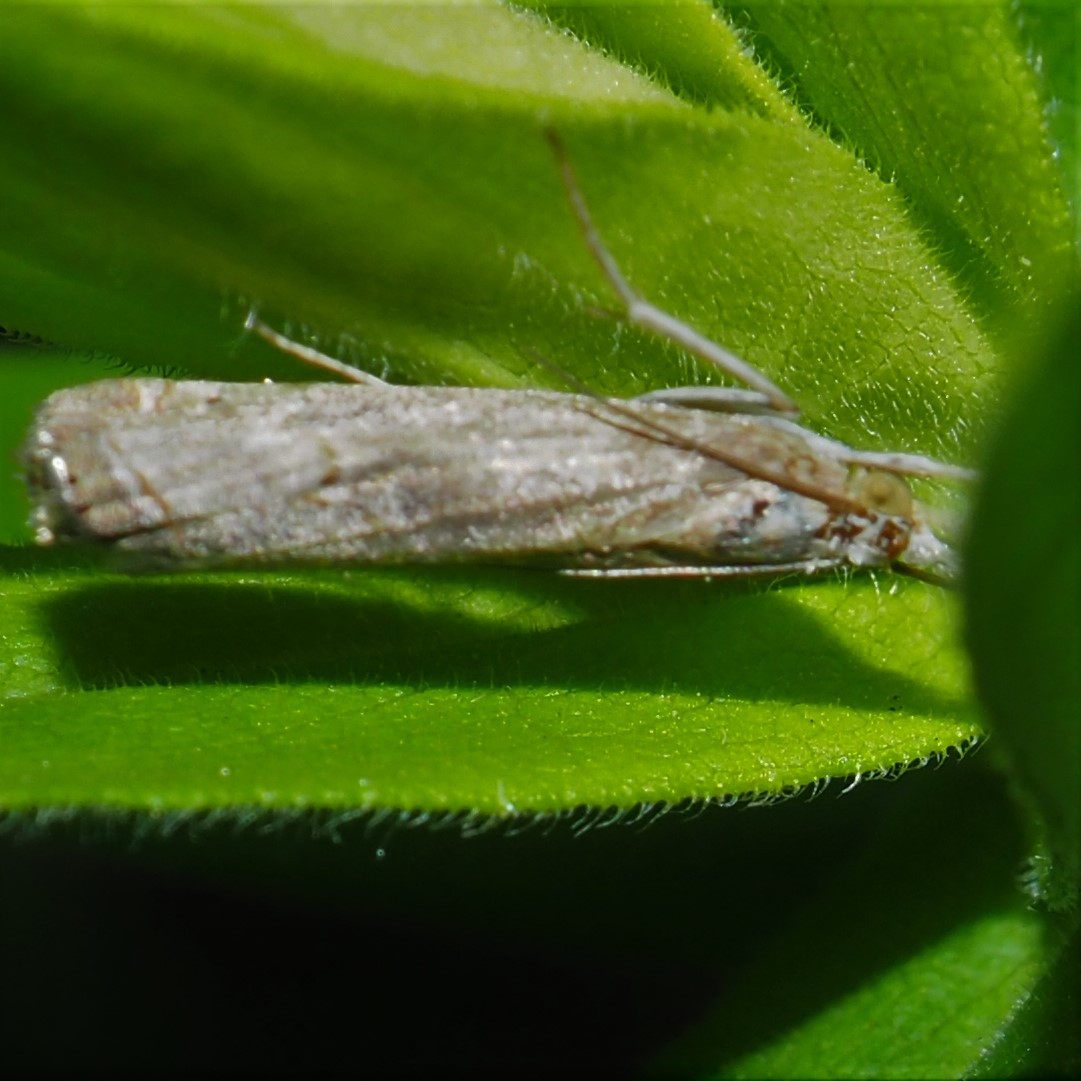
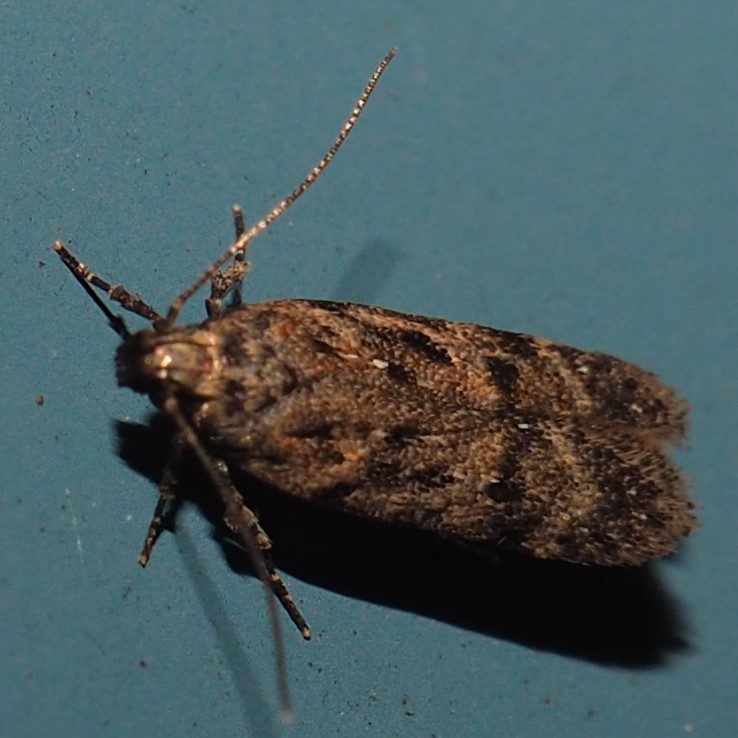
Moving towards the Spiders, here are three Harvestmen: one black on white; one black on red; and one brown on lighter brown. These are named based on my novice-hood in the field of Harvestmen, and it may be that the two latter ones are actually the same.
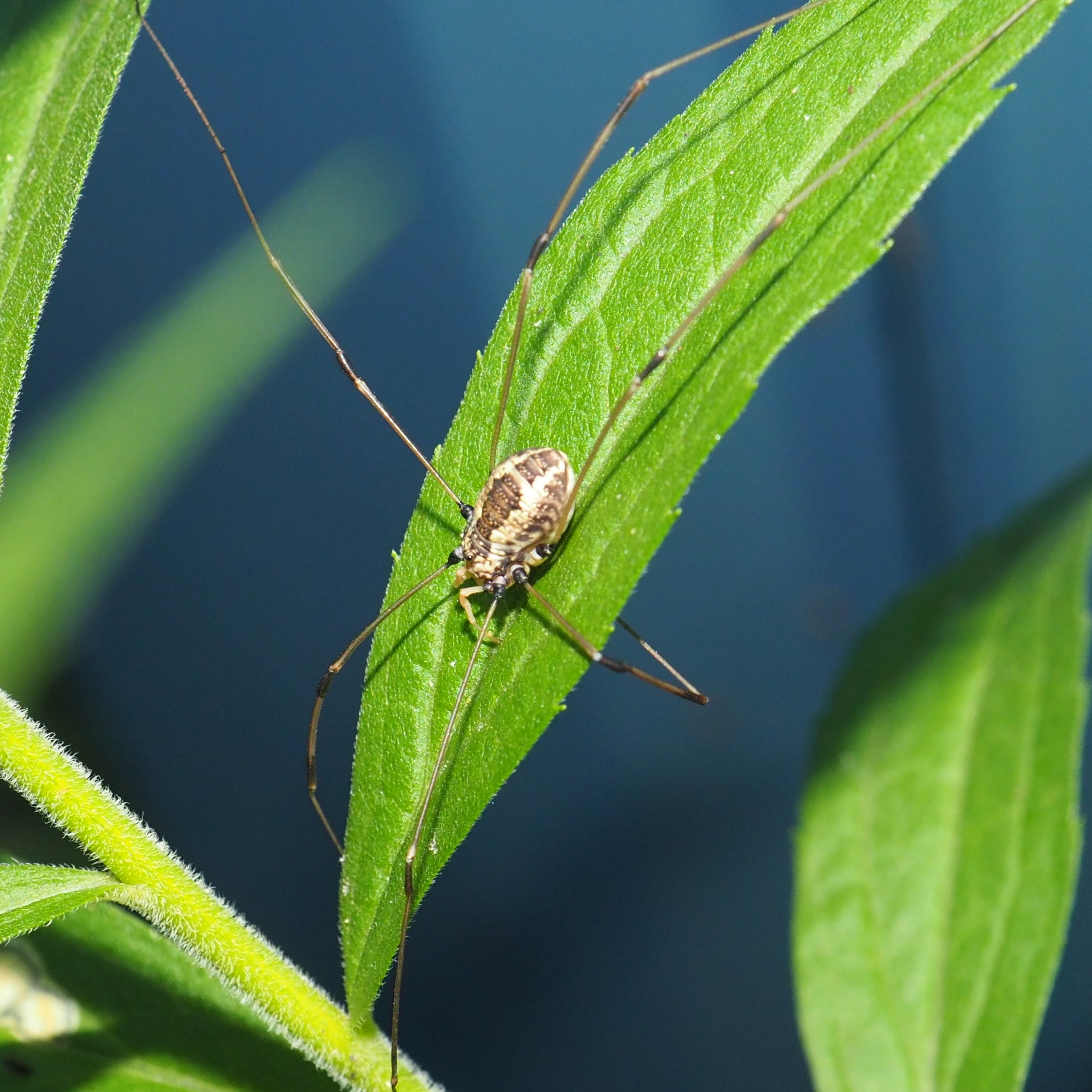

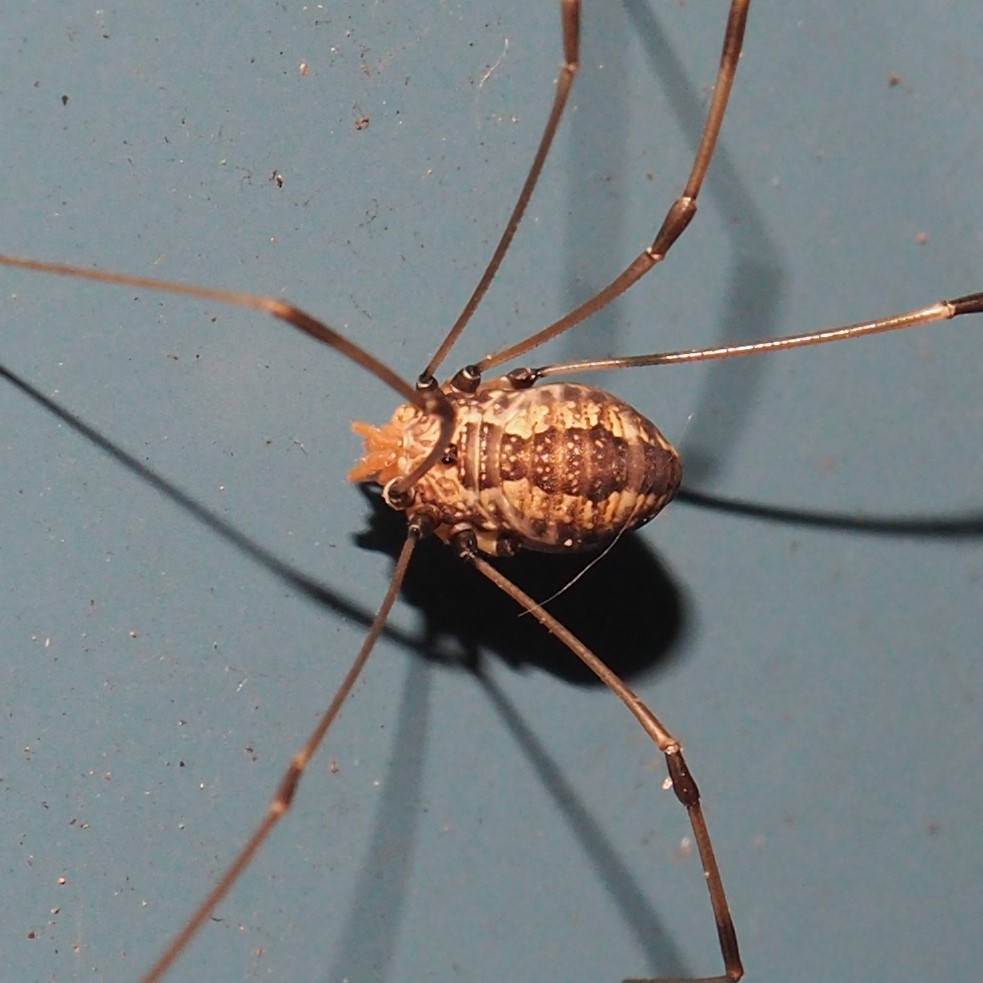
This is the place where I have started to show off the Orthoptera: Crickets, Grasshoppers, and Katydids. But this week I only found one such Orthopteran: a Two-spotted Tree Cricket. It's too soon to have spots, but it has the right shape: an elongated and slender body and tail. A couple more outliers: a) The scorpionflies are here to stay. And b) Something we haven't seen for several months: a Summer Springtail, Tomocerus vulgaris. I was so surprised to see it.
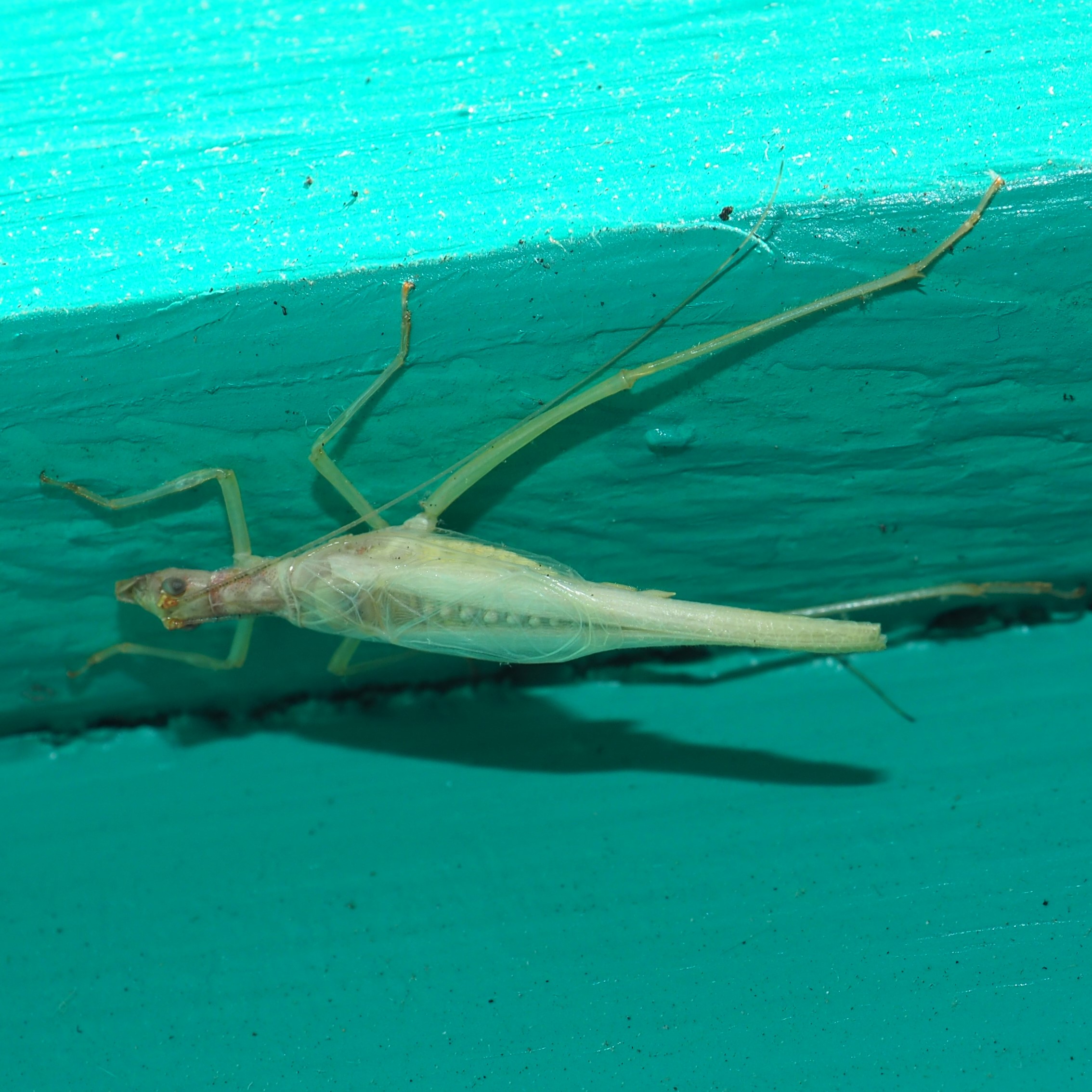

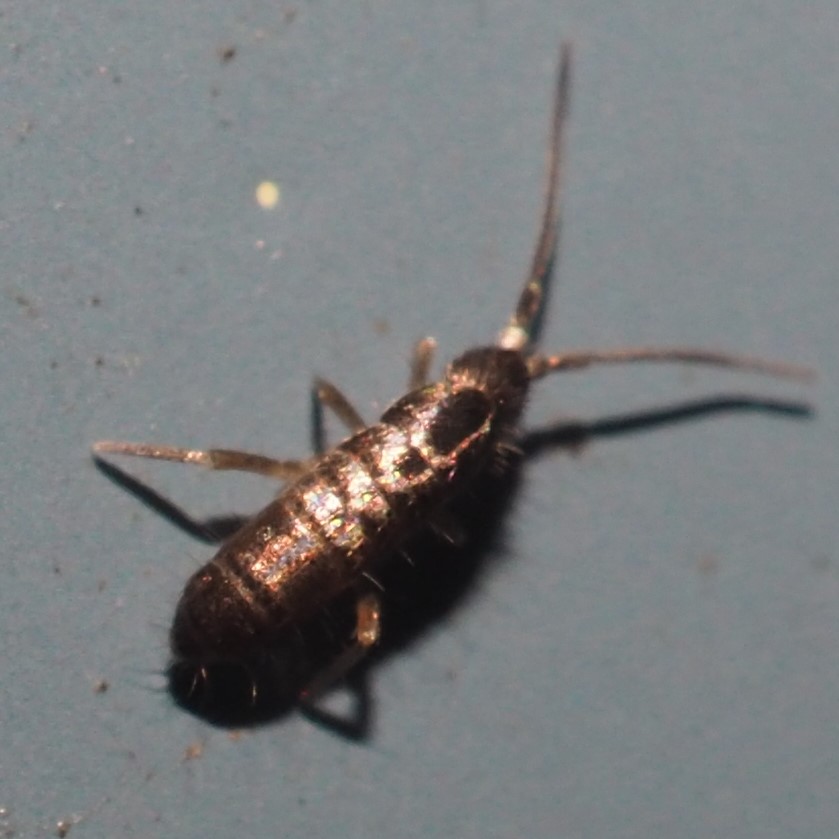
And now for the Spiders! First two pictures: a Cellar Spider, genus Pholcus. And, from the front porch wall, a Common House Spider with an egg case exploding with babies!
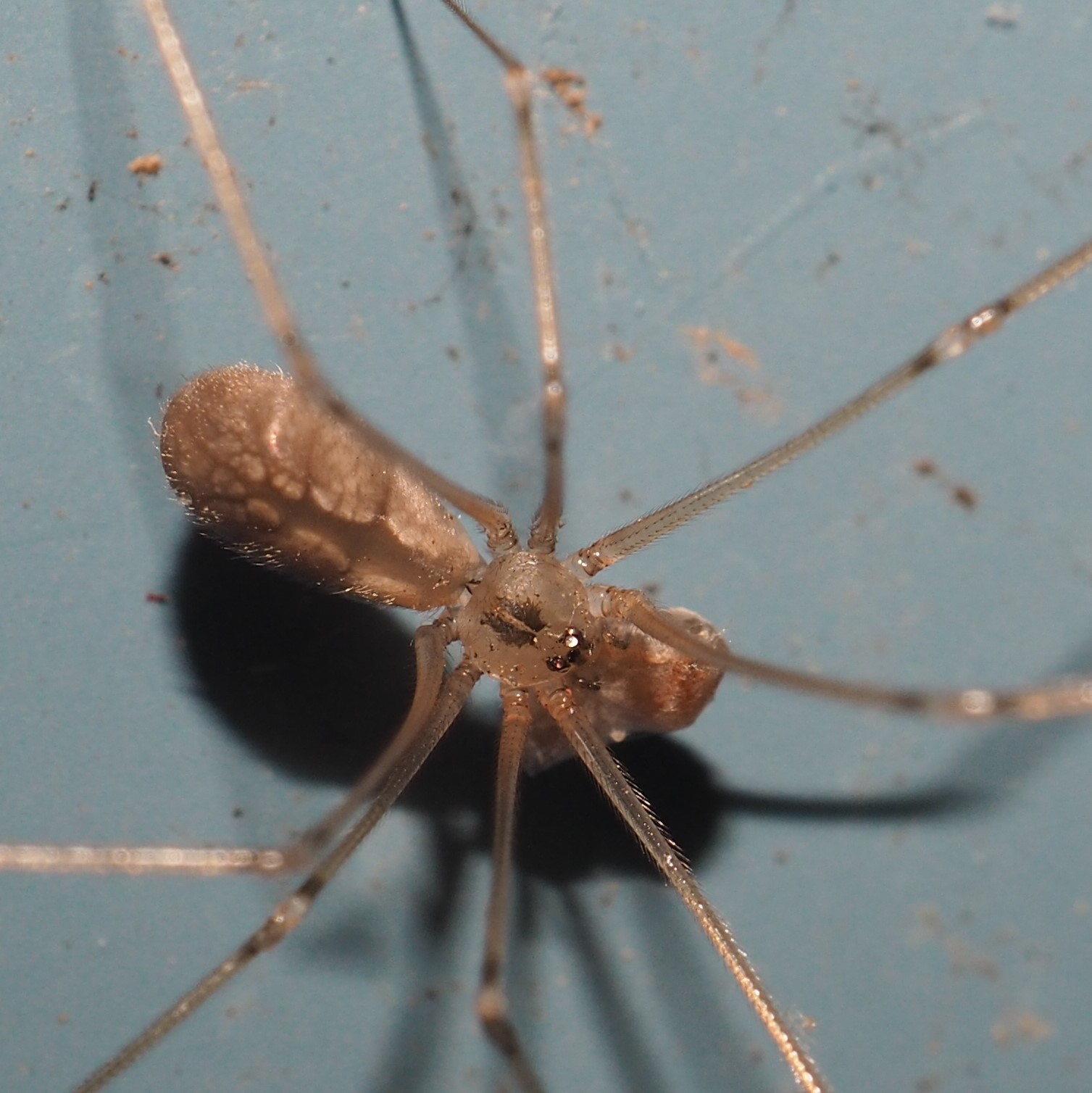

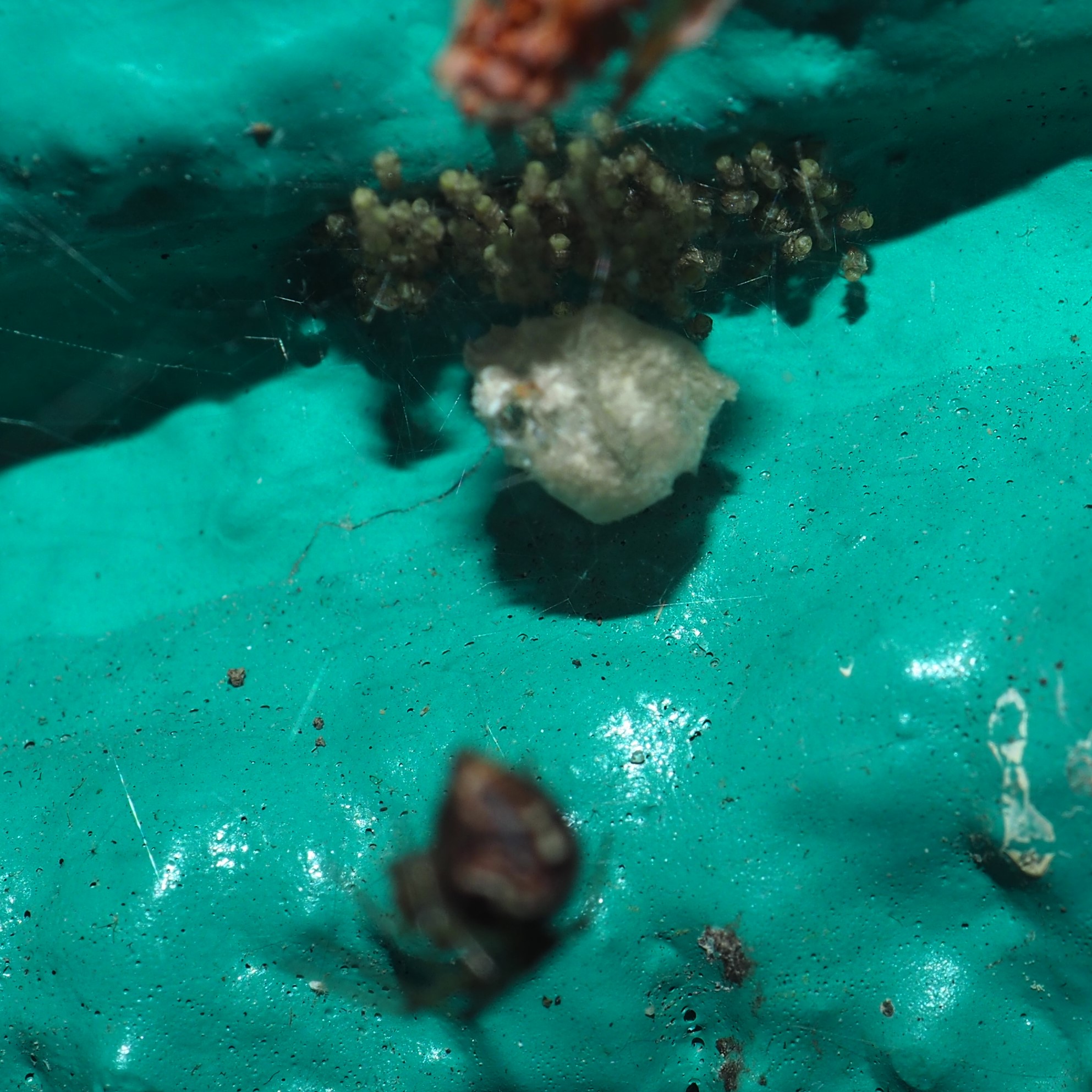
I had lots of views of a couple of Cobweb Spiders - they were so photogenic and hogged the camera!
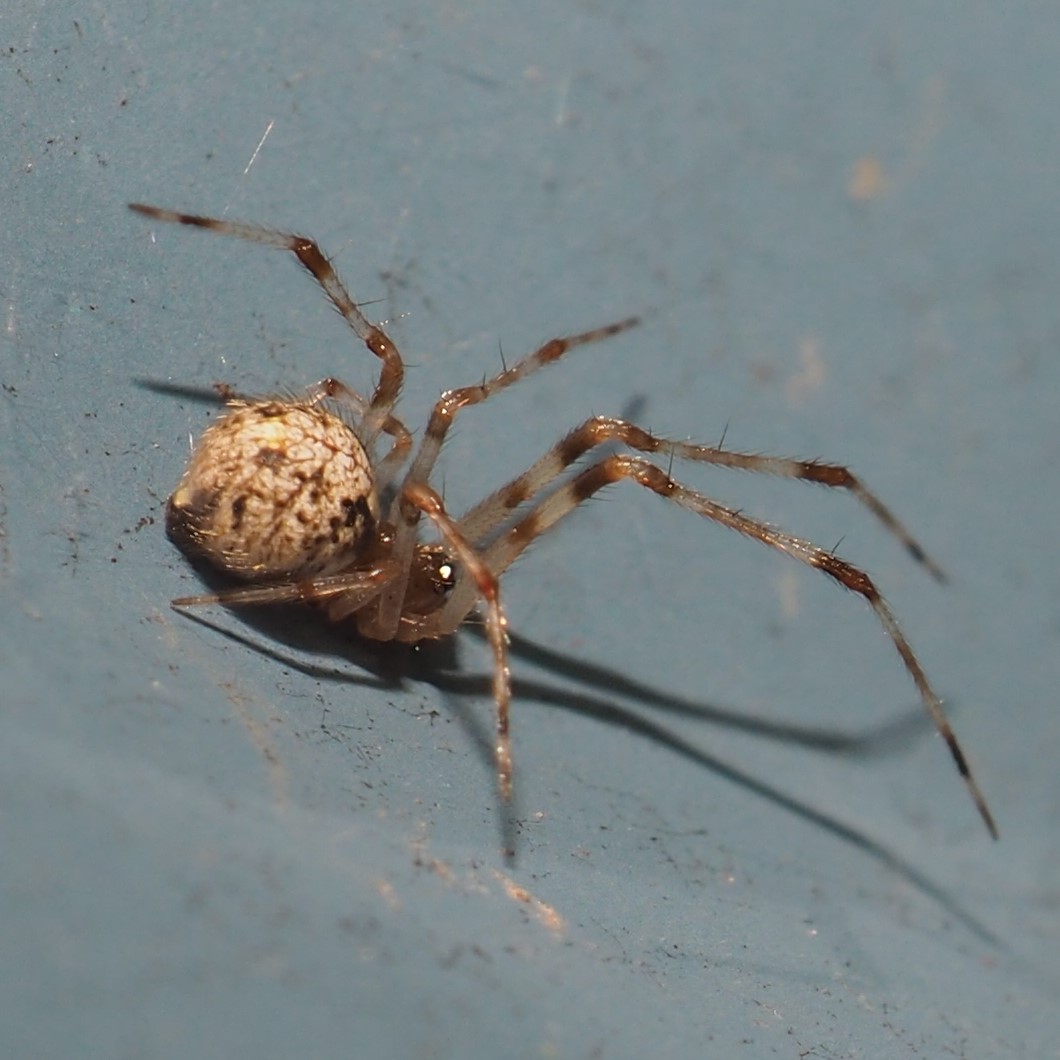
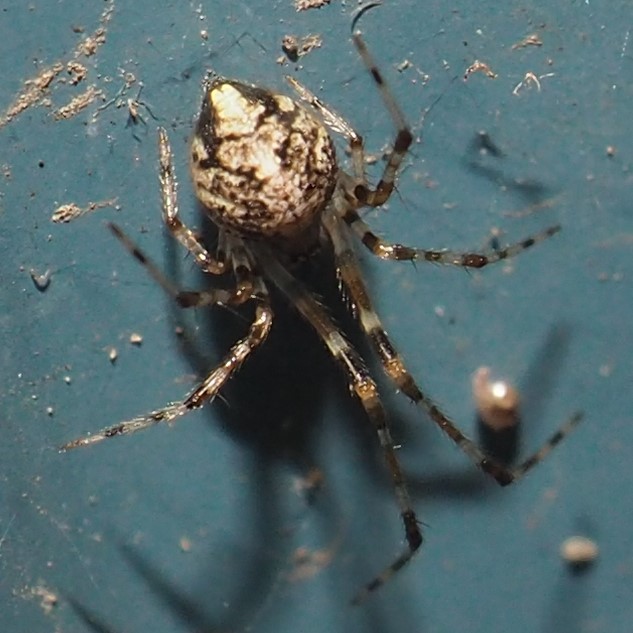
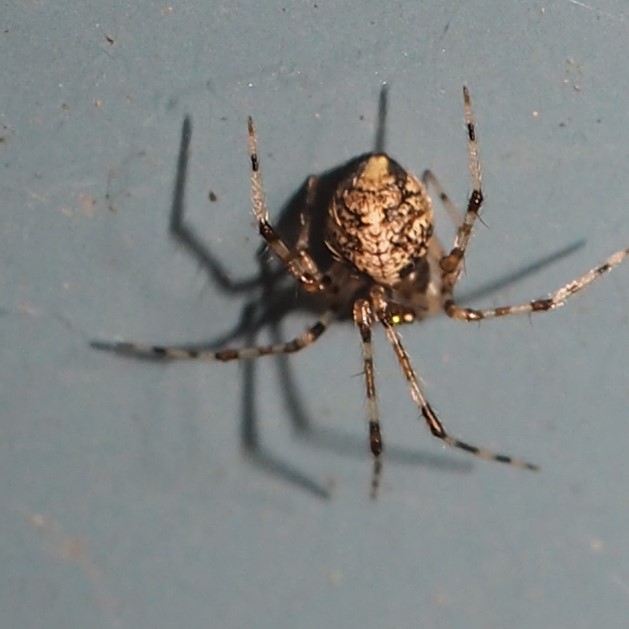
Even more frequent were the lovely little Crab Spiders. Most of them seem to be of genus Mecaphesa.
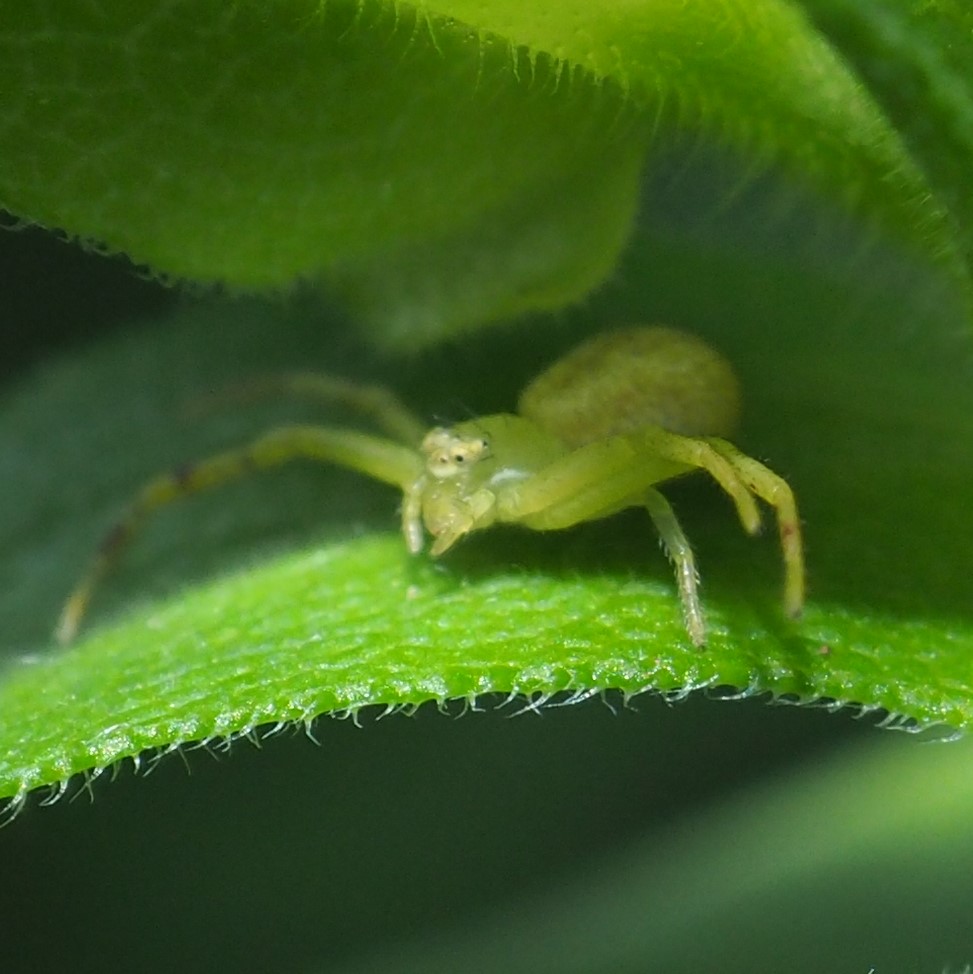
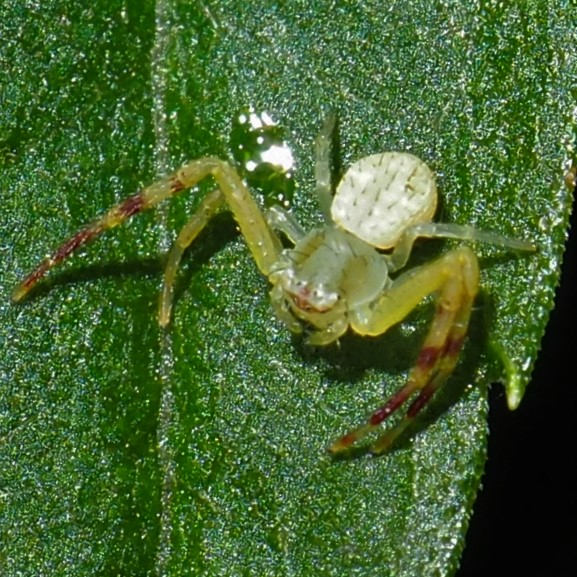
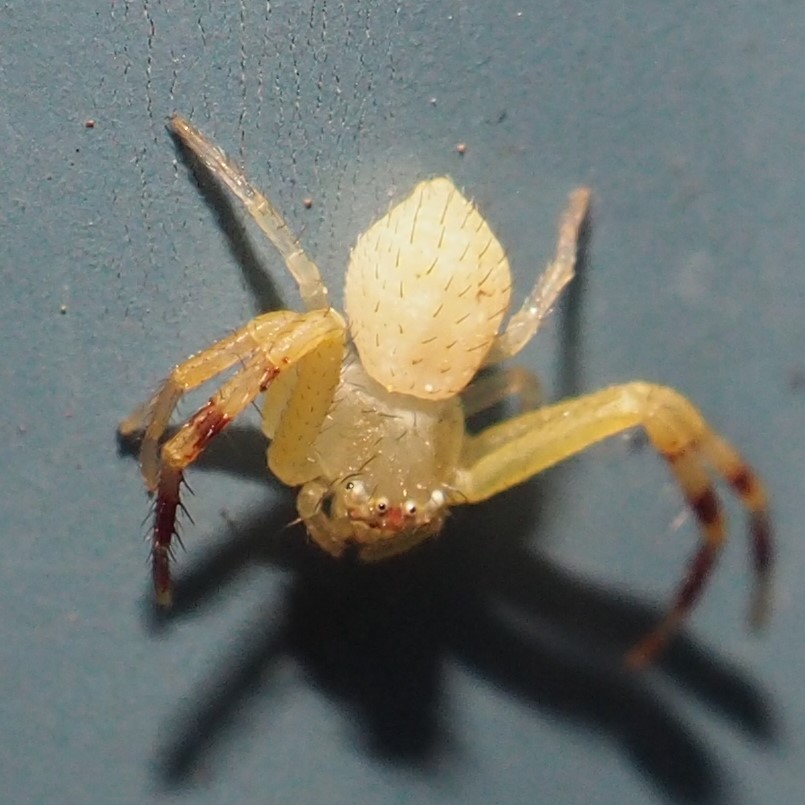
A good place to look for little spiders is in the little leaves near the bud of a flower, especially in the asters or goldenrod (as in these pictures).
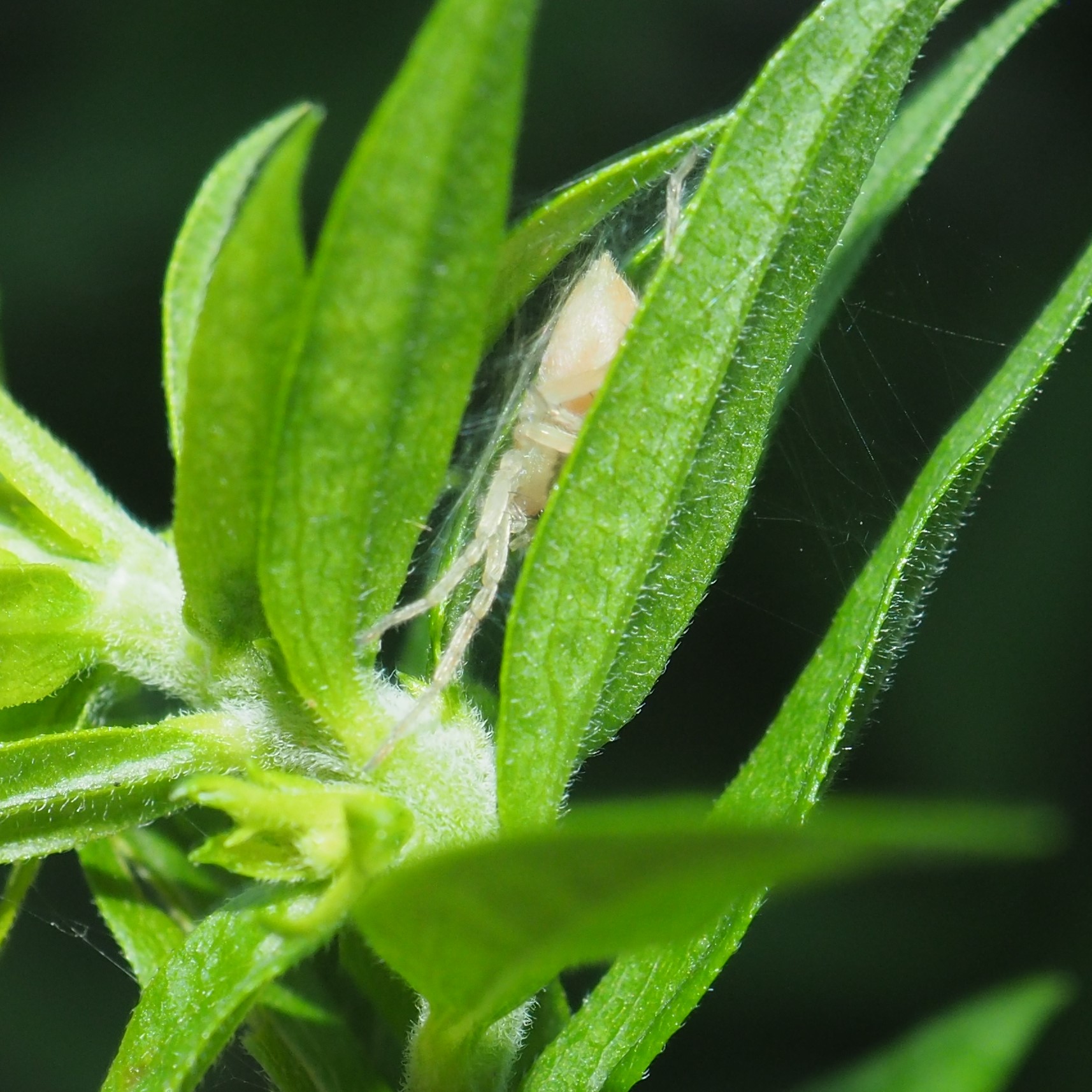
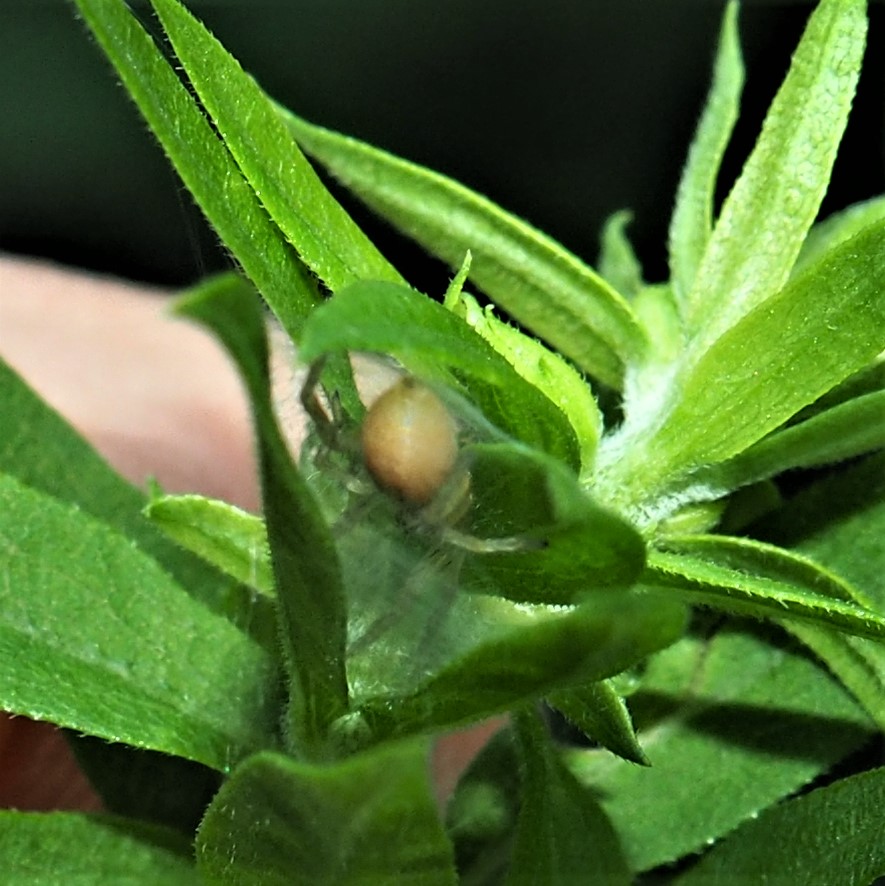
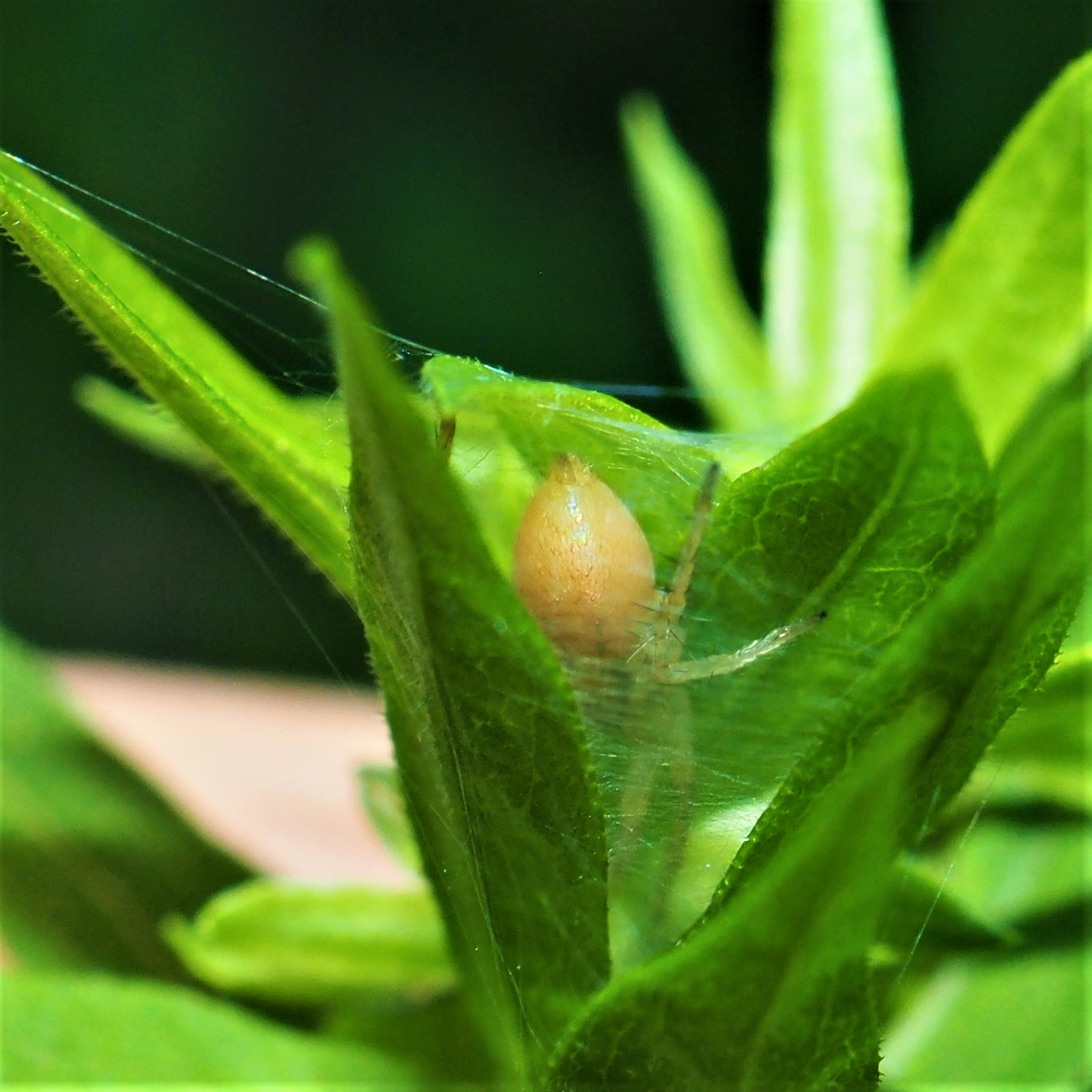
We had some lovely Wasps. I'm always shocked when a difficult Fly turns out to be a new Wasp. This one had huge eyes, sort of floppy-looking, not nice and compact and round like most Flies'. It turned out to be an Encyrtid Wasp of genus Microterys. We have had those, even recently, but this one was different. Only when I visited BugGuide did I remember that I'd had one of these in 2019!

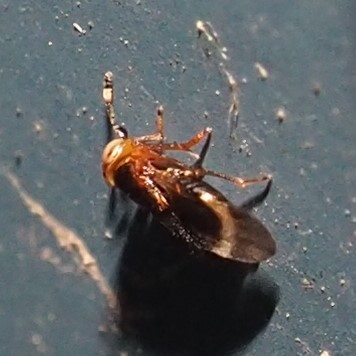
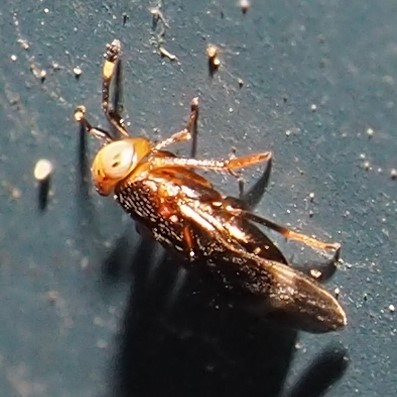
Some of these wasps, like these members of the family Torymidae, are iridescent and full of colors. How lovely! I'm hoping that when the Goldenrod cafe opens up that I will get more chances to see this kind of wasp.
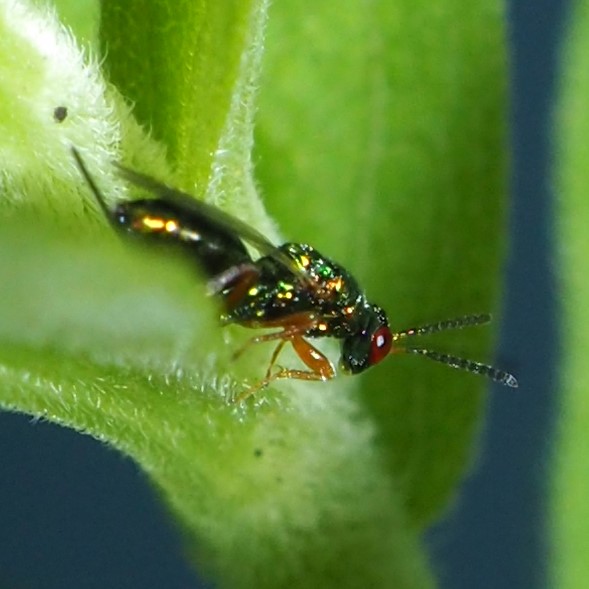

Many of the prettier wasps are Ichneumonids. You can recognize the females of these species by their sometimes very long ovipositors. The first one here is one species (or at least one observation) and the next two are another. One way to tell is to note that the first lady's ovipositor is almost exactly her own body length!
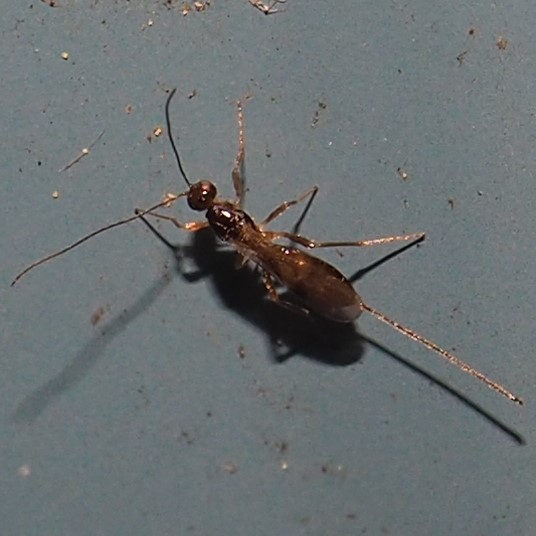
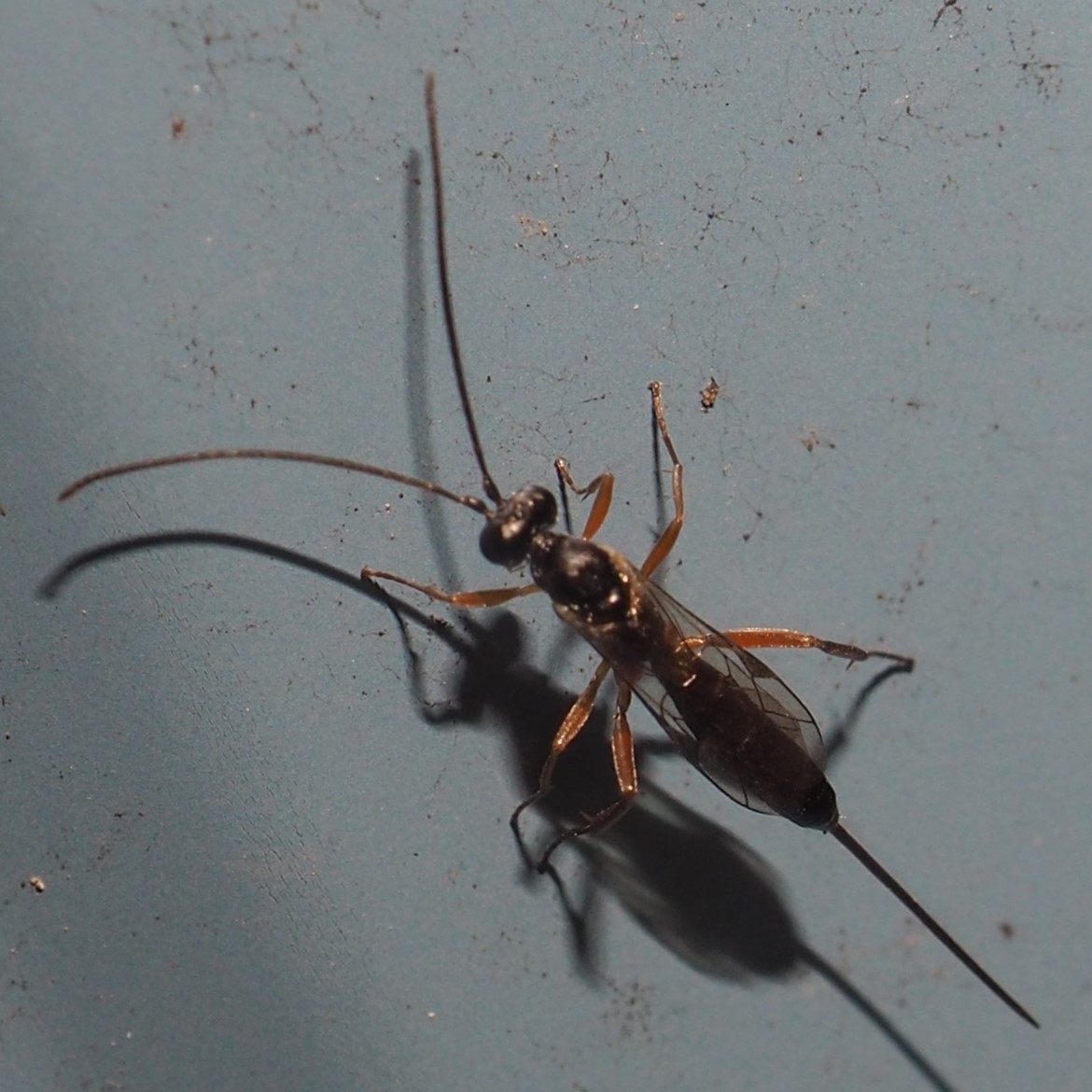
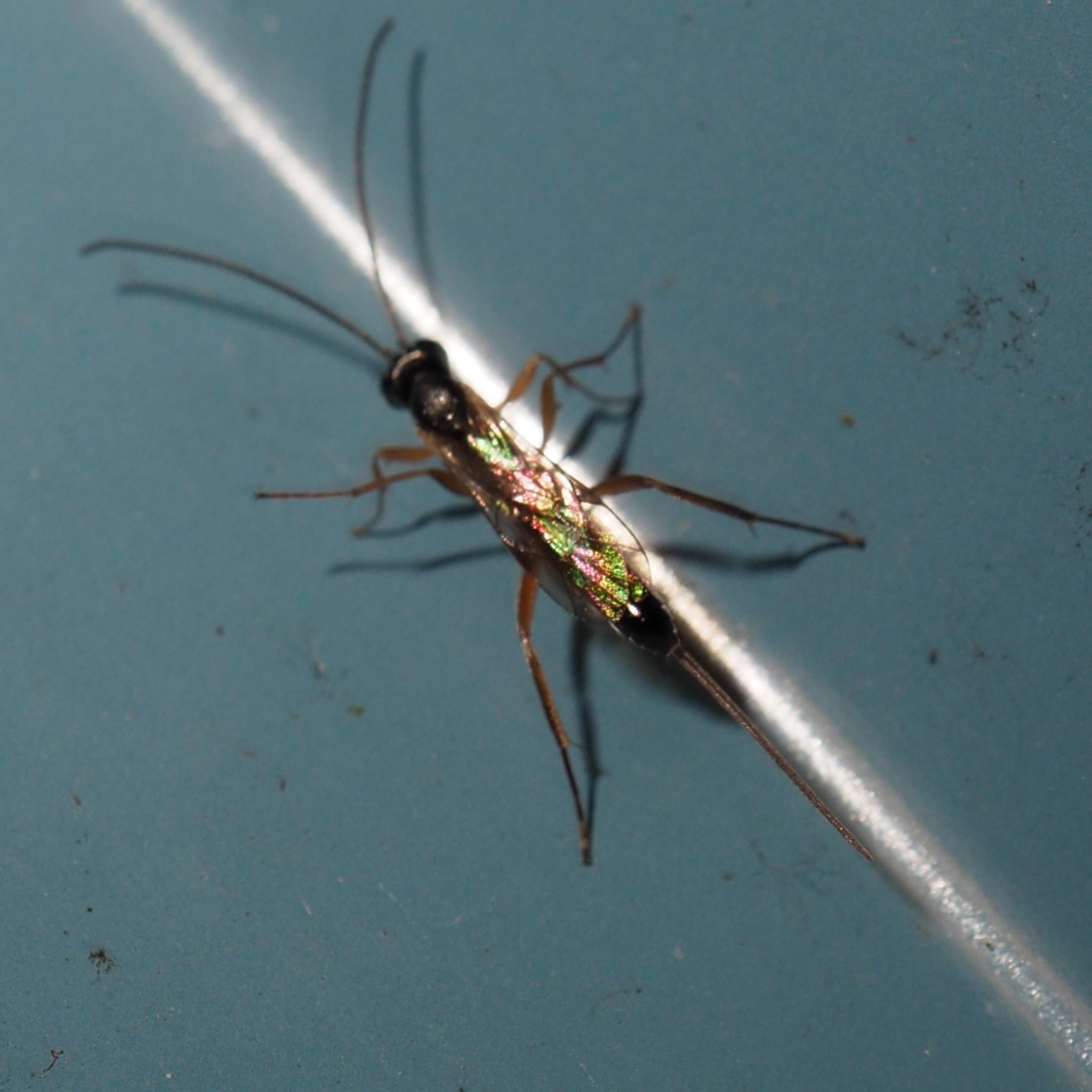
But I do have some pictures of the fishes feeding in the apparently mended shallow end.
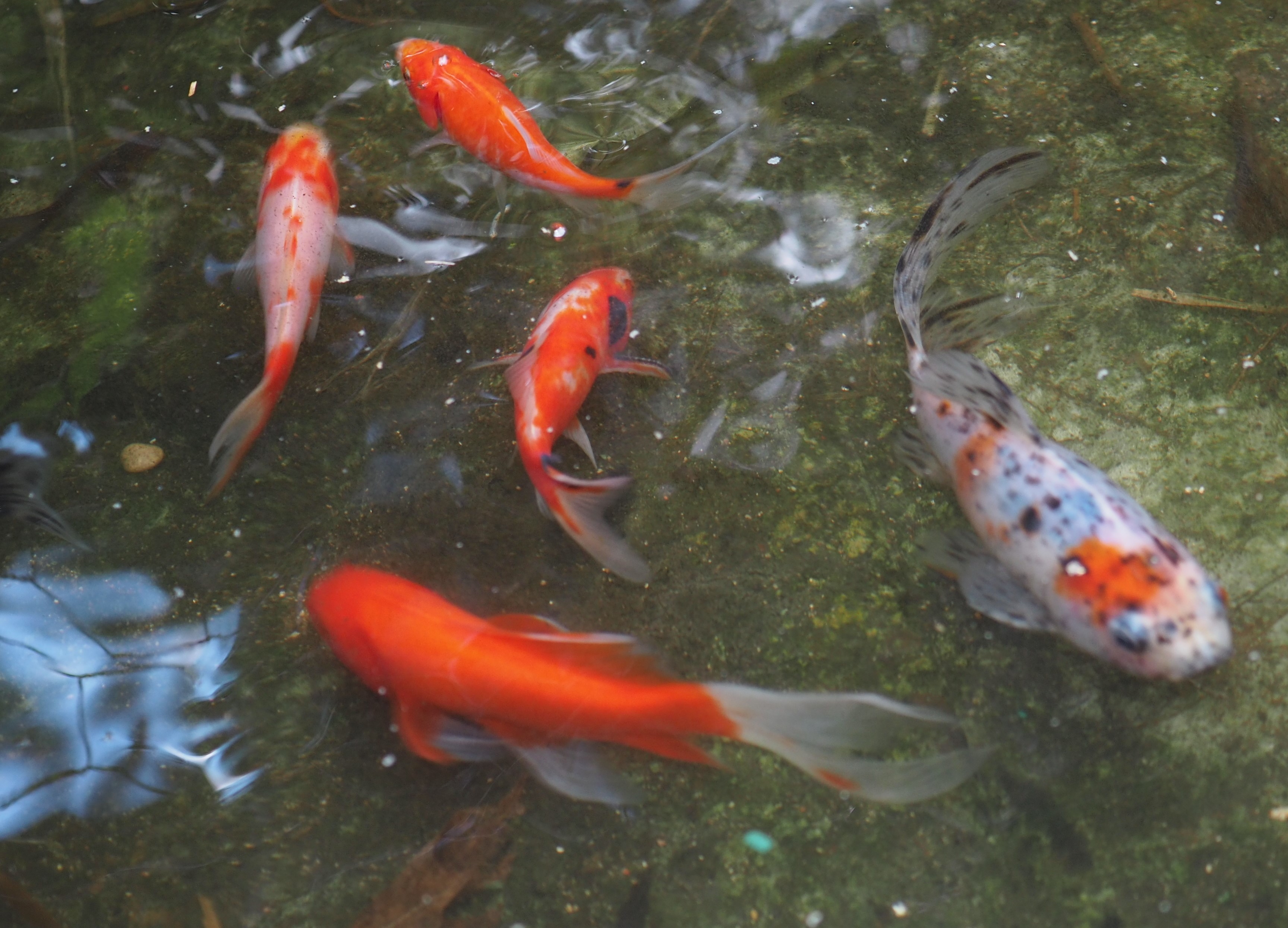
So once again, I'm hoping you are all as healthy and happy as possible. I've been thinking about possibly having a Zoom Birthday, or maybe a few Zoom sessions, around the 26th. Anyone interested?
Love, Martha
Back to August 2, 2020
Forward to August 16, 2020
Back to main menu
copyright Martha O'Kennon 2020













.jpg)
















































































 8 3 20 1.jpg)
 8 3 20 2.jpg)
















































